






MALLORCA GLOBALMAG
Edición invierno 2022-2023
Depósito legal PM1490-2019
Edita: Amapola Comunicación, S.L. Dirección: Calle Son Armadans, nº 10. Palma. CP: 07014. España. www.mallorcaglobalmag.es www.mallorcacaprice.com www.mallorcaglobal.com f @mallorcaglobalmag f @capricemallorca l @mallorca.caprice Teléfono: +34 971 89 63 89 Email: contacto@mallorcaglobal.com
Editor y Director / Editor and Director: José Eduardo Iglesias. joseiglesias@mallorcaglobal.com.
Directora de Marketing y Publicidad / Marketing and Advertising Director: Elena Ordinas. elena@ mallorcacaprice.com.
Redactores / Editors: Virginia Servera (v.servera@ mallorcaglobal.com) Raúl Beltrán (r.beltran@ mallorcaglobal.com), Piter Castillo (p.castillo@ mallorcaglobal.com).
Fotografía / Photography: Pep Caparrós, Mallorca Global.
Fotografía de portada / Cover Photo: Pep Caparrós.
Agentes de Marketing y Publicidad / Marketing and Advertising Agents: Katarina Madarova. Diseño y maquetación / Design and Layout: Alejandro Sánchez.
Traducción / Translations: Raúl Beltrán, Interpreter’s Boutique.
Impresión / Print: Loracar, S.L.
Distribución / Distribution: Distribuidora Rotger, Angel24, Mallorca Global.

© Mallorca Global Mag (www.mallorcaglobalmag.es) es una publicación independiente editada por Amapola Comunicación, S.L (www.mallorcaglobal.com). Los derechos sobre los contenidos de esta publicación (textos, gráficos, fotos, diseños, etc.) pertenecen a Amapola Comunicación, S.L. Está prohibida la reproducción total o parcial de los contenidos de este ejemplar, en cualquier tipo de soporte, sin la autorización escrita del editor.
OPINIÓN / OPINION
Tiempos de agitación, viva la fiesta, por José E. Iglesias Times of agitation, long live the party, by José E. Iglesias
¿Por qué tenemos comportamiento moral (a veces)?, por Camilo José Cela Conde Why do we (sometimes) have moral behaviour?, by Camilo José Cela Conde
Voom Voom, por Eduardo Jordá Voom Voom, by Eduardo Jordá
PRIMER PLANO / FOREFRONT
Palma se reinventa Palma reinvents itself
La otra cara de Palma The other side of Palma
OPINIÓN / OPINION
Palma, de la Gerreria al Terreno: dos errores urbanísticos, por Carlos García Delgado Palma, from the Gerreria to the Terreno: two urban planning mistakes, by Carlos García Delgado
GENTE GLOBAL / GLOBAL PEOPLE
VOCES / VOICES
FORTUNAS DE BALEARES / BALEARIC FORTUNES
TECNOLOGÍA / TECHNOLOGY
“Los hackers que atacan a la NASA también lo hacen a la cuenta de un estudiante” "Hackers who attack NASA also attack a student's account"
TRAYECTORIAS / CAREERS
Diego González: “La A de arte es una estrategia de desarrollo futuro” Diego González: “The A for Art is a strategy for future development"
CRÓNICA / CHRONICLE
La expulsión de los dominicos de Mallorca, por Bartomeu Bestard Cladera The expulsion of the Dominicans from Mallorca, by Bartomeu Bestard Cladera
MEDIO AMBIENTE / ENVIRONMENT Mallorca recicla Mallorca recycles
Dime cómo vistes y te diré lo que consumes Tell me how you dress and I'll tell you what you consume
OPINIÓN / OPINION
Más allá de las coincidencias, por Antoni Riera Font Beyond coincidences, by Antoni Riera Font
Miedo, por Margalida Gili Fear, by Margalida Gili
TENDENCIAS / TRENDS
Aplauso real, por Elena Ordinas Royal applause, by Elena Ordinas

Fang Ji, presidente de la Asociación China de Baleares


Fang Ji, president of the Chinese Association of the Balearic Islands
ESTILO / STYLE
Carolina Cerezuela: “Hay demasiado foco en la estética”
Carolina Cerezuela: "There is too much focus on aesthetics"
El veggie boom y la conciencia emergente de la sencillez The veggie boom and the emerging awareness of simplicity
Hacia un etiquetado ‘saludable’ y ‘sostenible’ de los alimentos europeos, por Andreu Palou
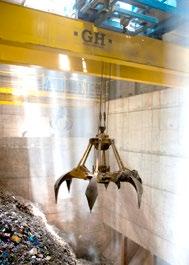
Towards ‘healthy’ and ‘sustainable’ labelling of European foods, by Andreu Palou
GUÍA DE RESTAURANTES / RESTAURANTS GUIDE
SALUD / HEALTH
Ecoansiedad: la huella psicológica del calentamiento global Eco-anxiety: the psychological footprint of global warming
El invierno, temporada de surf en Mallorca Winter, surfing season in Mallorca

Runners mallorquines en NY Mallorcan 'Runners' in NY
COMUNICACIÓN / COMMUNICATION
Lujo y tecnología, por David Arráez Luxury and technology, by David Arráez
Solimán López: “Los NFT van a estar en todos los lugares; todo va a estar tokenizado”
Solimán López: "NFTs are going to be everywhere; everything is going to be tokenised"
Victoria Morell, cineasta: “Sigo teniendo un rechazo muy grande hacia mi cuerpo que no he podido superar con los años”

Victoria Morell, filmmaker: "I still have a great rejection of my body that I have not been able to overcome over the years"
Mallorca y sus guitarras, por Carlos Garrido Mallorca and its guitars, by Carlos Garrido
ESCENA
Vilafranca, la mágica historia de sembrar cultura Vilafranca, the magical story of sowing culture
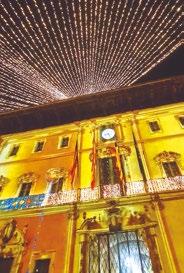
LIBROS / BOOKS
La venta de literatura infantil y juvenil se dispara y el libro digital se estanca
Sales of children's and young literature soar, digital books stagnate
AGENDA / EVENTS
ANUARIO 2022 / YEARBOOK 2022
Vivimos tiempos de agitación y euforia. Tras la pandemia y los confinamientos, la gente se ha lanzado a la calle con una decisión inusitada, a pasear, a hacer deporte, compra, llena restaurantes y toma copas. Gasta. Estamos en una época de alta actividad. Viajamos, adonde sea, como nunca antes. El tiempo parece escurrírsenos entre los dedos de las manos. Y no nos perdemos ninguna cita que nos atraiga, sea deportiva, cultural, social, aquí o afuera. No hay pereza. Las subidas de precios generalizadas, porque todo se ha encarecido sobremanera, no son un impedimento; se comenta, pero no frena la barahúnda a la que asistimos ciertos días y horas en Palma. Hay dinero porque ha habido ahorro pandémico y porque las administraciones están tirando la casa de todos por la ventana con subvenciones, regalos y aplazamientos de pagos para que la maquinaria funcione. Intentan aprender de los errores de la crisis de 2008, en que el cierre del grifo en la Europa de Angela Merkel no hizo más que agravar las vidas de los ciudadanos. Ahora las crisis se viven de otra manera. Que estemos a la vuelta de elecciones influye lo suyo, claro, pero el gasto apenas se critica porque con el precedente de la Gran Recesión, quién se atreve a levantar la bandera de la austeridad.
De aquella Palma quieta de hace tan solo unos lustros, que desaparecía los sábados y domingos, estética pero estática, a la de hoy, ha cambiado todo. Antes de la pandemia ya había empezado la
metamorfosis, cuando a los comerciantes se les ocurrió abrir las terrazas con el beneplácito de algunas administraciones públicas, aunque haya habido quienes las han querido volver a cerrar amparándose en una tradición mal entendida. Ese es parte del germen de lo que hoy es una capital activa convertida en polo de boyante actividad económica y de empleo, aunque también con bastantes incomodidades, gritona y algo amacarrada, con insoportables coches y motos a escape libre, y con grandes incógnitas de futuro.
La otra parte del germen es la pandemia. El sociólogo e investigador de Yale Nicholas Christakis sostiene que “al shock psicológico, social y económico del coronavirus sucederá un período en 2023, y más en 2024, un poco como los locos años 20 del siglo pasado; la gente, que ha estado encerrada, querrá salir a fiestas, a discotecas, restaurantes, eventos deportivos y recitales. Es posible que veamos algunos cambios en los comportamientos sexuales y habrá gente que gastará dinero, que consumirá”.
Esta aceleración social y económica, la gran riqueza de la Mallorca actual, trae cambios importantes a nuestras ciudades, sobre todo a la capital, que incidirán en la forma de vida de los palmesanos y residentes de días laborables. De este tema hablamos en el Primer Plano de esta edición: el proyecto del Passeig Marítim, el profundo cambio del Club de Mar, la nueva Gomila con su proyección sobre El Terreno, el complejo de s’Aigua Dolça, el Nou Llevant y algunos otros que hoy
desconocemos pero que se activarán al albur de los citados.
Inquieta que la mayor parte de lo proyectado suena a sobrevenido, con lo que se adivinan dificultades y angustias para los ciudadanos en el día a día. Son cambios abruptos que, según los precedentes, borrarán parte de las singularidades del tejido tradicional de Ciutat, como el comercio local, para reforzar el tránsito a las marcas globales de Madrid, Nueva York, Japón o Estocolmo. Otro paisaje que desemboca en otro paisanaje. Y eso puede no ser angustioso, pero empobrece y entristece.
El caso Cursach me ha recordado la película “La jauría humana” (Arthur Penn), peliculón de exquisita factura: un hombre se escapa de la cárcel y vuelve a su agobiante y deprimido pueblo, donde sus vecinos emprenden contra él una brutal cacería. El sheriff (Marlon Brando) quiere evitar su linchamiento.
No se conoce una cacería social más incisiva y efectiva que la del envidiado, temido y odiado Tolo Cursach y su grupo empresarial, en la que confluyeron empresarios -la gran mayoría competencia en su sector-, administraciones públicas con ganas de apuntarse tantos, prensa -con la que nunca se llevó bien el empresario - y, por contagio, algunos que se apuntan a las lapidaciones gregarias porque ‘algo oyeron’.

El delirante y agresivo papel del exjuez Penalva y del exfiscal Subirán como directores de la jauría
durante años es un fallo inadmisible del sistema judicial, como muy grave fue haber sido tomados por fuentes de crédito y diapasones para afinar los necesarios altavoces sociales.
Desbrozado el camino de las responsabilidades judiciales, una gran parte de la prensa debería hacer autocrítica -que nunca hacemos- por seguidismo en un caso que ya olía mal desde el primer momento, pero, sobre todo, desde que la Agencia Tributaria cerró su investigación con la conclusión de que no había ilícito económico y ya no digamos desde que las grabaciones del tinglado judicial nos pusieron, a muchos, los pelos como escarpias.
Fueron diecisiete los delitos que poblaron las portadas de los medios, ¡desde homicidio a trata de blancas pasando por narcotráfico! Se non é vero é ben trovato.
Byung-Chul Han, en su libro Infocracia, llega a la siguiente y reveladora conclusión: “Cuanto más tiempo paso en internet, más se llena mi filtro burbuja de información que me gusta, que refuerza mis creencias. Solo se me muestran aquellas visiones del mundo que están conformes con la mía. El filtro corta el paso a otras informaciones. De ese modo, el filtro burbuja me enreda en un “bucle del ego” permanente (…). La personalización de internet hace que nuestro mundo y nuestro horizonte de experiencias sean cada vez más pequeños y limitados”.
 Periodista y director de Mallorca Global Journalist and Director of Mallorca Global
Periodista y director de Mallorca Global Journalist and Director of Mallorca Global
We are living in times of agitation and euphoria. After the pandemic and the lockdowns, people have hit the streets with unprecedented determination, going for walks, doing sport, shopping, filling restaurants and having drinks. They spend. We are in a time of high activity. We travel, wherever we go, as never before. Time seems to slip through our fingers. And we don't miss any event that attracts us, be it sporting, cultural, social, here or abroad. There is no laziness. The generalised price rises, because everything has become so much more expensive, are not an impediment; it is commented on, but it doesn't stop the bustle that we witness on certain days and at certain times in Palma. There is money because there have been pandemic savings and because the administrations are spending money with subsidies, gifts and payment deferrals to keep the machinery running. They learned from the mistakes of the 2008 crisis, when turning off the tap in Angela Merkel's Europe only made people's lives worse. Now crises are experienced differently. The fact that we are just around the corner from the elections has its influence, of course, but spending is hardly criticised because with the precedent of the Great Recession, who dares to raise the banner of austerity?
From that quiet Palma of only a few lustrums ago, which disappeared on Saturdays and Sundays, aesthetic but static, to that of today, everything has changed. Be -
fore the pandemic, the metamorphosis had already begun, when shopkeepers decided to open the terraces with the approval of some public administrations, although there have been those who have wanted to close them again under the cover of a misunderstood tradition. This is part of the germ of what is today an active capital that has become a centre of buoyant economic activity and employment, although also with many inconveniences, noisy and somewhat cramped, with unbearable exhaust cars and motorbikes, and with great unknowns for the future.
The other part of the germ is the pandemic. Yale sociologist and researcher Nicholas Christakis argues that "the psychological, social and economic shock of the pandemic will be followed by a period in 2023, and more in 2024, a bit like the Roaring Twenties of the last century; people, who have been cooped up, will want to go out to parties, discos, restaurants, sporting events and recitals. We may see some changes in sexual behaviour and people will spend money, they will consume.
This social and economic acceleration, the great wealth of today's Mallorca, is bringing important changes to our cities, especially to the capital, which will affect the way of life of Palma residents and weekday residents. This is the subject of this edition's Forefront:
The Passeig Marítim project, the profound change of the Club de Mar, the new Gomila with its projection on El Terreno, the complex of s'Aigua Dolça, the Nou Llevant and some others that we do not know today but that will be activated according to the aforementioned.
It is unsettling that most of what is planned sounds as if it has come to pass, which suggests difficulties and anguish for the citizens on a day-to-day basis. They are abrupt changes which, according to precedents, will erase part of the singularities of the traditional fabric of Ciutat, such as local commerce, to reinforce the transition to the global brands of Madrid, New York, Japan or Stockholm. Another landscape that leads to another landscape. And that may not be distressing, but it impoverishes and saddens.
The Cursach case reminded me of the film "The chase" (Arthur Penn), an exquisitely made film: a man escapes from prison and returns to his oppressive and depressed town, where his neighbours go on a brutal manhunt against him. The sheriff (Marlon Brando) wants to prevent his lynching.
It is hard to remember a more incisive and effective social hunt than that of the envied, feared and hated Tolo Cursach and his business group, which brought together businessmen - most of them competitors in their sector -, public administrations eager to score a few points, the press - with whom the businessman never got on well - and, by contagion, some who join in the gregarious stonings because they 'heard something'.
The delirious and aggressive role of ex-judge Penalva and ex-prosecutor Subirán as leaders of the pack for years is an unacceptable failure of the judicial system, just as it was very serious to have
been taken as sources of credit and tuning forks to tune the necessary social loudspeakers.
Having cleared the path of judicial responsibilities, a large part of the press should be self-critical -which we never do- for following a case that smelled bad from the very beginning, but, above all, since the Tax Agency closed its investigation with the conclusion that there was no economic wrongdoing, let alone since the recordings of the judicial set-up made the hair on the back of many of us stand on end.
Seventeen crimes made the front pages of the media, from homicide to white slavery to drug trafficking! Se non é vero é ben trovato.
yung-Chul Han, in his book Infocracy, comes to the following revealing conclusion: "The more time I spend on the internet, the more my filter bubble is filled with information that I like, that reinforces my beliefs. I am shown only those worldviews that conform to my own. The filter cuts off other information. In this way, the filter bubble entangles me in a permanent "ego loop" (...). The personalisation of the internet makes our world and our horizon of experiences ever smaller and more limited.
El título de esta cuartilla es entre sarcástico y provocativo, pero falso. No es cierto que sólo nos comportemos de forma moral a veces. Lo hacemos de continuo; lo que sucede es que el resultado de nuestras acciones, evaluado en términos éticos, puede sujetarse a las reglas sociales establecidas o transgredirlas. Pero moral —ya sea como algo bueno o malo— lo es siempre.
Semejante hecho lleva a plantear si la capacidad de comportarnos de forma moral está fijada en nuestra naturaleza. Si actuar como agentes morales es propio de todas las sociedades y de todas las épocas, cabe pensar que esa condición de ajustarnos a criterios morales forma parte de la manera de ser de nuestra especie. Pero es harto sabido que los valores morales cambian con el tiempo. Lo que hace un siglo era dado por normal —el sometimiento de las mujeres a la voluntad del marido, por ejemplo—, hoy se considera inaceptable y al revés. También se dan diferencias culturales, con el ejemplo del burka islámico como más cercano y conocido. Unos hechos que apuntarían a que la moral depende no de la naturaleza sino de la cultura.
Una y otra forma de ver las cosas, la de la interpretación naturalista de la moral y la de su ajuste a pautas culturales, ha enfrentado a los distintos pensadores que se han acercado al comportamiento ético al menos desde los tiempos de Darwin. Quizá el ejemplo más conocido en el mundo académico sea el del fundador de la Sociobiología, Edward Wilson, quien en su
libro más conocido sostiene que ha llegado el momento de sacar la ética de manos de los filósofos y ponerla en la de los biólogos.
En ese contexto acaba de publicarse un artículo entre cuyos autores se encuentran dos de los científicos que dirigen los trabajos de Atapuerca, José María Bermúdez de Castro y Eudald Carbonell. En ese trabajo se sostiene que la conciencia moral evolucionó de forma gradual en el linaje humano mediante cambios genéticos, pero su contenido, los valores concretos, dependen de las aportaciones culturales. Algo que parece sensato y se sostiene desde hace mucho tiempo pero, ¡ay!, no resulta tan provocativo como el desafío de Wilson cuando comparó nuestro comportamiento moral con el de las hormigas y los abejorros.
"Se sostiene que la conciencia moral evolucionó de forma gradual en el linaje humano mediante cambios genéticos, pero su contenido, los valores concretos, dependen de las aportaciones culturales”.
The title of this little sheet is somewhere between sarcastic and provocative, but untrue. It is not true that we only behave morally sometimes. We do it all the time; what happens is that the result of our actions, evaluated in ethical terms, may conform to the established social rules or transgress them. But moral - whether as good or bad - is always moral.
Such a fact leads to the question of whether the capacity to behave morally is fixed in our nature. If acting as moral agents is characteristic of all societies and of all times, it is reasonable to think that this condition of conforming to moral criteria is part of the way of being of our species. But it is well known that moral values change over time. What was considered normal a century ago - the subjugation of women to the will of their husbands, for example - is today considered unacceptable, and vice versa. There are also cultural differences, with the example of the Islamic burqa as the closest and best-known example. These facts point to the idea that morality depends not on nature but on culture.
One way of looking at things, the naturalistic interpretation of morality and that of its adjustment to cultural patterns, has pitted the different thinkers who have approached ethical behaviour against each other at least since Darwin's time. Perhaps the bestknown example in the academic world is that of the founder of Sociobiology, Edward Wilson, who in
his best-known book argues that the time has come to take ethics out of the hands of philosophers and place it in the hands of biologists.
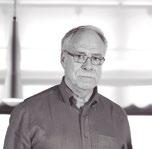
In this context, an article has just been published, whose authors include two of the scientists leading the Atapuerca work, José María Bermúdez de Castro and Eudald Carbonell. The paper argues that moral conscience evolved gradually in the human lineage through genetic changes, but its content, the specific values, depend on cultural contributions. This seems sensible and has long been held, but oh dear! it is not as provocative as Wilson's challenge when he compared our moral behaviour to that of ants and bumblebees.
"... It is argued that moral consciousness evolved gradually in the human lineage through genetic changes, but its content, the actual values, depends on cultural inputs."
Es la nuestra una época hosca y ceñuda, o por el contrario es alegre, despreocupada, incluso libertina? Lo pienso mientras repaso un callejero de Palma del año 1985, publicado en su día por la editorial Cort. 1985 es una fecha que no le dirá nada a nadie. Si no la relacionamos con un suceso relevante de nuestra vida -una boda, una muerte, un viaje, enfermedades, nacimientos-, 1985 es una fecha tan incolora como 1889 o como 1926. Pero hojeando esa guía, me topo con el capítulo dedicado a “Salas de fiesta y discotecas”. Y de repente, descubro que había en Palma 72 salas de fiesta censadas. ¡72 salas de fiesta! Estaba claro que en 1985 la gente quería divertirse y bailar y reír.
Algunos de los lugares que aparecen en el “Callejero” los conocí bien, o incluso excesivamente bien -Abraxas, Babel´s, la Luna, Índigo, Villarrío-, pero otros me resultan un misterio. Veo que existía un local llamado Voom Voom (en la calle Fernando Alzamora, 60-66) del que jamás oí hablar. Tampoco oí hablar del White Line (Joan Miró, 322) ni del Tokyo Joe (Virgilio, 7), ni mucho menos del Eva´s (Misión San Diego, s/n) o del Club Latino (Laúd, 23). ¿Qué eran? ¿Qué decoración tenían? ¿Qué clase de música se escuchaba allí? ¿Soul, rock, pop, techno? ¿Eran para turistas? ¿O para lo que podríamos llamar “público autóctono”? ¿Eran para maduritos o para jóvenes? ¿Para parejas o para solitarios? ¿Eran antros para marineros americanos? ¿O eran locales para burgueses provincianos que echaban una canita al aire? ¿Qué
era, por ejemplo, el Voom Voom de la calle Fernando Alzamora? ¿A qué iba la gente allí? ¿Y qué era lo que se encontraba?
Por supuesto, en 1985 no existían las aplicaciones de ligues que hoy existen online -Tinder, sobre todo- y la gente tenía que ir a ligar a las discotecas porque no había otra forma de hacerlo. Pero me pregunto si hay otras razones que expliquen las diferencias entre la vida nocturna de entonces y la actual. ¿No será que hemos empezado a desconfiar de los lugares que nos parecen demasiado entregados al placer? Porque la idea misma de placer, si lo pensamos bien, se ha vuelto sospechosa. Disfrutar de la vida, apurarla hasta el exceso, resulta ahora una actitud reprobable. Detrás del disfrute, detrás del placer, se ocultan privilegios, desigualdades, injusticias; y no sólo eso, también acecha la corrupción política, la corrupción de las costumbres y el pésimo ejemplo social. Nada de eso, que yo sepa, se vivía en 1985. El placer era algo noble y positivo por sí mismo. Pero ahora parece que nos gusta más acusar que divertirnos, sermonear antes que disfrutar de la vida, indignarnos antes que despendolarnos. Nos hemos vuelto desconfiados, irascibles, moralistas. Y no, no son buenos tiempos para las salas de fiesta. Adiós, adiós, “Voom Voom”.
Voom VoomIs ours a sullen, frowning age, or on the contrary, is it cheerful, carefree, even libertine? I'm thinking about this as I look at a street map of Palma from 1985, published at the time by the Cort publishing house. 1985 is a date that will tell no one anything. If we don't relate it to a relevant event in our lives - a wedding, a death, a trip, illnesses, births - 1985 is as colourless as 1889 or 1926. But while leafing through the guide, I came across the chapter on "Nightclubs and discotheques". And all of a sudden, I discover that there were 72 listed nightclubs in Palma. 72 nightclubs! It was clear that in 1985 people wanted to have fun and dance and laugh.
Some of the places that appear in the " Street Guide" I knew well, or even excessively well - Abraxas, Babel's, La Luna, Índigo, Villarrío - but others are a mystery to me. I see that there was a place called Voom Voom (in Calle Fernando Alzamora, 60-66) that I never heard of. Nor have I heard of White Line (Joan Miró, 322) or Tokyo Joe (Virgilio, 7), let alone Eva's (Misión San Diego, s/n) or Club Latino (Laúd, 23). What were they? What was their décor? What kind of music was played there? Soul, rock, pop, techno? Were they for tourists? Or for what we might call "locals"? Were they for grownups or for young people? For couples or for loners? Were they dens for American sailors? Or were they venues for bourgeois provincials who wanted to have a little chat? What was, for example, the Voom Voom on Calle Fernando Alzamo-
ra? What did people go there for? And what did they find there?
Of course, in 1985 there were no dating apps like today's online dating apps -Tinder, above all- and people had to go to clubs because there was no other way to do it. But I wonder if there are other reasons for the differences between nightlife then and now: is it not that we have become wary of places that seem too much about pleasure? Because the very idea of pleasure, if we think about it, has become suspect. Enjoying life, rushing it to excess, is now a reprehensible attitude. Behind enjoyment, behind pleasure, lurk privileges, inequalities, injustices; and not only that, but also political corruption, the corruption of manners and bad social example. None of this, as far as I know, was the case in 1985. Pleasure was something noble and positive in itself. But now we seem to like to accuse rather than to have fun, to lecture rather than to enjoy life, to be indignant rather than to be outraged. We have become suspicious, irascible, moralistic. And no, these are not good times for nightclubs. Goodbye, goodbye, "Voom Voom".

"Ahora parece que nos gusta más acusar que divertirnos"
"Now we seem to like to accuse rather than to have fun"
Escritor Writer
¿
33,5 kilómetros de Paseo Marítimo completamente remodelados para convertir esta icónica arteria de la ciudad en accesible; una inversión sin precedentes de cerca de 80 millones de euros que comportará la integración urbana y paisajística del histórico Club de Mar; una nueva línea de tranvía que unirá el centro de Palma con el aeropuerto en 2026; un embrionario distrito de innovación, Nou Llevant, enmarcado en la estrategia de transición ecosocial, y una Gomila en plena metamorfosis, con 60 viviendas nuevas y espacios comerciales de distintos usos.
Palma se reinventa. Ante la irrefrenable expansión urbana, la ciudad apuesta por grandes actuaciones urbanas que, en opinión de Jesús M. González, catedrático en Geografía de la UIB, “pueden llegar a ser positivas desde un punto de vista paisajístico o de promoción urbana, pero también corren el riesgo de fracturar la ciudad, con una parte muy promocionada y otra que se puede sentir más abandonada. Las administraciones públicas deben establecer mecanismos para que eso no suceda”, alerta.
Sin fronteras entre la ciudad y el mar Nadie pondría en duda que Palma vive de cara al Mediterráneo si no fuera porque uno de los espacios primordiales de la ciudad, el Paseo Marítimo, ha evidenciado tener deficiencias que han entorpecido la relación de sus habitantes con el mar. “El hecho de que sea una vía de alta capacidad hace que las personas se encuentren lejos del mar a pesar de estar a unos pocos metros de distancia”, asegura González.
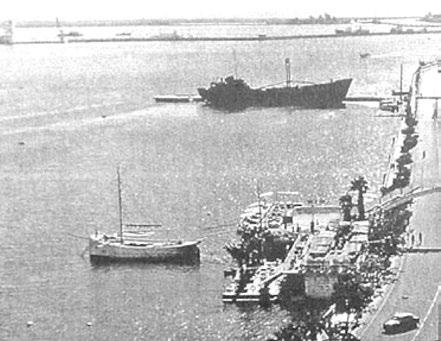

Inaugurada en los años cincuenta, la
Avenida Gabriel Roca ha sufrido diferentes transformaciones y ampliaciones a lo largo del tiempo hasta convertirse en una prolongación de la Vía de Cintura, con hasta tres y cuatro carriles por sentido que han ido desplazando al peatón hasta poner en entredicho su función como paseo.
En un intento de modificar la prioridad entre el coche y el peatón-ciclista, incrementar las zonas verdes y aumentar el valor patrimonial del espacio, la Autoritat Portuària de Balears ha puesto en marcha un ambicioso proyecto que lleva la firma del arquitecto ibicenco Elías Torres (Baluard del Príncep) con el que pretende mejorar la movilidad peatonal y seguridad vial. Las obras, que ya han empezado a ejecutar las empresas Melchor Mascaró, Vopsa, Aglomsa y Urbient, cuentan con un presupuesto de 38 millones de euros (sin IVA) y se calcula que durarán 20 meses.
Un bulevar con el peatón en el centro Según Ports de Balears, a día de hoy, peatones y bicicletas y vehículos a motor se reparten por igual los espacios (50%50%) en el Paseo Marítimo, una situación que se tratará de corregir con la nueva intervención, que aspira a conseguir una relación del 70%-30% respectivamente. Para ello, se reducirán los carriles actuales (3-4) a 2 por sentido y los aparcamientos en superficie. Esto supondrá un incremento de la anchura de las aceras del lado de la ciudad. En el lado del mar, se definirán nuevos espacios de paseo y de estar: plazas, caminos, abundante vegetación, etc.
El nuevo Paseo Marítimo contará, además, con más pasos de peatones (se amplían de 13 a 26) y mejor accesibilidad a los diferentes niveles del puerto y a los barrios de Es Jonquet y El Terreno, con
incorporación de escaleras, rampas y barandillas.
La repercusión en el tráfico rodado La eliminación de un carril por sentido “supondrá un ligero aumento de los niveles de saturación pero sin llegar al 100 %”, un pronóstico de Ports de Balears que respalda el director general de Urbanismo del Ayuntamiento de Palma, Biel Horrach: “Actualmente no está funcionando como alternativa a la Vía Cintura, hay un porcentaje de tráfico muy bajo, lo que se va a hacer es optimizar mejor el uso del espacio público”. Por su parte, el experto Jesús M. González sostiene que desviar tráfico hacia la “extrasaturada” Vía de Cintura no sería una solución: “Es un tema complejo y ahí entra en juego la idea de crear un segundo cinturón, que serviría para ensanchar el territorio metropolitano, para descongestionar, pero con un impacto negativo evidente: favorecería la urbanización y artificialización del suelo”.
Transporte público sin cambios y más carril bici y vegetación
Con la nueva intervención en el Paseo Marítimo, las líneas y paradas de autobuses no sufrirán cambios a priori, pero sí que se mejorará la accesibilidad a las paradas.La longitud del carril bici aumentará de forma significativa (de 1,7 a 3,5 km) y pasará a ser un carril contiguo y segregado, con 5 puntos de estacionamiento. En lo que se refiere a la configuración paisajística, se triplicará el arbolado (se plantarán 2.000 árboles nuevos) y se duplicarán las palmeras y la superficie de parterres.
El Club de Mar se abre a la ciudad Una de las entidades privadas con más arraigo en la isla, el Club de Mar, está acometiendo una reforma integral que, según informa a este medio su director, José Luis Arrom, supondrá un gasto de unos 75-80 millones de euros –la mayor inversión portuaria privada de toda España– y “la apertura del Club a toda la



A la izquierda, Jesús M. González y Biel Horrach; a la derecha, recreación de cómo lucirá el nuevo Paseo Marítimo.


ciudadanía, manteniendo la privacidad en los pantalanes y en las plantas superiores de los edificios”.
Para ello, y tal y como recoge la memoria del proyecto, “se eliminarán los muros que hasta ahora nos han separado de la ciudad” y una pasarela peatonal facilitará el acceso a la zona –3 edificios y un parking– en la que “todos los ciudadanos podrán disfrutar de una amplia oferta de ocio, con tiendas, establecimientos de restauración y actividades asociadas al mundo de la náutica deportiva”.

El Club de Mar recibe con buen ánimo el plan del nuevo Paseo Marítimo. Arrom opina que “se complementará muy bien con las instalaciones y paisajismo del Club”. El director de la entidad considera asimismo que una vez finalizadas las obras de edificación –previsiblemente en abril de 2024–, “toda la zona de Portopí, que ahora es como un cul de sac, va a cobrar dinamismo. Nos va a beneficiar a todos: a los locales, a los vecinos y, por supuesto, al Club”, sentencia.

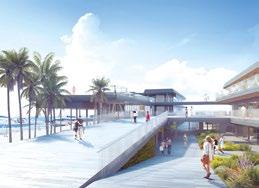

El barrio de El Terreno, que experimentó su máximo apogeo en los años sesenta y fue testigo de una animada vida cultural y nocturna hasta los ochenta, cuando
comenzó su decadencia, se enfrenta ahora a una época de transformación pivotada en gran medida por la familia Fluxà, propietaria de la marca de zapatos Camper, que le ha encargado a los arquitectos GRAS y MVRDV la renovación de cuatro edificios existentes y la creación de tres nuevos con un cromatismo e identidad singulares. A falta de que se complete con el edificio Virginia, el proyecto, denominado Gomila Mallorca, “está teniendo una acogida muy buena; hay mucha demanda”, asegura Guillermo Reynés, fundador de GRAS Reynés Arquitectos. En total, se han construido cerca de 60 viviendas y espacios exteriores y comerciales de distintos usos que ya han recibido a los primeros inquilinos.

El estudio de arquitectos GRAS Reynés
también está siendo el responsable de transformar Tito’s, la antigua y mítica discoteca de Cursach, en la moderna sala de fiestas ibicenca Lío, del Grupo Pachá, que contribuirá a incrementar la oferta de ocio en la zona e impulsará la nueva conexión entre el Paseo Marítimo y El Terreno.
El experto Jesús M. González mantiene que el Terreno afronta “una fase gentrificadora, con una progresiva elitización del barrio. Además, –agrega– se trata de un barrio que se va a ver muy beneficiado con la centralidad urbana que va a provocar el nuevo Paseo Marítimo”. Para Guillermo Reynés, “reformar un barrio no siempre significa gentrificación. En nuestro caso, hemos añadido vivienda al barrio donde antes había locales de ocio y discotecas abandonados”, apunta instantes antes de confirmar que “los pisos se destinarán a alquileres de larga estancia”.
A la iniciativa privada, se suman algunas acciones de carácter público para recobrar la vitalidad de El Terreno. Con el proyecto Vivienda Digna, “se pretende ofrecer una solución a la situación de degradación generada por la transformación informal de la antigua planta hotelera y apartamentos turísticos en viviendas, que ha derivado en pobreza vertical”, asevera Biel Horrach. Otros pa-
sos que se han dado en este distrito son la adquisición y demolición del edificio Zhivago para levantar un equipamiento sociocultural o la recuperación de una piscina y aparcamientos municipales en s’Aigo Dolça –en fase prematura–.
El tranvía aterriza en Palma Más de una década después de que se anunciara por primera vez la creación de un tranvía para la ciudad de Palma, en noviembre se firmó un protocolo para construir una línea de tranvía entre el centro de Palma y el Aeropuerto de Son Sant Joan, en el que el Ministerio de Transportes, Movilidad y Agenda Urbana se compromete a financiar el 100 % del primer tramo, con una dotación inicial de 20 millones de euros que ya se ha incluido en el proyecto de Presupuestos Generales del Estado. Las obras del nuevo Tranvía de la Bahía de Palma tendrán un coste de 185 millones de euros en la primera fase, empezarán en 2023 y durarán 40 meses.
Todo parece indicar que Palma dis-
pondrá dentro de cuatro años de una infraestructura de 10,8 km que conectará la Plaza de España con el aeródromo a través de la costa. El recorrido contará con 16 paradas, que se establecerán a lo largo de Plaza España, Las Avenidas y los barrios de Foners, Nou Llevant, El Molinar, La Ciutat Jardí, El Coll d’en Rabassa y Can Pastilla.
Con una frecuencia de paso de 10 minutos y una duración del trayecto de 31 minutos, se estima que este nuevo corredor absorba un 27% de la demanda de transporte público, con 5,3 millones de pasajeros en sus inicios.
Nou Llevant: una oportunidad en ciernes para diversificar
La zona de Nou Llevant representa desde hace algunos años la gran promesa para avanzar hacia la diversificación económica. Tras sucesivos planeamientos urbanísticos y motivada por la iniciativa ciudadana Ramón Llull 2030, la Administración trabaja, aunque no al ritmo esperado, para convertir este distrito en
un polo de innovación. Para José Juan Novás, ideólogo de la propuesta RLL2030, “están todos los ingredientes sobre la mesa pero hay que poner un cocinero al frente” –señala– para que eche a andar. De momento, 10.000 metros cuadrados cedidos por Metrovacesa se destinarán a un campus urbano (Campus Palma Tech) que se encuentra en proceso de diseño por parte de la UIB, tal y como ratifica Loren Carrasco, vicerrectora de Innovación y Transformación Digital de la UIB. Según avanza Horrach a esta revista, también “se ha llegado a un acuerdo con Endesa para que en la planta baja y primera del edificio de GESA se ubique el Centro de Innovación para la Transición Energética TE21”.




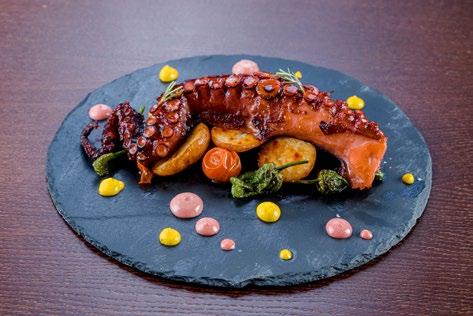
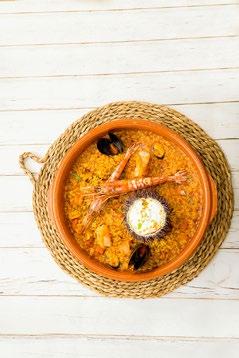
Así respira el bosque de Bellver
Tras la siembra de 1.200 árboles de alvéolo forestal en los últimos meses y las labores de reforestación iniciadas en 2019, el gran pulmón verde de la ciudad, el bosque de Bellver, cuenta con más de 3.000 árboles y plantas arbustivas.
Uno de los edificios que integrarán Gomila Mallorca y nuevos adosados en alquiler en la zona. Fotos: GRAS Reynés.
Para la conservación de este espacio, en el que el Ayuntamiento de Palma ha invertido hasta tres millones de euros, se están recuperando talanqueras, muros, pasos y caminos con el fin de impedir que se erosione más la zona. Asimismo, se están aprovechando los pinos afectados por la plaga Tomicuis para recuperar el suelo del bosque. El proyecto de ordenación de caminos y senderos contempla la plantación de 5.800 árboles y plantas, 1.908 metros cuadrados de gramíneas y la delimitación de 1.682 metros lineales de senderos existentes, que se están dotando de barandillas nuevas.
3.5 kilometers of Paseo Marítimo completely remodeled to make this iconic thoroughfare of the city accessible; an unprecedented investment of nearly 80 million euros that will involve the urban and landscape integration of the historic Club de Mar; a new tram line that will
link the center of Palma with the airport in 2026; an embryonic innovation district, Nou Llevant, framed in the strategy of ecosocial transition, and a Gomila in full metamorphosis, with 60 new homes and commercial spaces for different uses.
Palma is reinventing itself. Faced with unstoppable urban sprawl, the city is betting on large urban actions that, in the opinion of Jesús M. González, professor of Geography at the UIB, "can be positive from a landscape or urban development point of view, but also run the risk of fracturing the city, with one part that is highly promoted and another that may feel more abandoned. The public administrations must establish mechanisms so that this does not happen," he warns.
No borders between the city and the sea No one would doubt that Palma lives facing the Mediterranean were it not for the fact that one of the city's primordial
spaces, the Paseo Marítimo, has evidenced deficiencies that have hindered the relationship of its inhabitants with the sea. "The fact that it is a high-capacity road means that people are far from the sea despite being just a few meters away," says González.
Inaugurated in the 1950s, Avenida Gabriel Roca has undergone various transformations and extensions over time until it became an extension of the Vía de Cintura, with up to three and four lanes in each direction that have been displacing pedestrians until its function as a promenade has been called into question.
In an attempt to change the priority between the car and the pedestrian-cyclist, increase green areas and increase the heritage value of the space, the Autoritat Portuària de Balears has launched an ambitious project signed by the Ibizan architect Elías Torres (Baluard del Príncep) with which it intends to improve pedestrian mobility and road safety. The works, which have already begun to be executed by the companies Melchor Mascaró, Vopsa, Aglomsa and Urbient, have a budget of 38 million euros (excluding VAT) and are estimated to last 20 months.

A boulevard with pedestrians at the center of the project
According to Ports de Balears, at present, pedestrians and bicycles and motor vehicles share equally the spaces (50%-50%) on the Paseo Marítimo, a situation that will be corrected with the new intervention, which aims to achieve a ratio of 70%-30% respectively. To this end, the current lanes (3-4) will be reduced to 2 in each direction and surface parking spaces will be reduced. This will mean an increase in the width of the sidewalks on the city side. On the sea side, new walking and living spaces will be defined: squares, paths, abundant vegetation, etc.
The new promenade will also have more crosswalks (from 13 to 26) and better accessibility to the different levels of the port and to the neighborhoods of Es Jonquet and El Terreno, with the addition of stairs, ramps and handrails.

The elimination of one lane in each





direction "will mean a slight increase in saturation levels but without reaching 100%", a forecast of Ports de Balears that supports the general director of Urban Planning of the City Council of Palma, Biel Horrach: "Currently it is not working as an alternative to the Via Cintura, there is a very low percentage of traffic, what is going to be done is to better optimize the use of public space". For his part, the expert Jesús M. González maintains that diverting traffic to the "oversaturated" Vía de Cintura would not be a solution: "It is a complex issue and here comes into play the idea of creating a second beltway, which would serve to widen the metropolitan territory, to decongest, but with an obvious negative impact: it would favor the urbanization and artificialization of the land".
Unchanged public transport and more bike lanes and greenery
With the new intervention on the Paseo Marítimo, the bus lines and bus stops will remain unchanged at first, but the accessibility to the stops will be improved. The bike lane length will be significantly increased (from 1.7 to 3.5 km) and will become a contiguous and segregated lane, with 5 parking points. In terms of landscaping, the number of trees will be tripled (2,000 new trees will be planted) and the number of palm trees and

the surface area of flowerbeds will be doubled.
The Club de Mar opens to the city One of the most deeply rooted private entities on the island, the Club de Mar, is undertaking a comprehensive reform that, according to its director, José Luis Arrom, will involve an expenditure of about 75-80 million euros - the largest private port investment in Spain - and "the opening of the Club to all citizens, maintaining privacy on the pontoons and on the upper floors of the buildings".
To this end, and as stated in the project report, "the walls that have so far separated us from the city will be removed" and a pedestrian walkway will facilitate access to the area - 3 buildings and a parking lot - where "all citizens can enjoy a wide range of leisure activities, with stores, restaurants and activities associated to the world of nautical sports".
The Club receives with good spirit the plan of the new Promenade. Arrom believes that "it will complement very well with the facilities and landscaping of the Club". The director of the entity also considers that once the building works are finished -predictably in April 2024-, "the whole area of Portopí, which is now like a 'cul de sac', will become more dynamic. It will benefit us all: the locals, the neighbors and, of course, the Club," he says.
The rebirth of El Terreno accelerates with Gomila Mallorca
The neighborhood of El Terreno, which experienced its peak in the sixties and witnessed a lively cultural and nightlife until the eighties, when it began its decline, is now facing a period of transformation largely driven by the Fluxà family, owners of the Camper shoe brand, which has commissioned architects GRAS and MVRDV to renovate four existing buildings and create three new ones with a unique color scheme and identity. Pending completion of the Virginia building, the project, called Gomila Mallorca, "is being very well received; there is a lot of demand," says Guillermo Reynés, founder of GRAS Reynés Arquitectos. In total, about 60 homes and outdoor and commercial spaces for different uses have been built and have already received their first tenants.
GRAS Reynés Architects is also responsible for transforming Tito's, Cursach's mythical old discotheque, into the modern Ibizan nightclub Lío, of the Pachá Group, which will contribute to increasing the leisure offer in the area and will boost the new connection between the Paseo Marítimo and El Terreno.
The expert Jesús M. González maintains that El Terreno is facing "a gentrification phase, with a progressive elitization of the neighborhood. In addition, -he adds- it is a neighborhood that will benefit greatly from the urban centrality that the new Paseo Marítimo will bring about". For Guillermo Reynés, "reforming a neighborhood does not always mean gentrification. In our case, we have added housing to the neighborhood where there used to be abandoned nightclubs and discos," he points out before confirming that "the apartments will be used for long term rentals.
In addition to the private initiative, there are some public actions to recover the vitality of El Terreno. With the Housing Dignity project, "the aim is to offer a solution to the situation of degradation generated by the informal transformation of the former hotel and tourist apartments into housing, which has led to vertical poverty," says Biel Horrach. Other steps that have been taken in this district are the acquisition and demolition of the Zhivago building to build a sociocultural facility or the recovery of a swimming
pool and municipal parking lots in s'Aigo Dolça -in a premature phase-.
The tramway lands in Palma
More than a decade after the creation of a tramway for the city of Palma was first announced, a protocol was signed in November to build a streetcar line between the center of Palma and Son Sant Joan Airport, in which the Ministry of Transport, Mobility and Urban Agenda commits to finance 100% of the first section, with an initial allocation of 20 million euros that has already been included in the draft General State Budget. The works of the new Palma Bay Tramway will cost 185 million euros in the first phase, will start in 2023 and will last 40 months.
Everything seems to indicate that in 4 years Palma will have a 10.8 km infrastructure that will connect Plaza de España with the airport. The route will have 16 stops, which will be established along Pz. España, Avenidas and the neighborhoods of Foners, Nou Llevant, Molinar, Coll d'en Rabassa and Can Pastilla.
With a frequency of 10 minutes and a journey time of 31 minutes, it is estimated that this new corridor will absorb 27% of the demand for public transport, with 5.3 million passengers at the beginning.
Nou Llevant: a potential opportunity to diversify
For some years now, the Nou Llevant area has held great promise for economic diversification. After successive urban plans and motivated by the Ramón Llull 2030 citizens' initiative, the Administration is working, although not at the expected pace, to turn this district into a hub of innovation. For José Juan Novás, ideologist of the RLL2030 proposal, "all the ingredients are on the table, but we need to put a cook at the helm", he points out, to get the project off the ground.
At the moment, 10,000 square meters ceded by Metrovacesa will be used for an urban campus (Palma Tech Campus) that is in the process of being designed by the UIB, as confirmed by Loren Carrasco, vice-rector of Innovation and
Digital Transformation of the UIB. According to Horrach, "an agreement has also been reached with Endesa to locate the TE21 Energy Transition Innovation Center on the ground and first floor of the GESA building".

This is how the Bellver forest breathes After the planting of 1,200 forest alveolus trees in recent months and the reforestation work begun in 2019, the city's great green lung, the Bellver forest, now has more than 3,000 trees and shrubs.
For the conservation of this space, in which Palma City Council has invested up to 3 million euros, embankments, walls, steps and paths are being recovered in order to prevent further erosion. Likewise, the pine trees affected by the Tomicuis plague are being used to recover the forest ground. The project for the development of paths and tracks includes the planting of 5,800 trees and plants, 1,908 square metres of grasses and the delimitation of 1,682 linear metres of existing paths, which are being fitted with new railings.
La cara menos visible de la ciudad, la de las personas sin hogar, va a más. Teresa Riera, técnica del servicio de vivienda y personas sin hogar de Cáritas lleva más de 20 años ayudando a este colectivo y ratifica el aumento de personas en situación de calle. El principal motivo no viene de las crisis económicas ni de la reciente pandemia, “en Mallorca ha sido decisivo el gran problema del acceso a la vivienda y la especulación”.
Mujeres: “El número ha subido muchísimo. Los centros están muy masculinizados y los peligros son infinitamente más grandes. Va a tener que cambiar la manera en la que intervenimos. Es muy común que busquen pareja como forma de protección; escuchamos a mujeres que dicen: «Prefiero que abuse de mí uno en lugar de todos» ”.
Personas mayores: “El problema es la falta de acceso a residencias. Ahora se dan muchos casos de gente mayor de 80 años”.

Enfermos mentales: “Cuando cerraron los pabellones del psiquiátrico, se
cambió el modelo de atención a la salud mental, que está muy bien, pero ha excluido a muchos y ahora son los nuevos perfiles de calle”.
La fragilidad del sistema hace que personas con una vida muy normalizada de repente se vean sin hogar. “Si te quedas sin trabajo y sin vivienda, estás en situación de calle o tienes que acudir a un recurso -la mayoría colapsados- para personas sin hogar”, advierte Riera, quien llama a “no estigmatizar, dar visibilidad y no culpabilizar. Estamos en una sociedad muy del descarte y hay que ver cómo incluimos entre todos a este colectivo tan vulnerable”, finaliza.
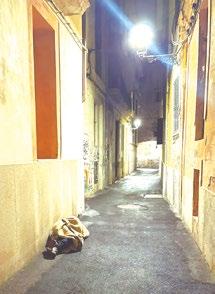
The less visible face of the city, that of the homeless, is on the increase. Teresa Riera, a technician at the housing and homelessness service of Cáritas, has been helping this group for more than 20 years and confirms the increase in the number of people on the streets. The main reason does not come from the economic crises or the recent pandemic, "in Mallorca the big problem of access to housing and speculation has been decisive".
Women: "The number of women has increased a lot. The centres are very masculinised and the dangers are infinitely
greater. The way we intervene will have to change. It is very common for them to seek a partner as a form of protection; we hear women saying: ’I prefer to be abused by one rather than all of them' ". Older people: "The problem is the lack of access to residential care. Now there are many cases of people over 80 years old". People with mental illness: "When the psychiatric wards were closed, the model of mental health care was changed, which is good, but it has excluded many people and now they are the new street profiles".
The fragility of the system means that people with a very normalised life suddenly find themselves homeless. "If you become unemployed and loose your house, you are in a street situation or you have to go to a resource - most of them collapsed - for homeless people", warns Riera, who calls for "not stigmatising, giving visibility and not blaming. We are in a very throwaway society and we have to see how we can include this vulnerable group", she concludes.
Escuchamos a mujeres que dicen: «Prefiero que abuse de mí uno en lugar de todos» ”Una persona duerme en Palma. Foto: S. D. Chabolas levantadas en las inmediaciones del parque de Sa Riera. Foto: P. Caparrós.


En la ciudad de Palma hay barrios degradados y barrios degenerados. Son cosas muy distintas. Degradado es aquel que ha caído en un estado de deterioro físico. A mediados del pasado siglo, el Puig de Sant Pere o la Gerreria eran barrios degradados. Muchas de sus casas, tipologías medievales construidas con paredes de tapial y vigas de madera, habían soportado un paulatino deterioro y algunas amenazaban ruina. Pero la degradación tenía remedio: la rehabilitación integral permitía recuperar su estado primigenio, cargado de valores históricos que se percibían en cada uno de sus espacios, escaleras, ventanas, patios, terrazas, tejados, jardines. Esa riqueza acumulada durante siglos era recuperable, y así quedó demostrado con planes especiales como el del Puig de Sant Pere, o con ordenanzas restrictivas como las del Plan General de 1985 que se aplicaron a todo el centro histórico -salvo la Gerreria, que se barrió- y que inducían a los propietarios a elegir la restauración antes que la demolición.
Estos planes y ordenanzas permitieron mantener un paisaje urbano -calles, plazas, casas- de alto valor urbanístico y dieron su fruto incluso desde un punto de vista económico: el precio de las viviendas se disparó de manera espectacular en todo el centro histórico de Palma. De modo que la conclusión es evidente: en un barrio degradado, la terapia adecuada es la rehabilitación. Otro barrio degradado, la Gerreria, conservaba el trazado característico de
las ciudades medievales hispano musulmanas, pero se le aplicó un tratamiento erróneo: fue arrasado y reinventado con un nuevo trazado de calles y con edificios de nueva planta, incluyendo algunos fuera de escala, como los nuevos juzgados. El resultado es un barrio sin espíritu, artificial y falso. Y para colmo, la construcción de los nuevos edificios y aparcamientos subterráneos significó el expolio de un subsuelo abarrotado de antiquísimas cerámicas y de enorme riqueza arqueológica. Grave error de estrategia. Los viejos edificios tendrían hoy un valor económico y cultural muy superior si se hubieran rehabilitado. Ahora es ya un barrio degenerado donde no queda nada que rehabilitar.
En Palma existen otros barrios degenerados. El más sangrante es sin duda Es Terreno. En la primera mitad del siglo XX era uno de los mejores barrios de Europa. Artistas de todo el mundo -escritores, pintores, músicos, actores- acudían a instalarse en él y convivieron durante décadas con familias de la burguesía mallorquina que disfrutaban de

sus casas con jardín en la falda de la colina de Bellver, todas con vistas sobre la bahía y la ciudad antigua. Pero a partir de 1970 sobrevino el desastre: el Plan General de Palma aprobado en 1963 permitió edificar sin límite de alturas, y aparecieron unos pocos bloques de arquitectura banal -alguno tiene hasta diez plantas- que dieron al traste con el ambiente y la escala del barrio de manera fulminante. Los artistas que lo habitaban hicieron prestos sus maletas y el barrio entero entró en un imparable y rapidísimo proceso de degeneración y de cutrefacción (con c). Los precios se desplomaron, y las antiguas casas se dividieron en pequeños apartamentos que se alquilaban a bajo precio mientras la plaza Gomila, que había sido centro de encuentro de artistas como John S. Sargent, Gertrud Stein, Ava Gardner o Errol Flynn, entró también en un declive imparable. La degeneración es más grave que la degradación porque su remedio exige terapias drásticas, empezando -ahora sí- por la demolición. Un cáncer localizado se cura extirpando. Hoy el Terreno es un barrio condenado por culpa de esos pocos bloques. Su recuperación, nos guste o no, sólo es posible mediante la previa demolición de los edificios causantes del desastre ambiental y económico. La operación de renovación que se ha iniciado en la plaza Gomila con la mejor de las intenciones, está, a mi juicio, siguiendo un camino muy cuestionable: un barrio degenerado no se recupera introduciendo más elementos de discordia. Y si los pocos hitos del antiguo esplendor tampoco se valoran -pienso el mítico Bar Joe´s, a cuya barra sacó brillo el codo de John Wayne- y se eliminan sin contemplaciones en vez de conservarse como oro en paño, la estrategia aplicada entra, en mi opinión, en una senda de dudoso desenlace.
In the city of Palma there are degraded neighbourhoods and degenerated neighbourhoods. They are very different things. A degraded neighbourhood is one that has fallen into a state of physical deterioration. In the middle of the last century, Puig de Sant Pere and La Gerreria were degraded neighbourhoods. Many of their houses, medieval typologies built with mud walls and wooden beams, had endured gradual deterioration and some threatened ruin. But the degradation had a remedy: the integral rehabilitation allowed the recovery of their original state, full of historical values that could be perceived in each of their spaces, stairs, windows, patios, terraces, roofs and gardens. This wealth accumulated over centuries was recoverable, and this was demonstrated by special plans such as that of Puig de Sant Pere, or by restrictive ordinances such as those of the 1985 General Plan, which were applied to the entire historic centre - except for the Gerreria, which was swept away - and which induced owners to choose restoration over demolition.
These plans and ordinances made it possible to maintain an urban landscape - streets, squares, houses - of high urban value, and they also bore fruit from an economic point of view: the price of houses shot up spectacularly throughout the historic centre of Palma. So the conclusion is obvious: in a run-down neighbourhood, the right therapy is rehabilitation. Another degraded neighbourhood, La Gerreria, pre -
Palma, from the Gerreria to the Terreno: two urban planning mistakes
"La degeneración es más grave que la degradación porque su remedio exige terapias drásticas, empezando -ahora sí- por la demolición"
served the characteristic layout of the medieval Spanish-Muslim cities, but was wrongly treated: it was razed to the ground and reinvented with a new street layout and new buildings, including some out-of-scale ones, such as the new courthouse. The result is a spiritless, artificial and false neighbourhood. And to top it all off, the construction of the new buildings and underground car parks meant the plundering of a subsoil full of ancient ceramics and enormous archaeological wealth. This was a serious strategic error. The old buildings would be of much greater economic and cultural value today if they had been rehabilitated. Now it is already a degenerated neighbourhood where there is nothing left to rehabilitate.

There are other degenerated neighbourhoods in Palma. The
most blatant example is undoubtedly Es Terreno. In the first half of the 20th century it was one of the best neighbourhoods in Europe. Artists from all over the worldwriters, painters, musicians, actors - came to live there and for decades they lived side by side with families of the Mallorcan bourgeoisie who enjoyed their houses with gardens on the slopes of Bellver hill, all with views over the bay and the old city.
But disaster struck from 1970 onwards: the General Plan of Palma approved in 1963 allowed building without height limits, and a few blocks of banal architecture appeared - some have up to ten floors - which destroyed the atmosphere and scale of the neighbourhood in a flash. The artists who lived there quickly packed their bags and the whole neighbourhood entered an unstoppable and rapid process of degeneration and decay. Prices plummeted, and the old houses were divided into small flats that were rented out cheaply, while Plaça Gomila, which had been a meeting place for artists such as John S. Sargent, Gertrud Stein, Ava Gardner and Errol Flynn, also went into an unstoppable decline. Degeneration is more serious than degradation because its remedy requires drastic therapies, starting - now - with dem-
olition. A localised cancer is cured by extirpation. Today, El Terreno is a neighbourhood condemned because of those few blocks. Its recovery, whether we like it or not, is only possible with the prior demolition of the buildings that caused the environmental and economic disaster. The renovation operation that has begun in Plaza Gomila with the best of intentions is, in my opinion, following a very questionable path: a degenerated neighbourhood cannot recover by introducing more elements of discord. And if the few landmarks of former splendour are not valued either - I am thinking of the mythical Bar Joe's, whose bar was polished by John Wayne's elbow - and are eliminated unceremoniously instead of being preserved like gold, the strategy applied enters, in my opinion, into a path of dubious outcome.
"Degeneration is more serious than degradation because its remedy requires drastic therapies, starting - nowwith demolition"
Ciudadanos de todo el mundo llegan a Mallorca para quedarse y disfrutar de su estilo de vida. Estas son sus vivencias.
Citizens from all over the world come to Mallorca for good and enjoy its lifestyle. These are their experiences.
Nombre: Ludovico Cuomo.
País de procedencia: Italia. Tiempo en Mallorca: 7 años. Profesión: Empresario.

Llegó a Mallorca porque le encanta el Mediterráneo, le recuerda a su Nápoles natal, “sobre todo la zona de rocas, allí no tenemos arena. España me gusta, tiene calidad de vida y una buena combinación de valores, por lo que creo que este será mi destino definitivo”, explica el gerente del restaurante NAP de Santa Catalina.
He came to Mallorca because he loves the Mediterranean, it reminds him of his native Naples, "especially the rocky area, we don't have sand there. I like Spain, it has quality of life and a good combination of values, so I think this will be my definitive destination", explains the manager of the restaurant NAP in Santa Catalina.
Nombres: Deborah Faulkner, Lara Nutzhorn y Charlotte Stone.
Países de procedencia: Reino Unido y Rusia. Tiempo en Mallorca: 32, 40 y 22 años. Profesión: Sector náutico, desempleada y restaurante en Pollença.
Tres amigas -dos británicas y una rusa que se dedica “a vivir la vida”- disfrutan de la vida en Mallorca. “Nos encanta la gente local, el tiempo y el campo. Tenemos todas las estaciones y eso nos gusta, no como en el Caribe, donde también hemos vivido”, explican las dos británicas. En Palma han encontrado un entorno “cosmopolita” y más cerca de sus familiares, que viven en Suiza, Francia, Inglaterra, etc. Lara llegó en los años 70 y desde entonces vive en Mallorca, de donde parece que ya no se moverá.
Three friends - two British and a Russian who is dedicated to "living life"enjoy life in Mallorca. "We love the local people, the weather and the countryside. We have all the seasons and we like that, unlike in the Caribbean, where we have also lived," they explain. In Palma they have found a "cosmopolitan" environment and closer to their relatives, who live in Switzerland, France, England, etc. Lara arrived in the 1970s and has lived in Mallorca ever since, from where it seems she will never move.
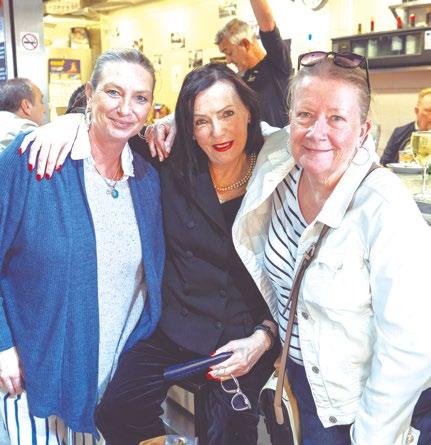
Nombre: Gianluca Silvestre y Francesco Perniciaro.
País de procedencia: Italia. Tiempo en Mallorca: 1 y 3 años. Profesión: Cocineros.
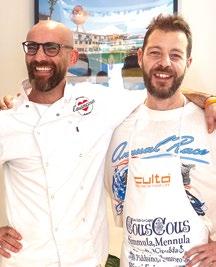
Aambos Mallorca les recuerda a sus lugares de origen, Reggio Calabria y Sicilia. Vinieron por trabajo y ya llevan en la isla una temporada, pero aquí “la vida después del trabajo es mejor que en Italia”. También el sistema sanitario, que encuentran mejor que en su país.
For both of them, Mallorca reminds them of their places of origin, Reggio Calabria and Sicily. They came for work and have been on the island for a while now, but here "life after work is better than in Italy". Also the health system, which they find better than in their country.
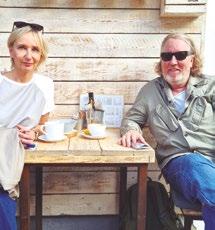
Nombres: Estefanía Rubio y Diana Pantano.

País de procedencia: Colombia.
Tiempo en Mallorca: 3 y 1 año. Profesión: Cuidadoras.
Primero llegó Diana “a través de una persona que conocía”, y su hija, Estefanía, siguió sus pasos. “Nos gusta la calidad de vida y la tranquilidad, porque en referencia a Colombia y la situación actual allí se nota”. Las playas y los paisajes son también puntos fuertes de la isla para las dos.
Diana first arrived "through a person I knew", and her daughter, Estefanía, followed in her footsteps. "We like the quality of life and the tranquillity, because in reference to Colombia and the current situation there, it is noticeable". The beaches and landscapes are also highlights of the island for both of them.
Nombre: Sefat Ali.

País de procedencia: Bangladesh. Tiempo en Mallorca: 13 años. Profesión: Camarero.
Su familia le trajo a Mallorca y lo que más le gusta de la isla es el tiempo. “He estado en muchos países con mucho frío, mucho calor… y aquí el clima es perfecto”. Le gustan playa y montaña a partes iguales, aunque sobre vivir aquí para siempre “no podría afirmarlo, la situación puede cambiar en cualquier momento”.
His family brought him to Mallorca and what he likes most about the island is the weather. "I've been in many countries with a lot of cold, a lot of heat... and here the weather is perfect". He likes the beach and the mountains in equal parts, although about living here forever "I couldn't say for sure, the situation can change at any moment".
Nombre: Daniel Schwirtz
Tortenson y Stefanie Gabel. País de procedencia: Alemania. Tiempo en Mallorca: 10 años y 2 días. Profesión: Fotógrafo/Director creativo y profesora de yoga.
Stefanie acaba de mudarse a Mallorca, literalmente hace dos días. “Hemos construido una casa juntos durante el último año y acabo de llegar”. Quien más lleva en la isla es su pareja, Daniel. “Hacía muchos ‘shoo-
tings’ aquí e hice amigos, por lo que decidí ir y venir mientras trabajaba por todo el mundo. Ahora hemos construido una casa entre Petra y Sineu”.
Stefanie has just moved to Mallorca. "We've been building a house last year and I've only just arrived". Her partner Daniel has been on the island the longest. "I did a lot of shooting here and made friends, so I decided to come and go as I worked all over the world. Now we have built a house between Petra and Sineu".

Marc Seguí es uno de los cantantes mallorquines más populares del momento y ganador del premio Los40 al mejor videoclip por “360”. “Un proyecto musical hoy en día tiene que entrarte por los ojos. La estética lo es todo, es una forma de vender y me gusta que también se me reconozca por ella, aunque la música siempre es lo más importante”, expresó durante una entrevista con la radio musical al ser preguntado por sus ‘looks’ imposibles.
Rosario Nadal volvió de nuevo a su isla, Mallorca, para presentar la fundación Alttra, creada junto a Bartomeu Marí y Blanca Cortés. “Llevo 25 años fuera y creo que es momento de traer a Balears todo el conocimiento adquirido en el extranjero”, dijo durante la presentación. Con este proyecto, la consultora de arte y exmodelo pretende “luchar y contribuir a que cambie la visión elitista del arte contemporáneo”, acercándose a gremios locales, vecinos, etc.
Rosario Nadal returned to her island, Mallorca, to present the Alttra foundation, created together with Bartomeu Marí and Blanca Cortés. "I've been away for 25 years and I think it's time to bring all the knowledge I've acquired abroad to the Balearic Islands," she said during the presentation. With this project, the art consultant and ex-model intends to "fight and contribute to changing the elitist vision of contemporary art", approaching local guilds, neighbours, etc
Marc Seguí is one of the most popular Mallorcan singers of the moment and winner of the Los40 award for best music video for "360". "A musical project nowadays has to catch your eye. Aesthetics is everything, it's a way of selling and I like to be recognised for it, although music is always the most important thing", he said during an interview with the music radio when asked about his impossible looks.
La escritora mallorquina Almudena Sánchez (Andratx, 1985) ofrece en su último libro, “Fármaco”, un testimonio sobre la depresión escrito sin tabúes. “Si puede aportar un poco de experiencia sensorial y experiencia verdadera de lo que es la depresión, yo ya me doy por satisfecha”, declaró al diario Público sobre su personal novela.
The Mallorcan writer Almudena Sánchez (Andratx, 1985) offers in her latest book, "Fármaco", a testimony about depression written without taboos. "If it can provide a little sensory experience and real experience of what depression is, I'm satisfied," she told the daily Público about her personal novel.
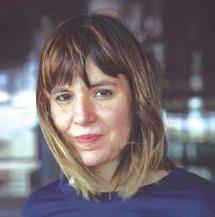

El artista felanitxer Miquel Barceló expone su obra en el Louvre de París hasta enero de 2023. Con el uso de la monocromía y la grisalla, en “Las cosas. Una historia de la naturaleza muerta”, Barceló no pinta “ramos de flores ni pulpos de Mallorca. Son pulpos del Louvre o de mi catálogo infinito de imágenes”, explicó ante las cámaras de IB3.

The Felanitxer artist Miquel Barceló is exhibiting his work at the Louvre in Paris until January 2023. With the use of monochrome and grisaille, in "Things. A History of Still Life", Barceló does not paint "bouquets of flowers or octopuses from Mallorca. They are octopuses from the Louvre or from my infinite catalogue of images", he explained to the IB3 cameras.
Poco a poco voy creyéndomelo. Sencelles, espero que lo hayáis disfrutado”
"I am gradually coming to believe it. Sencelles, I hope you enjoyed it"
Los mallorquines Izan Guevara y Augusto Fernández se han proclamado en 2022 campeones del mundo en Moto 3 y Moto 2, respectivamente. Fernández dedicó unas palabras a sus vecinos de Sencelles: “Poco a poco voy creyéndomelo. Sencelles, espero que lo hayáis disfrutado”. Guevara, por su parte, tras ganar el título expresó sus “ganas de llegar a Mallorca. Quería celebrarlo con mi familia y mis amigos”.

The Mallorcans Izan Guevara and Augusto Fernández have been proclaimed world champions in Moto 3 and Moto 2, respectively, in 2022. Fernández dedicated a few words to his neighbours in Sencelles: "Little by little I'm starting to believe it. Sencelles, I hope you enjoyed it". Guevara, for his part, after winning the title expressed his "eagerness to get to Mallorca. I wanted to celebrate with my family and friends".
El mallorquín y presidente de Naturgy, Francisco Reynés, habló en una entrevista para La Vanguardia sobre la crisis energética. “El mundo está condenado a que los precios del gas en los próximos años sean superiores”, dijo, aunque recordó que los gases de origen renovable y, más a largo plazo, el hidrógeno también “pueden ser parte de la solución”.
The Mallorcan and president of Naturgy, Francisco Reynés, spoke in an interview for La Vanguardia about the energy crisis. "The world is condemned to higher gas prices in the coming years", he said, although he recalled that renewable gases and, in the longer term, hydrogen "could also be part of the solution".

Fundador de Hoteles Meliá



1.000 M€ - 28º puesto nacional
Accionista. de Corp. Financiera Alba 750 M€ - 45º puesto nacional

Pdte. ejecutivo del Grupo Iberostar 2.700 M€ - 8º puesto nacional
CARLOS MARCH DELGADO
Pdte. de Corp. Financiera Alba 850 M€ - 33º puesto nacional
CARMEN Y LUIS RIU GÜELL
Propietarios del Grupo Riu 650 M€ - 37º puesto nacional

Copresidente de Grupo Barceló 450 M€ - 61º puesto nacional

Presidenta de Grupo Piñero 300 M€ - 91º puesto nacional
Fundador de Globalia
300 M€ - 99º puesto nacional
Poderío balear en la lista Forbes. Los empresarios de las islas escalan posiciones en la lista Forbes 2022 de los más ricos de España. Miguel Fluxà irrumpe en el top 10, Carmen y Luis Riu protagonizan la subida más destacada y el copresidente de Grupo Barceló regresa al ranking. Por otro lado, la saga de los March gana presencia e Isabel García Lorca aparece por primera vez en la lista. Como dato, Nadal se queda a las puertas y el Fundador de Globalia, Juan José Hidalgo (asociado a Castilla y León), se sitúa en el puesto 99.

Balearic wealth on the Forbes list. Entrepreneurs from the islands climb positions in the Forbes 2022 list of the richest people in Spain. Miguel Fluxà bursts into the top 10, Carmen and Luis Riu make the most notable jump and the co-president of the Barceló Group returns to the ranking. On the other hand, the March saga gains presence and Isabel García Lorca appears for the first time in the list. Nadal remains at the doorstep and the founder of Globalia, Juan José Hidalgo, associated with Castilla y León, is in 99th place.

A les Illes hi ha prop de 250 comerços emblemàtics amb un valor històric, patrimonial i comercial que els fa únics. Són part de la nostra història i omplen de vida els carrers.





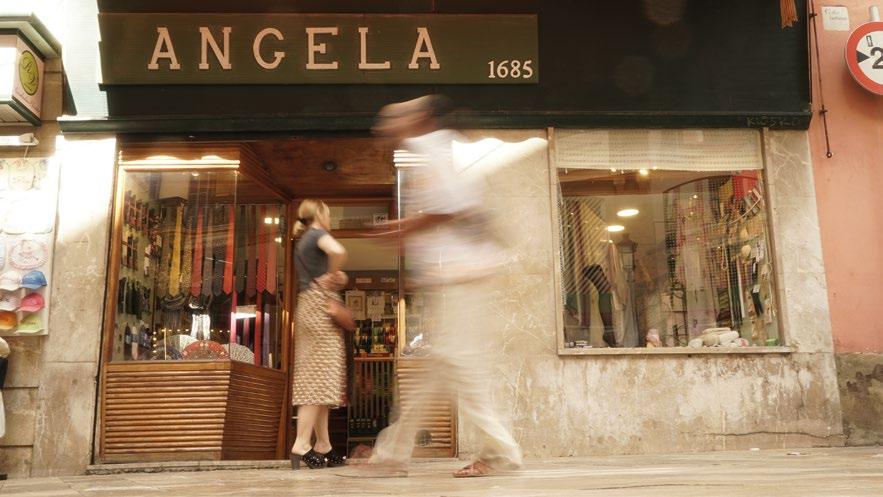






Virginia Servera. Palma
Te llega un SMS al móvil con un enlace a una página web en el que se te informa de un problema con tu cuenta o un pago pendiente. Haces clic en la dirección y rellenas los campos que se muestran con información personal. Los cibercriminales se frotan las manos; acabas de ser víctima de una estafa
cada vez más frecuente.
Toda precaución es poca para protegerse de los ciberataques, de los que todos somos potenciales objetivos, aunque empresas e instituciones estén en la diana. Ya se sabe, el botín es más tentador. Mallorca Global Mag ha querido hablar con dos expertos en Ciencia de la Computación e Inteligencia Artificial e Ingeniería Telemática,
Llorenç Huguet y Josep Lluís Ferrer Gomila, ambos al frente de la Unidad de Innovación Tecnológica en Ciberseguridad de la UIB, para desenmascarar los entresijos de las actuales ciberamenazas.
Para ambos docentes, “son cientos de miles los ordenadores, tabletas y móviles que están colonizados con malware. Una buena parte de ellos lan-
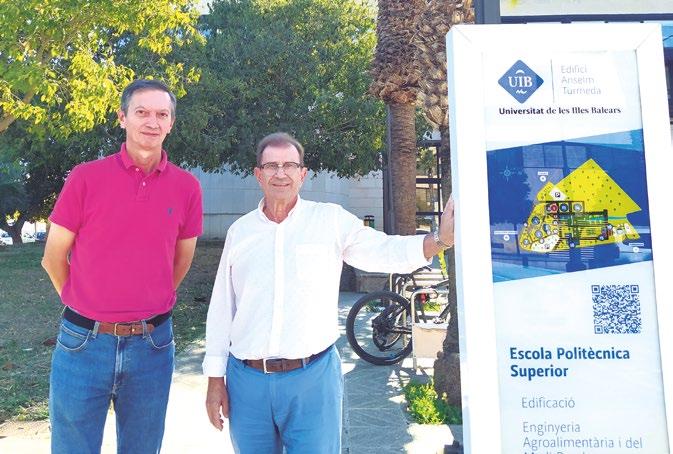
zan ataques contra otros ordenadores, mientras que otra se dedica a obtener información financiera para realizar fraudes económicos. Finalmente, los hay que también se destinan al espionaje de todo tipo”.
La imaginación no parece conocer límites en el campo del ciberespionaje. Huguet y Ferrer describen prácticas como “la inserción de malware en cámaras de videovigilancia, que pasan a estar al servicio de los espías y que, entre otras cosas, han sido utilizadas para realizar ataques DoS (de denegación de servicio), que dejan las webs desbordadas al provocar un exceso de peticiones. Otra, realmente sorprendente –añaden–, es instalar un programa espía en juguetes de niños pequeños, dotados de cámara y conexión a Internet, y, en general en los videojuegos”.

Una conducta que “se da por hecho, aunque no existen publicaciones científicas que avalen tal tesis, es que China obliga a una parte de los fabricantes de dispositivos electrónicos a introducir malware en sus productos, para que sea posible un ciberespionaje silencioso”.
La Administración figura entre las preferencias de los ciberespías y ciberatacantes. Baleares no es una excepción. Recientemente, “tanto el Ayuntamiento de Palma como el IB-SALUT han sido víctimas”, afirman los expertos. Debido a un error humano, el consistorio desembolsó más de 300 mil euros, mien-
tras que el Servicio de Salud recibió un ataque masivo –el mayor en la historia de Baleares– que afectó a 30.000 expedientes médicos.
Al mover grandes montos de dinero, el sector hotelero también es un imán para los ciberdelincuentes. La compañía Meliá Hotels International registró el año pasado un ciberataque de ransomware que le exigía pagar un rescate. “Seguramente ha ocurrido en otros establecimientos porque sabemos que los sistemas de información de las cadenas hoteleras reciben centenares de intentos de ataque a diario”.
En busca del reconocimiento Al margen de las motivaciones económicas, “hay hackers que trabajan de manera incansable porque la satisfacción de lograr la intrusión en un objetivo muy relevante es muy estimulante, aunque solo sea por alimentar su autoestima y obtener la consideración de los otros. Los atacantes que se guían por el orgullo de acceder a sitios restringidos atacan a la NASA, pero también a la cuenta de un estudiante de una universidad. El primero porque le proporcionará prestigio, el segundo porque le puede permitir escalar privilegios hasta llegar a un objetivo de mayor interés”, apuntan los responsables de la Unidad de Innovación Tecnológica en Ciberseguridad de la UIB.
Líderes en ciberespionaje
Rusia, Estados Unidos y China, que “manejan elevados presupuestos, disponen de una tecnología de comunicaciones y un conocimiento más avanzados” que el resto de países, si bien “el país que podríamos considerar más avanzado es Israel, desde múltiples puntos de vista: científico, industria, defensa, etc. Es dudoso que España se ponga a este nivel, ni mucho menos los países en vías de desarrollo, salvo contadas excepciones, como pueda ser Corea del Norte”, matizan los docentes.
Las guerras recientes están demostrando tener “un alto contenido de guerra digital. En el caso concreto de la actual guerra entre Rusia y Ucrania está probado que las batallas no solo se desarrollan en el espacio físico, sino también en el espacio virtual. Y así será, cada vez más, en el futuro”, concluyen.
Llorenç Huguet and Josep Lluís Ferrer Gomila, from the Cybersecurity Unit of the UIB "Hackers who attack NASA also attack a student's account"
You receive an SMS to your mobile phone with a link to a web page informing you of a problem with your account or an outstanding payment. You click on the address and fill in
Las cadenas hoteleras reciben centenares de intentos de ataque a diario”
The hotel chains receive hundreds of attempted attacks on a daily basis"Cada vez se producen más incidentes de seguridad que golpean infraestructuras críticas.
the displayed fields with personal information. The cybercriminals are smiling; you've just fallen victim to an increasingly common scam.

Every precaution is not enough to protect yourself from cyber-attacks, of which we are all potential targets, even if companies and institutions are on the target. As we know, the prize is more tempting. Mallorca Global Mag wanted to talk to two experts in Computer Science and Artificial Intelligence and Telematics Engineering, Llorenç Huguet and Josep Lluís Ferrer Gomila, both at the head of the Unit for Technological Innovation in Cybersecurity at the UIB, to unmask the ins and outs of current cyberthreats.
According to both UIB lecturers, "hundreds of thousands of computers, tablets and mobiles are colonised by malware. A good part of them launch attacks against other computers, while others are dedicated to obtaining financial information to carry out economic fraud. Finally, there are those that also engage in espionage of all kinds."
Imagination seems to know no bounds in the field of cyberespionage. Huguet and Ferrer describe practices such as "the insertion of malware in video surveillance cameras, which become at the service of spies and which, among other things, have been used to carry out DoS (denial of service) attacks, which leave websites overwhelmed by causing an excess of requests. Another really surprising one," they add, "is to install spyware in small children's toys with cameras and Internet connections, and in video games in general".
One behaviour that "is taken for granted, although there are no scientific publications to back up this thesis, is that China forces some of the manufacturers of electronic devices to introduce malware in their products, so that silent cyber espionage is possible".
The Balearic Islands are no strangers to cybercrime Government is one of the preferred targets of cyber-spies and cyberattackers. The Balearic Islands is no
exception. Recently, "both Palma City Council and IB-SALUT have been victims," say experts. Due to human error, the city council paid out more than 300,000 euros, while the health service received a massive attack - the largest in the history of the Balearicsthat affected 30,000 medical files. With large sums of money involved, the hotel sector is also a magnet for cybercriminals. Meliá Hotels International was hit by a ransomware cyber attack last year. "It has probably happened in other establishments because we know that the information systems of hotel chains receive hundreds of attack attempts on a daily basis".
Apart from economic motivations, "there are hackers who work tirelessly because the satisfaction of intruding on a very important target is very stimulating, if only to feed their selfesteem and gain the consideration of others. Attackers who are driven by pride in accessing restricted sites attack NASA, but also a university student's account. The former because it will give them prestige, the latter because it may allow them to escalate privileges until they reach a target of greater interest," point out the heads of the UIB's Cybersecurity Technological Innovation Unit.
Leaders in cyber espionage Russia, the United States and China, which "manage large budgets, have more advanced communications technology and knowledge" than the rest of the countries, although "the country we could consider most advanced is Israel, from multiple points of view: scientific, industrial, defence, etc. It is doubtful that Spain is at this level, much less the developing countries, with a few exceptions, such as North Korea", say the teachers.
Recent wars are proving to have "a high digital warfare content. In the specific case of the current war between Russia and Ukraine, it has been shown that battles are not only fought in physical space, but also in virtual space. And this will increasingly be the case in the future," they conclude.
El primer paso para construir tu hogar



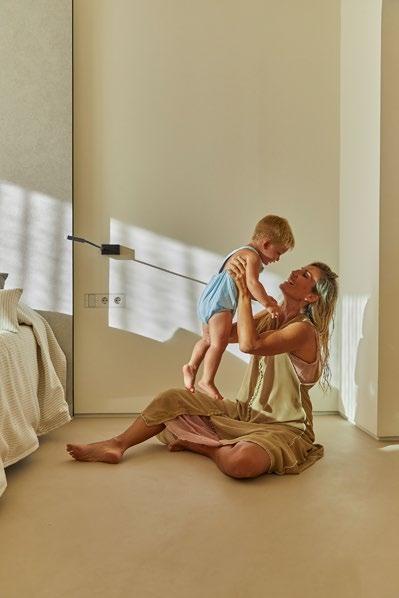
Procede del mundo de la sanidad pero siempre tuvo una fuerte vocación docente. Diego González Carrasco fundó en 1993 la Escuela Universitaria Adema. Desde entonces, el centro educativo se ha dedicado a implantar títulos que no existían en el archipiélago. En 2022, Adema ha sumado el Grado en Bellas Artes a su oferta de títulos, unos estudios que por primera vez pueden cursarse en Balears.
- ¿Cómo surge la idea de crear el grado de Bellas Artes y cuánto tiempo ha supuesto llegar hasta aquí?
- En el sentir, desde hace mucho, porque en mi entorno estoy rodeado de artistas. Yo soy el raro, me dediqué a Ciencias de la Salud. En la Escuela investigamos sobre el desarrollo tecnológico, la realidad virtual y en concreto la háptica -simula el sentido del tacto-, que tanto nos ha hecho destacar. Necesitábamos una transferencia de conocimiento por parte de los artistas hacia los científicos y frente al pánico inmovilista durante la pandemia había que dar un paso adelante y diversificar. Nos preguntamos ¿qué aportamos a la sociedad? Y la creatividad es un elemento estratégico.
- Odontología y Bellas Artes parecen mundos tan diferentes…
- Odontología tiene una gran vertiente artística, versada en la estética facial, la sonrisa, la expresión humana… Comparten un componente intelectual junto a otro de habilidad manual pero, sobre todo, un trasfondo esencial: el tecnológico.
- ¿Hasta qué punto el grado mira al pasado y cuánto mira al futuro?
- Mira a la cantidad pasada y presente
de artistas de grandísima calidad de las islas, que son también polo de atracción de muchísimos artistas internacionales.
Al mismo tiempo, Balears, y Palma en concreto, tienen un nivel altísimo de galerías de arte en una industria creciente. El futuro reside en la aportación creativa de los graduados a múltiples sectores y aquí entra en juego el concepto que corrobora la influencia del arte de manera transversal en muchas áreas. Desde hace unos años, ya se habla de STEAM y no de STEM. Esa A es de arte, porque donde la inteligencia artificial cambiará procesos y profesiones, la presencia de un creativo es esencial. Lo dice la Comisión Europea, EEUU y los grandes foros económicos. En una industria del conocimiento creciente, la A de arte es una estrategia muy importante de desarrollo futuro.
- Para los artistas de Mallorca, ¿qué supone contar con estos estudios?
- Es un elemento más de ayuda a todo el tejido sociocultural y creativo. Desde que empezamos a elaborar el plan de estudios con Antonio Fernández Coca, Pilar Tomás, Amparo Sard y otros grandes expertos nos hemos encontrado una gran acogida con una frase muy repetida: ¡Por fin Bellas Artes! Adema creo que puede aportar una visión investigadora del arte y una estructuración de procesos.
- En cuanto al profesorado, ¿se ha formado con personalidades de las islas o también del resto de España y de otros países?
- De los tres ámbitos. Hay grandísimos profesionales locales que forman el eje vertebral de nuestro equipo docente y hay voluntad de ir incorporando más. También las relaciones internacionales nos parecen estratégicas y hemos abierto puertas con las principales facultades del mundo como la Arts of London, Columbia de Chicago, París, Milán… La
realidad virtual háptica ha llamado mucho la atención. En Chicago, acudimos con Amparo Sard y te das cuenta de la magnitud de la artista que tenemos. En poco tiempo, Amparo ha conseguido hacer realidad la utilización de esta tecnología y ha sorprendido al resto de universidades.
- El sector del arte está consolidándose en la isla. ¿El grado afianza este crecimiento?
- Partimos con fortalezas para desarrollarlo bien, un gran equipo humano, equipamiento de último nivel, apoyo social y humildad. Es una simbiosis y sin duda crecerá. Cuando nos visitan otras universidades tienen contacto con los artistas y se generan proyectos. Que nuestros profesores salgan a otras universidades también es un escaparate para nuestras islas.
- ¿Cuál es el perfil del estudiante del grado y qué papel pueden jugar los futuros graduados?
- La pasión. Hay estudiantes que han terminado bachillerato artístico o FP y también de más edad, porque fueron los estudios que no pudieron cursar. A nivel de inserción laboral hay un campo muy amplio. Desde la industria del diseño, del conocimiento, la creación artística, la docencia… Las personas creativas encuentran salidas porque tienen otra forma de pensar diferente al escenario habitual.
- ¿Trabaja en implementar nuevos estudios?
- Trabajamos en el desarrollo de másteres y el afianzamiento de lo que tenemos dentro de un modelo de escuela pequeña que quiere ser pequeña. Somos el equivalente a un hotel boutique o un restaurante de autor. La docencia en masa no es nuestro estilo.
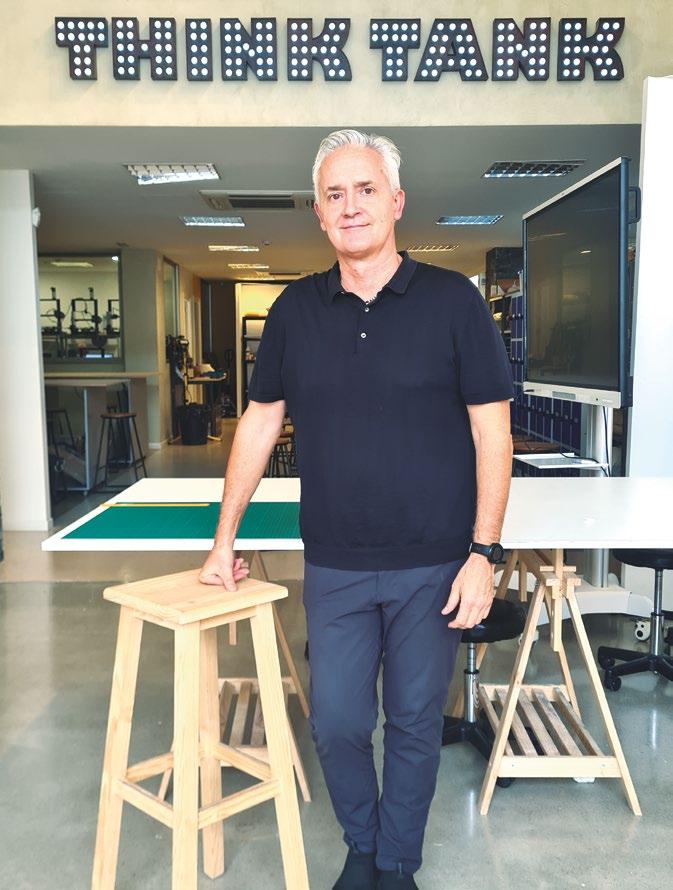
La realidad virtual háptica nos permite crear obras que son táctiles en un metaverso”
“Simplemente reunirte con personas que ven otras perspectivas enriquece y te lleva a buscar soluciones donde no las estabas buscando. Necesitábamos generar nuevos entornos virtuales y técnicas de creación que pudiéramos aplicar a la docencia en Ciencias de la Salud. Cuando nos reunimos con investigadores y doctores de Bellas Artes, vimos que son más hábiles y rápidos a la hora de buscar el uso de esta tecnología tan avanzada que tenemos. Amparo Sard dice “guau”; con la realidad virtual háptica y la tendencia del criptoarte y los NFT podemos crear obras que no son solo visuales, sino que son táctiles en un metaverso. Y ahí es donde irrumpen con su relato artístico, que casa con esa obra que triunfa en Arco, en Chicago, etc. Una gran artista consigue transformar nuestro conocimiento tecnológico -uso de la radiografía 3D, imagen avanzada, impresión 3D o mecanización de estructuras- para aplicarlo en el arte”.
- ¿Cómo congenia la oferta privada universitaria con la pública?
- Yo soy un gran defensor de la economía mixta. Las dos partes aportan beneficios a la sociedad y nuestra convivencia con la UIB es muy correcta. Nos aporta criterio, control y procesos de calidad que dan transparencia. Nosotros aportamos la creatividad y a veces la agilidad para adaptarnos a una sociedad muy cambiante. Implantar títulos universitarios es muy difícil desde los dos ámbitos. Nosotros hemos hecho nuestro estudio de mercado y personal porque no es solo un proyecto económico, que también, sino que es algo que nos realiza.
Diego González, president of Adema University School "The
for future development"
He comes from the healthcare sector but has always had a strong vocation for teaching. Diego González Carrasco founded the Adema University School in 1993. Since then, the educational centre has been dedicated to introducing degrees that did not exist in the archipelago. In 2022, Adema has added the Fine Arts degree.
- How did the idea of creating the Fine Arts degree come about and how long has it taken to get this far?
- I've been feeling it for a long time, because I'm surrounded by artists. I'm the odd one out, I went into Health Sciences. At the School we researched technological development, virtual reality and specifically haptics - it simulates the sense of touch - which has made us stand out so much. We needed a transfer of knowledge from artists to scientists, and in the face of the immobile panic during the pandemic, we had to take a step forward and diversify. We asked ourselves, what do we contribute to society? And creativity is a strategic element.
- Dentistry and Fine Arts seem like such different worlds...
- Dentistry has a great artistic side, versed in facial aesthetics, the smile, human expression... They share an intellectual component along with another of manual skill but, above all, an essential background: technology.

- To what extent does the degree look to the past and how much does it look to the future?
- It looks to the past and present quantity of very high quality artists from the islands, which are also a magnet for many international artists. At the same time, the Balearics, and Palma in particular, have a very high level of art galleries in a growing industry. The future lies in the creative contribution of graduates to multiple sectors, and this is where the concept comes into play that corroborates the cross-cutting influence of art in many areas. For some years now, people have been talking about STEAM rather than STEM. That A stands for Art, because where artificial intelligence will change processes and professions, the presence of a creative person is essential. This is what the European Commission, the US and the major economic forums are saying. In a growing knowledge industry, the A for Art is a very important strategy for future development.
- What does it mean for artists in Mallorca to have these studios?
- It is one more element of support for the entire socio-cultural and creative network. Since we began to develop the
Gomila - un proyecto que transformará todo el distrito de El Terreno en Palma en un barrio animado y vibrante. El impresionante proyecto en torno a la Plaza Gomila se compone de cuatro edificios existentes que se están renovando y tres edificios nuevos, todos ellos con características propias en cuanto a color, materiales y estilo, que armonizan perfectamente entre sí y con el estilo de vida urbano mediterráneo. Gomila ofrece 38 pisos y casas adosadas de diferentes tipos y tamaños, así como espacios comerciales. Los renombrados estudios de arquitectura MVRDV (Rotterdam, Países Bajos) y GRAS (Palma de Mallorca) diseñaron este proyecto por encargo de la familia Fluxà, propietaria de la marca de zapatos mallorquina Camper, con el deseo de revivir la esencia de un barrio que muchos mallorquines recuerdan.
Gomila - a project that will transform the entire El Terreno district in Palma into a lively and vibrant neighbourhood. The impressive project around Plaza Gomila consists of four existing buildings that are being renovated and three new buildings, all with their own characteristics in terms of colour, materials and style, perfectly harmonising with each other and with the Mediterranean urban lifestyle. Gomila offers 38 apartments and townhouses of different types and sizes, as well as commercial spaces. The renowned architecture firms MVRDV (Rotterdam, Netherlands) and GRAS (Palma de Mallorca) designed this project on behalf of the Fluxà family, owners of the Mallorcan shoe brand Camper, with the desire to revive the essence of a neighbourhood that many Mallorcans remember.

"Simply meeting people who see other perspectives is enriching and leads you to look for solutions where you weren't looking for them. We needed to generate new virtual environments and creative techniques that we could apply to teaching in the health sciences. When we met with researchers and doctors of Fine Arts, we saw that they are more skilful and quicker when it comes to looking for the use of this advanced technology we have. Amparo Sard says "wow"; with haptic virtual reality and the trend of crypto-art and NFTs we can create works that are not just visual, but tactile in a metaverse. And that's where they break through with their artistic narrative, which matches that work that triumphs in Arco, in Chicago, etc. A great artist manages to transform our technological knowledge - the use of 3D radiography, advanced imaging, 3D printing or mechanisation of structures - to apply it to art".
curriculum with Antonio Fernández Coca, Pilar Tomás, Amparo Sard and other great experts, we have received a great reception with a much-repeated phrase: Finally Fine Arts! I also believe that it can provide a research vision of art and a structuring of processes.
- As for the teaching staff, have you worked with personalities from the islands or also from the rest of Spain and other countries?
- From all three areas. There are great local professionals who form the backbone of our teaching team and we are willing to incorporate more. We also consider international relations to be strategic and we have opened doors with the main colleges in the world, such as the Arts of London, Columbia in Chicago, Paris, Milan... Haptic virtual reality has attracted a lot of attention. In Chicago, we went with Amparo Sard and you realise the magnitude of the artist we have. In a short time, Amparo has managed to make the use of this technology a reality and has surprised the rest of the universities.
- The art sector is consolidating on the island. Does the degree consolidate this growth?
- We start with strengths to develop it well, a great team, state-of-the-art
equipment, social support and humility. It is a symbiosis and it will undoubtedly grow. When other universities visit us, they have contact with the artists and projects are generated. The fact that our professors go to other universities is also a showcase for our islands.
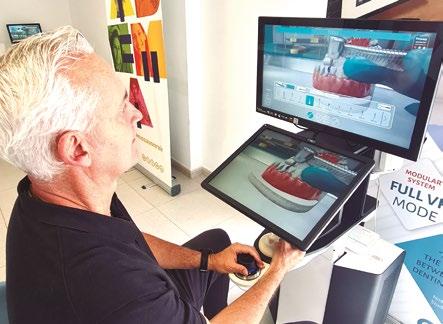
- What is the profile of the undergraduate student and what role can future graduates play?
- Passion. There are students who have completed the artistic high school or vocational training and also older students, because they were the studies they were unable to pursue. In terms of employment, there is a very broad spectrum. From the design industry, knowledge, artistic creation, teaching... Creative people find opportunities because they have a different way of thinking from the usual scenario.
- Are you working on implementing new studies?
- We are working on developing master's degrees and consolidating what we have within a model of a small school that wants to be small. We are the equivalent of a boutique hotel or a signature restaurant. Mass teaching is not our style.
- How does the private university offer fit in with the public one?
- I'm a big advocate of a mixed economy. Both sides bring benefits to society and our coexistence with the UIB is very good. It gives us criteria, control and quality processes that provide transparency. We bring creativity and sometimes the agility to adapt to a very changing society. Implementing university degrees is very difficult in both areas. We have carried out our market and personal study because it is not only an economic project, which is also true, but it is something that fulfils us.
Haptic virtual reality allows us to create works that are tactile in a metaverse"La realidad virtual háptica simula el contacto con el diente. Foto: ADEMA

Aprincipios del siglo XIX, la Iglesia gozaba de enormes privilegios, fruto de jugar un papel determinante durante siglos. Destacaba su sólida base económica procedente de cuantiosas rentas que había ido acumulando desde la Alta Edad Media. Al mismo tiempo, la institución eclesiástica, especialmente a través del Santo Oficio, ejercía un férreo control sobre las ideas y la libertad personal de cada uno de los individuos que conformaban la sociedad de entonces.
Los integrantes del clero formaban un grupo social importante. Sólo en Mallorca, en 1803, había unos 1.480 religiosos y religiosas, cuyas rentas líquidas sobrepasaban las 150.000 libras mallorquinas anuales; a la vez, poseían un elevado número de propiedades inmuebles, tanto en las ciudades y villas como en el campo.

Esta realidad chocaba frontalmente con los intereses de la burguesía, impulsada desde el siglo XVIII por las ideas de la Ilustración. Durante el Trienio Constitucional (1820-1823), los liberales intentaron legislar y gobernar tomando medidas encaminadas a conseguir una sociedad más moderna, que favoreciese el acceso a la propiedad privada. En este sentido, desde el Gobierno se ordenó la desamortización de los bienes inmuebles de la Iglesia. A la ejecución de estas nuevas leyes liberales se opusieron firmemente la jerarquía eclesiástica y la nobleza, que no querían perder sus antiguos privilegios.
Fue este contexto de fuertes tensiones entre liberales y absolutistas en
el que se deben situar los hechos que sucedieron durante la noche del 28 de febrero de 1823, en Palma.
A las doce de aquella noche, las autoridades liberales encabezadas por
el alcalde segundo Jerónimo Alemany, y acompañadas por un grupo de soldados, se dirigieron al convento de Santo Domingo, que se encontraba en el solar que actualmente ocupa el Parlament
Balear. Este convento, aparte de ser una joya arquitectónica del medievo, se consideraba la sede de una poderosa orden: los dominicos, que desde la Edad Media habían controlado la Inquisición, lugar, recordémoslo, en el que estaban expuestos los sambenitos con los quince apellidos chuetas. Por ello, los liberales palmesanos no dudaban en afirmar que ese lugar “había sido concebido por el príncipe de las tinieblas”.
Al llegar al convento, se conminó a los frailes a abandonarlo de inmediato y dirigirse al puerto para que embarcasen con destino a Cartagena. Quedaban exentos del traslado los dominicos ancianos y los enfermos. El concejal Alemany se comportó con tropelía con los frailes pues no les permitió que entrasen en sus celdas y les obligó a abandonar la isla sólo con lo puesto. Lo mismo se hizo con los frailes capuchinos. Éstos tenían la costumbre diaria de tocar la campana a medianoche, por lo que las autoridades, con alevosía, esperaron a que sonase la campana de
las doce para, acto seguido, sin levantar sospechas, proceder a la detención y expulsión de los religiosos. También se embarcaron cinco monjes del Císter, procedentes del monasterio de La Real.
Parece ser que esa misma noche el convento de Santo Domingo fue saqueado por no pocos ladrones. A la mañana siguiente la Administración Pública se apoderó de los bienes muebles que quedaban. Todos ellos fueron subastados.
Entre esos bienes se encontraba una joya del gótico mallorquín: el facistol en forma de unicornio que databa del 1353, parece ser que fabricado en Nápoles, y que estaba blasonado con las armas heráldicas de Andreu Sescala. Por desgracia se vendió fuera de Mallorca.
Al llegar a Cartagena los dominicos fueron trasladados a Orihuela, mientras que los capuchinos fueron a Murcia. Se acababa así con una de las poderosas órdenes mendicantes que durante siglos tanto habían influido sobre la sociedad isleña.
At the beginning of the 19th century, the Church enjoyed enormous privileges, the result of playing a decisive role for centuries. It had a solid economic base that came from the large rents it had been accumulating since the High Middle Ages. At the same time, the ecclesiastical institution, especially through the Holy Office, exercised tight control over the ideas and personal freedom of each of the individuals who made up the society of the time.
Members of the clergy formed an important social group. Only in Mallorca, in 1803, there were around 1,480 religious men and women, whose net income exceeded 150,000 Mallorcan pounds per year; at the same time, they owned a large number of real estate properties, both in the cities and towns, as well as in the countryside.
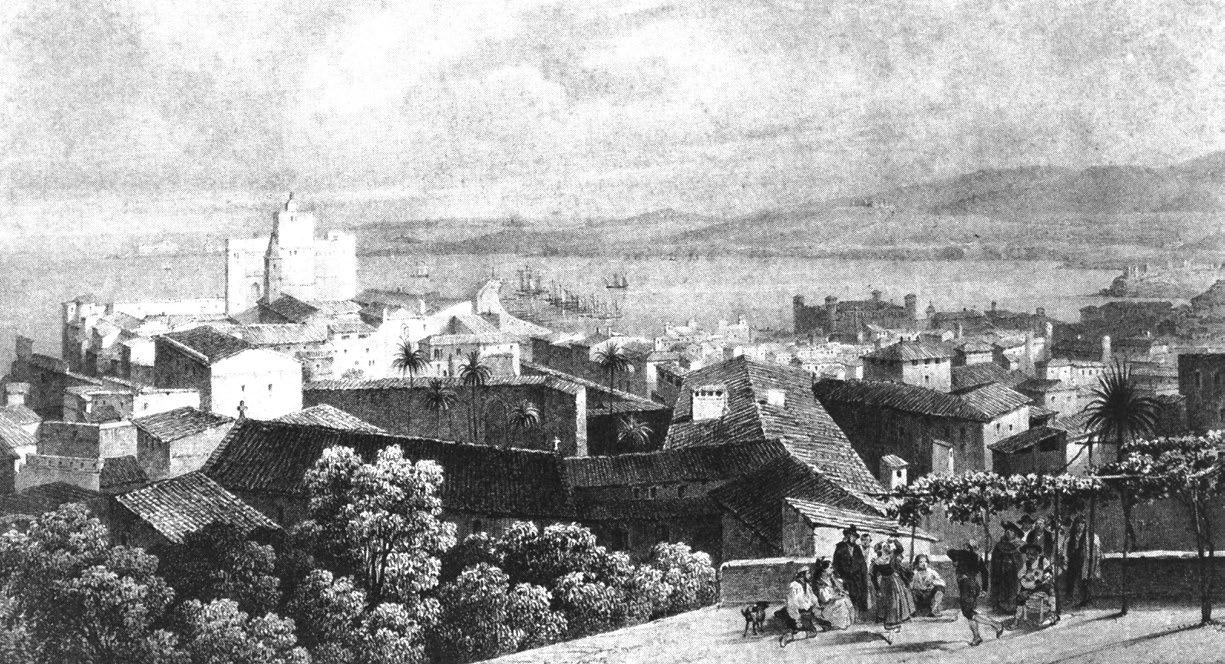
This reality clashed head-on with the interests of the bourgeoisie, driven since the 18th century by the ideas of the Enlightenment. During the Constitutional Triennium (1820-1823), the liberals tried to legislate and govern by taking measures aimed at achieving a more modern society that would favour access to private property. To this end, the government ordered the confiscation of Church property. The implementation of these new liberal laws was strongly opposed by the ecclesiastical hierarchy and the nobility, who did not want to lose their former privileges.




It was in this context of strong tensions between liberals and absolutists that the events that took place on the night of 28th February 1823 in Palma should be placed.
At midnight that night, the liberal authorities led by the second mayor, Jerónimo Alemany, and accompanied by a group of soldiers, went to the convent of Santo Domingo, which was -



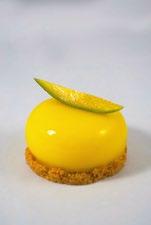


pied by the Balearic Parliament. This convent, apart from being an architectural jewel from the Middle Ages, was considered to be the headquarters of a powerful order: the Dominicans, who had controlled the Inquisition since the Middle Ages, a place, let recall, where the stigma with the fifteen chuetas surnames were exhibited. For this reason, the Palma liberals did not hesitate to say that this place "had been conceived by the prince of darkness".
On arriving at the convent, the friars were ordered to leave it immediately and go to the port to embark for Cartagena. The elderly and sick Dominicans were exempted from the transfer. The councillor Alemany behaved in an outrageous manner with the friars, as he did not allow them to enter their cells and forced them to leave the island with only the clothes on their backs. The same was done to the Capuchin friars. The Capuchin friars had the daily custom of ringing the bell at midnight, so the authorities, with malice
aforethought, waited for the twelve o'clock bell to ring and then, without arousing suspicion, proceeded to arrest and expel the friars. Five Cistercian monks from the monastery of La Real also embarked.
It seems that the same night the convent of Santo Domingo was ransacked by more than a few thieves. The following morning the Public Administration seized the remaining movable property. All of them were auctioned.
Among these goods was a jewel of Mallorcan Gothic: the choir lectern in the shape of a unicorn dating from 1353, apparently made in Naples, and emblazoned with the heraldic arms of Andreu Sescala. Unfortunately, it was sold outside Mallorca.
On arriving in Cartagena, the Dominicans were transferred to Orihuela, while the Capuchins went to Murcia. This was the end of one of the powerful mendicant orders that for centuries had had such an influence on the island's society.
Un pequeño vivero a las afueras de Madrid fue el comienzo de Fronda, fundada en 1975 y constituida por un equipo con mucha ilusión que acompañó a Consuelo, su fundadora, en el primer desarrollo de la empresa.
Sus Centros de Jardinería integran de manera armónica las plantas, los complementos para el jardín, las flores, la decoración y los productos para el cuidado y la atención a las mascotas. En cada tienda, crean un mundo de sensaciones para los clientes, con quienes comparten su pasión por la jardinería y la naturaleza.
Hoy las plantas no solo están en los jardines, sino también en el interior de casa. Han pasado a ser un elemento muy importante de los hogares, decoran, mejoran el estado de ánimo y, además, generan un impacto positivo en el medioambiente.
Para Fronda es importante estar cerca de los hogares y adaptar su negocio a las necesidades de los clientes. Por eso, en 2017 apostaron por abrir la tienda online fronda.com para llegar a toda la península y Baleares. También eligieron Palma para abrir su primer ‘concept store’ en un edificio tan emblemático y apreciado por su historia: el Palacio Avenida. La decoración natural, la planta de interior, las flores y los aromas son el corazón de esta nueva tienda urbana, con una propuesta dinámica, llena de color, personalidad y diseño.
Las plantas, también en las empresas Además del hogar, muchos hoteles, restaurantes, tiendas e incluso aeropuertos apuestan por esta tendencia de decoración natural. Las plantas ayudan a estar cómodos y a sentirse como en casa, algo que los comercios saben. Así nace Fronda PRO, un departamento especializado en grandes cuentas que profundiza en las necesidades específicas de cada uno de ellos y ofrece una atención personali-
zada y servicios a medida. Algunas empresas que confían en Fronda son Bless Hotel Madrid, perteneciente al grupo Rosewood, Grupo Melià, Castillo de Son Vida y grupos de restauración como Larrumba, LaLaLa, Starbucks, Vips, Ginos, espacios multimarca o AENA en los aeropuertos de Madrid y Palma, entre otros.
En la actualidad, Fronda gestiona un ecommerce, una tienda urbana y seis grandes centros de jardinería donde reciben al año más de 1 millón de visitas en una superficie total de 68.000 m2, dando empleo a más de 250 personas.
A small nursery on the outskirts of Madrid was the beginning of Fronda, founded in 1975 and made up of a team with a lot of enthusiasm that accompanied Consuelo, its founder, in the first development of the company.
Their Garden Centres harmoniously integrate plants, garden accessories,

flowers, decoration and products for the care and attention of pets. In each shop, they create a world of sensations for their customers, with whom they share their passion for gardening and nature.

Greenlover trend
Today plants are not only in the garden, but also inside homes. They have become a very important element in the house, they decorate, improve the mood and also have a positive impact on the environment.

For Fronda, it is important to be close to homes and to adapt its business to the needs of its customers. That is why, in 2017, they decided to open the online shop fronda.com to reach
the entire peninsula and the Balearic Islands. They also chose Palma to open their first concept store in a building so emblematic and appreciated for its history: the Palacio Avenida. Natural decoration, indoor plants, flowers and aromas are the heart of this new urban shop, with a dynamic proposal, full of colour, personality and design.
In addition to the home, many hotels, restaurants, shops and even airports are also opting for this natural decoration trend. Plants help to make people feel comfortable and at home, something that businesses are well aware of. This is how Fronda PRO was born, a department

specialised in large accounts that delves into the specific needs of each one of them and offers personalised attention and tailor-made services.
Some of the companies that trust Fronda are Bless Hotel Madrid, belonging to the Rosewood group, Grupo Melià, Castillo de Son Vida and restaurant groups such as Larrumba, LaLaLa, Starbucks, Vips, Ginos, multi-brand spaces or AENA at Madrid and Palma airports, among others.
Fronda currently manages an ecommerce, an urban shop and six large garden centres where they receive more than 1 million visits a year in a total area of 68,000 m2, employing more than 250 people.
La superficie de tiendas Fronda supera los 68.000 m2. Las empresas también apuestan por las plantas en su decoración.El esfuerzo ciudadano a la hora de depositar su basura en el contenedor que toca es clave para que los residuos puedan ser reciclados. Y en Mallorca, el modelo funciona. Los residuos generados en la isla crecen cada año, pero también aumentan los que se reciclan. Todo ello sin la existencia de vertederos desde 2011. Aquello que no puede ser enviado a los recicladores pasa por la planta de “valorización energética”, un eufemismo del sector para hablar de incineración. “De Pirineos para arriba hay cero vertederos y los que más reciclan son los que más incineran”, asegura Joan Mateu Barceló, responsable de comunicación de Tirme. No ocurre lo mismo en las vecinas Menorca e Ibiza, ni en la mitad sur de la península. ¿Al final todo se mezcla? La respuesta es fácil, asegura Joan Mateu Barceló: “Para desmontar este bulo, que vengan a ver físicamente el circuito de los residuos después de que el ciudadano haya hecho el esfuerzo de la separación”. Portales web como dondelotiro.com ayudan a la hora de elegir contenedor al introducir el residuo y la dirección.
The effort made by citizens to put their rubbish in the right bin is key to ensuring that waste can be recycled. In Mallorca, the model works. The amount of waste generated on the island is growing every year, but the amount of waste that is recycled is also increasing. All this without the existence of landfills since 2011. What cannot be sent to recyclers goes through the "energy recovery" plant, a euphemism in the sector for incineration. "From the Pyrenees upwards there are zero landfills and those who recycle the most are those who incinerate the most," says Joan Mateu Barceló, head of communications at Tirme. This is not the case in neighbouring Menorca and Ibiza, nor in the southern half of the peninsula.
Does it all get mixed up in the end? The answer is easy, says Joan Mateu Barceló: "To dismantle this myth, we let people come and physically see the waste circuit after the citizen has made the effort to separate it". Web portals such as dondelotiro.com help when it comes to choosing a container by entering the waste and the address.
Rechazo: Entra aquello que no se separa en casa -el contenedor gris-. “Desgraciadamente, no todo es reciclable”. No obstante, la incineración de residuos en Tirme genera una energía que en 2021 equivalió al suministro de 88.000 viviendas, a lo que se suma el consumo de la propia planta.
Sí: Todo lo que no puede ir a selectiva es rechazo, incluidos aquellos residuos que se generan en el baño. Una vez incinerados, en las escorias se recuperan materiales, sobre todo metales. “No te imaginas lo que podemos encontrar: toneladas de grifos, que es latón y tiene un precio de mercado que después vendemos. Cucharas, tenedores, juegos de llaves, monedas, bolas de petanca… Es increíble”.
No: Objetos muy grandes. Ejemplos que se han visto son una moto de agua, un termo eléctrico... “Puede generar obstrucciones y tienen otro circuito: o bien los puntos verdes o bien la retirada por parte de los instaladores, que están obligados a ello”.
Waste discharge: What is not separated at home - the grey bin - goes in. "Unfortunately, not everything can be recycled. Nevertheless, waste incineration at Tirme generates energy that in 2021 was equivalent to supplying 88,000 homes, in addition to the consumption of the plant itself.
Yes: Everything that cannot go to selective is discarded, including waste generated in the toilet. Once incinerated, the slag is used to recover materials, especially metals. "You can't imagine what we can find: tons of taps, which is brass and has a market price that we then sell. Spoons, forks, sets of keys, coins, pétanque balls... It's incredible."
No: Very large objects. Examples that have been seen are a jet ski, an electric boiler... "It can generate obstructions and they have another circuit: either the green zones or the removal by the installers, who are obliged to do so".
Papel y cartón: “Los porcentajes de impropios son muy bajos, la gente tiene esta parte muy asumida”. En Tirme lo reciben, lo compactan y lo envían al reciclador.
Sí: Libros, cajas, publicaciones, tiques de compra… Todo lo que sea celulosa.
No: Caja de pizza o con comida, papel de cocina… “Iría a rechazo, porque la grasa impide el reciclaje”. ¿Se debe quitar la espiral metálica de un cuaderno? La planta retira estos elementos por electromagnéticos, por lo que “separarlo ya sería de nota”.
Paper and cardboard: "The percentage of improper waste is very low". At Tirme they receive it, compact it and send it to the recycler.


Yes: Books, boxes, publications, shopping receipts... Everything that is cellulose.
No: Pizza boxes or boxes with food, kitchen paper... "It would be discharge waste, because the grease prevents the paper from being recycled".
Vidrio: “Es un material reciclable al 100% y de forma infinita. Se funde y se vuelven a hacer botellas”, explican.

Sí: Botes y botellas.
No: Vidrio plano, “porque es cristal” -espejos, ventanas…-. Tampoco bombillas, vasos…
Glass: "It is a 100% recyclable material and infinitely recyclable. It can be melted down and made into bottles again," they explain.
Yes: jars and bottles.
No: Flat glass, "because it is crystal" -mirrors, windows...-. Nor light bulbs, cups...
Envases: El contenedor amarillo, de plásticos o, mucho mejor, de envases, alberga “una gama muy variada de plásticos. Todo se mete allí y en Tirme lo separamos por tipo de material: PET, PEAD, bricks, aluminio, acero…”.
Sí: Muchos ciudadanos olvidan que aquí deben tirar los bricks. “Son envases y van a un reciclador específico de tetra bricks, al igual que cada plástico se envía a un reciclador diferente”.
No: “No es un contenedor de plástico; a día de hoy, es de envases. Por eso muchos plásticos que no sean envases no se podrán separar, como flotadores, bolígrafos o perchas, que irían al rechazo”. Tampoco hace falta que los envases estén limpios, “provocaría un elevado consumo de agua y ya lo hace el reciclador, pero sí que estén vacíos para su correcto tratamiento”.
Packaging: The yellow bin holds "a very varied range of plastics. Everything goes in there and at Tirme we separate it by type of material: PET, HDPE, bricks, aluminium, steel...".


Yes: Many citizens forget that they have to throw away the bricks here.
No: "It's not a plastic bin; as of today, it's a packaging bin. That's why many plastics that are not packaging cannot be separated, such as floats, pens or coat hangers, which would go to discharge waste". Nor is it necessary for the packages to be clean but empty".
Orgánica: Sin contar Palma, el 80% de Mallorca tiene recogida selectiva puerta a puerta, un sistema que incluye la orgánica -contenedor marrón-. De cada 100 toneladas de orgánica, entre 5 y 15, según el municipio, fueron rechazo el año pasado, unas cifras muy positivas.
Sí: Restos de comida, alimentos caducados o en mal estado, en un principio sin envase. Tapón de corcho -los de plástico tendrían que ir a rechazo-. No: Podas -tienen su propio flujo-, papel y cartón, pañales (van a rechazo y suponen el error más común).
Organic: Excluding Palma, 80% of Mallorca has door-to-door selective collection, a system that includes organic waste (brown bin). Out of every 100 tonnes of organic waste, between 5 and 15, depending on the municipality, were waste discharge last year, very positive figures.
Yes: food waste, expired or spoiled food, initially without packaging. Cork stoppers - plastic ones should be discharged.

No: Prunings - they have their own flow -, paper and cardboard, nappies (they go to waste discharge and are the most common error).
De arriba abajo, trabajadores en la planta de envases, planta de valorización energética y sala de control de Tirme. Fotos: Tirme.


La ‘fast fashion’ aumenta el impacto ambiental de la industria textil · Cuero, seda y lana, materiales menos sostenibles
R. B. PalmaEl impacto ambiental de la industria textil está en entredicho por culpa de la popular ‘fast fashion’. Moda rápida y barata que repercute en una gran generación de residuos que pocas veces terminan reciclándose.

Según un informe de la OCU, la industria textil contribuye al cambio climático, ocupando el tercer puesto entre los sectores que más agua consumen. La organización de consumidores alerta de que “compramos más ropa de la que necesitamos y cada vez la usamos menos tiempo”, ya que casi la mitad de lo que se compra se desecha antes de un año. Residuos que terminan en vertederos y zonas remotas mientras se espera a que, a partir de 2025, comience la obligatoriedad de la recogida selectiva de textiles en España.
The environmental impact of the textile industry is being called into question due to the popular 'fast fashion'. Fast and cheap fashion results in a large amount of waste that is rarely recycled. According to an OCU report, the textile industry contributes to climate change, ranking third among the sectors that consume the most water. The consumer organisation warns that "we buy more clothes than we need and wear them for less and less time", as almost half of what is bought is discarded within a year. Waste that ends up in landfills and remote areas while waiting for the compulsory selective collection of textiles in Spain to begin in 2025.
Evita la ‘fast fashion’ / Avoid 'fast fashion'.
Compra ropa de materiales sostenibles, como algodón ecológico o poliéster biodegradable.
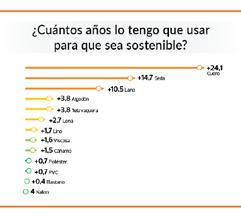
/ Buy clothes made of sustainable materials, such as organic cotton or biodegradable polyester.
Usa la ropa más tiempo. Compra y vende ropa de segunda mano.
/ Wear clothes longer. Buy and sell second-hand clothes.
Haz arreglos en la ropa cuando sea necesario./ Have clothes altered when necessary.
Compra prendas hechas con material reciclado. / Buy clothes made from recycled material.
Tira la ropa en contenedores adecuados. / Dispose of clothes in appropriate containers.
Compra ropa hecha en Europa, apuesta por los productos locales. / Buy clothes made in Europe, go for local products.
Reduce la presencia de accesorios como cremalleras o botones.
/ Reduce the presence of accessories such as zips or buttons.
Elige prendas no teñidas. / Choose clothes that are not dyed.
Fuente: OCU.
Tell me how you dress and I'll tell you what you consumeTIPS FOR A SUSTAINABLE WARDROBE Según la OCU, compramos más ropa de la que necesitamos. Foto: Envato.
 Antoni Riera Font
Director de Impulsa Balears y catedrático de la UIB Director of Impulsa Balears and Professor at the UIB
Antoni Riera Font
Director de Impulsa Balears y catedrático de la UIB Director of Impulsa Balears and Professor at the UIB
casualidad, consideramos que su fuerza explicativa es nula y su validez efímera. Muy al contrario de lo que requerimos en la tarea de comprender el funcionamiento de la economía y anticipar su evolución. Sin embargo, aunque las coincidencias no son nunca un resultado, esconden siempre algo aprovechable.
Como aprovechable es ahora entender y explicar cuál es el impacto de la coincidencia que se da en estos momentos en Balears. Pues, por un lado, la senda de crecimiento balear está sufriendo un ‘proceso de ajuste’ –que encuentra su razón de ser en una inflación pegajosa– y, por otro lado, no ha cerrado todavía el ‘proceso de normalización’ que abrió después del shock que supuso la pandemia.
Estas mismas preguntas –qué implica y cuál es su impacto– cuando se refieren a circunstancias especiales con capacidad de incidir en la competitividad global, adquieren si cabe mayor relevancia, pues proporcionan una información muy superior a la que se obtiene del seguimiento a corto de las fluctuaciones del PIB y del empleo, a la vez que permiten el diseño de políticas económicas que proporcionan también unos beneficios sociales muy superiores.

De ahí que, de ahora en adelante, sea preciso vigilar los diferenciales de inflación, pues son problemáticos en la medida en que puedan ser el reflejo de pérdidas de competitividad, con efectos a
medio y largo plazo. No en vano, el World Economic Forum sitúa la estabilidad macroeconómica, y con ello, la estabilidad de precios, como uno de los pilares más importantes para alcanzar mayores niveles de competitividad.
A corto plazo, la economía balear tiene, en principio, resortes suficientes para afrontar los primeros problemas que han empezado a aparecer en materia de estabilidad de precios. Se parte de una situación de razonable moderación salarial y se cuenta con margen para aumentar la productividad. Además, la situación financiera de las empresas está saneada. Sin embargo, a medio plazo, existe el riesgo de que las tensiones inflacionistas incubadas adquieran inercia en el proceso de formación de costes y precios, prolongando en el tiempo los indicios de pérdida de competitividad observados. Esto es lo que ocurrirá si la desviación de la senda de estabilidad de los precios, activa mecanismos de indiciación ‘ex post’ de rentas y de precios.
No es exagerado concluir, por tanto, diciendo que la economía balear se enfrenta a un reto de competitividad que constituye la primera comprobación del potencial desestabilizador que esconde esta coincidencia. De hecho, apunta a una profunda revisión de la globalización, para adoptar la regionalización del comercio y la producción. Un tránsito hacia una menor y más cara disponibilidad de materias primas y productos que abre retos geoestratégicos de gran alcance desde Asia hasta el Ártico, de los que Balears no resultará indemne.
Economists dismiss coincidences. Always attributed to chance, we consider that their explanatory power is null and void and their validity ephemeral. Quite the opposite of what we need to understand the workings of the economy and anticipate its evolution. However, although coincidences are never a result, they always conceal something useful.
It is now time to understand and explain the impact of the coincidence that is currently occurring in the Balearic Islands. On the one hand, the Balearic growth path is undergoing a 'process of adjustment' - which finds its raison d'être in sticky inflation - and, on the other hand, the 'process of normalisation' that began after the shock of the pandemic has not yet come to an end.
These same questions - what does it imply and what is its impact - when they refer to special circumstances with the capacity to affect global competitiveness, take on even greater relevance, as they provide much greater information than that obtained from short-term monitoring of fluctuations in GDP and employment, while at the same time allowing the design of economic policies that also provide much greater social benefits.
Hence, from now on, inflation differentials need to be monitored, as they are problematic insofar as they may reflect losses in competitiveness, with medium- and longterm effects. It is no coincidence that the World Economic Forum considers macroeconomic stability, and therefore price stability, to be
one of the most important pillars for achieving higher levels of competitiveness.
In the short term, the Balearic economy has, in principle, sufficient leverage to tackle the first problems that have begun to appear in terms of price stability. The starting point is a situation of reasonable wage moderation and there is room to increase productivity. Moreover, the financial situation of companies is sound. However, in the medium term, there is a risk that incubating inflationary pressures could gain inertia in the cost and price formation process, prolonging over time the signs of competitiveness losses observed. This is what will happen if the deviation from the path of price stability triggers ex post income and price indexation mechanisms.
It is no exaggeration to conclude, therefore, that the Balearic economy faces a competitiveness challenge that constitutes the first proof of the destabilising potential hidden in this coincidence. In fact, it points to a profound revision of globalisation, in order to adopt the regionalisation of trade and production. A transition towards less and more expensive availability of raw materials and products that opens up far-reaching geostrategic challenges from Asia to the Arctic, of which the Balearic Islands are a part.
Ciertamente el miedo es una de las emociones más interesantes y paradójicas de la evolución humana. Anatómicamente se localiza en la amígdala, una pequeña estructura cerebral con forma de almendra situada en un profundo y privilegiado rincón de nuestro cerebro.

A diferencia de otros afectos como el amor, la compasión, la tristeza, la alegría o el odio, el miedo no ha tenido una presencia tan marcada en los tratados sobre las pasiones humanas escritos por grandes filósofos y pensadores. Sin embargo, la emoción que abraza nuestros temores muestra contrasentidos y curiosidades que la hacen de gran interés para la biología, la psicología, la sociología o la antropología. Una emoción molesta, a veces devastadora y sin embargo extremadamente útil para reaccionar ante los peligros: en definitiva, necesaria para sobrevivir. En ocasiones el miedo nos atrapa, nos paraliza emocionalmente y nubla nuestro juicio; a veces, en cambio, nos evita males mayores. Más que ninguna otra emoción el miedo enseña que no existen emociones positivas o negativas. Son útiles en ocasiones y desadaptativas en otras.
El miedo es una experiencia tan primitiva que nos prepara frente a peligros ancestrales como tigres, serpientes, arañas, oscuridad, tormentas…. A medida que han evolucionado los tiempos se han incorporado otras amenazas a las que temer: la tecnología, el fracaso, la soledad, los extraños.., pero curiosamente no hemos abandonado el miedo a situaciones peligrosas difícilmente posibles en el ambiente en el que
vivimos. Hemos heredado temores primitivos y añadido nuevos recelos.
También supone un contraste que la experiencia del miedo sea a la vez divertida y no divertida. Evitamos nuestros miedos, huimos de ellos, pero disfrutamos en atracciones siniestras, videojuegos sobrecogedores, películas de terror o literatura macabra. Actualmente cualquier actividad que induce miedo se convierte en un posible negocio a explotar. Aunque resulte difícil de entender, nos atrae estar asustados.
Una paradoja más de esta emoción: Tenemos miedo a peligros que sólo habitan en nuestra mente. La mayoría de nuestros temores están fabricados por el propio miedo. Sentimos miedo y activamos todas las alarmas en respuesta a amenazas imaginarias. Incomprensiblemente detonamos un mecanismo de supervivencia que nos paraliza la vida. Las denominadas fobias son miedos irracionales, exagerados, ante objetos, seres o situaciones.
Muchas veces miedo y cobardía se consideran sinónimos. La valentía se presenta como lo opuesto a esta emoción. Es otro de los enredos del miedo. Todas las personas lo sentimos, lo que nos diferencia es la forma de afrontarlo. En palabras de Nelson Mandela: “No es valiente quien no tiene miedo sino quien sabe conquistarlo”.
Fear is certainly one of the most interesting and paradoxical emotions in human evolution. Anatomically, it is located in the amygdala, a small almond-shaped brain structure located in a deep and privileged corner of our brain.
Unlike other affections such as love, compassion, sadness, joy or hate, fear has not had such a marked presence in the treatises on human passions written by great philosophers and thinkers. However, the emotion that embraces our fears shows contradictions and curiosities that make it of great interest to biology, psychology, sociology and anthropology. It is an annoying emotion, sometimes devastating and yet extremely useful for reacting to dangers: in short, necessary for survival. Sometimes fear traps us, paralyses us emotionally and clouds our judgement; sometimes, on the other hand, it prevents us from greater evils. More than any other emotion, fear teaches us that there are no positive or negative emotions. They are useful at times and maladaptive at others.
Fear is such a primitive experience that it prepares us for ancient dangers such as tigers, snakes, spiders, darkness, storms... As times have evolved, other threats to fear have been incorporated: technology, failure, loneliness, strangers, etc., but curiously enough, we have not abandoned the fear of dangerous situations that are hardly possible in the environment in which we live. We have inherited primitive fears and added new misgivings.
It is also a contrast that the experience of fear is both fun and not fun. We avoid our fears, we run away from them, but we enjoy sinister attractions, scary video games, horror films or macabre literature. Nowadays, any fear-inducing activity becomes a potential business to exploit. Although it may be difficult to understand, we are attracted to being scared.
One more paradox of this emotion: we are afraid of dangers that live only in our minds. Most of our fears are manufactured by fear itself. We feel fear and set off all the alarms in response to imaginary threats. Incomprehensibly we trigger a survival mechanism that paralyses our life. So-called phobias are irrational, exaggerated fears of objects, beings or situations.
Fear and cowardice are often considered synonymous. Bravery is presented as the opposite of this emotion. It is another of the entanglements of fear. We all feel it, what makes us different is the way we deal with it. In the words of Nelson Mandela: "It is not the one who has no fear who is brave, but the one who knows how to conquer it".
"Cualquier actividad que induce miedo se convierte en un posible negocio a explotar"
"Any fearinducing activity becomes a potential business to be exploited”

Directora de Marketing y Publicidad Director of Marketing and Advertising

Tan odiada como querida, la reina Letizia ha sido una de las grandes protagonistas de 2022. Allá por donde pisa, Letizia siempre destaca por ser una de las mejor vestidas y con cada modelo marca tendencia. Da igual que se vista de Zara o de Felipe Varela, de Mango o de Carolina Herrera. El equilibrio en su armario es asombroso y demuestra que una no necesariamente debe vestir marcas lujosas para deslumbrar. Sus guiños a los diseñadores españoles y a los motivos mallorquines cada vez que visita la isla son el culmen para decirle a la reina: “chapó”.
De Letizia me quedo con su triunfo como anfitriona en la cumbre de Naciones Unidas. Todas las invitadas se quedaron maravilladas con ella. También con su obsesión por cuidarse. A pesar de su delgadez, en sus apariciones se aprecia su espectacular forma física. Es muy estricta con todo lo que come y así se lo está inculcando a sus hijas.
Decidida, preparada, elegante y con carácter, ¿qué más le podemos pedir a una reina? Polémicas aparte, su saber estar y su papel como monarca bien merecen un aplauso.
As hated as she is loved, Queen Letizia has been one of the great protagonists of 2022. Wherever she goes, Letizia always stands out for being one of the best dressed and sets trends with every outfit. It doesn't matter whether she wears Zara or Felipe Varela, Mango or Carolina Herrera. The balance in her wardrobe is astonishing and shows that you don't necessarily have to wear luxury brands to shine. Her nods to Spanish designers and Mallorcan motifs every time she visits the island are the pinnacle to say to the queen: "Well done!".
Letizia's triumph as hostess at the United Nations summit stands out for me. All the guests were in awe of her. Also her obsession with taking care of herself. Despite her thinness, her appearances show her spectacular physical shape. She is very strict with everything she eats and she is instilling this in her daughters.
Determined, prepared, elegant and with character, what more could we ask of a queen? Controversy aside, her poise and her role as monarch deserve a round of applause.
CRISTIAN LOUBOUTIN
Piel de becerro y algodónbordado Louibi FriseMulticolor.
Calfskin and cottonLouibi Frise embroidery - Multicolour. 1.995 €

FENDI Charm Nano bagette. 890 €

LÁMPARA DE PIE FEATHER

Palm 165 cm. Disponible en más colores. Tienda Luzeco Mallorca (frente a Brico Depôt). Tfl. 971 96 09 18 luzeco.com 355 €
GUCCI
Papel pintado con estampado de G. Patterned wallpaper G. 460 €

The Ritual of Ayurveda. Cofre de regalo M.

Tiendas Rituals: Jaume III, 5 / Sant Miquel, 9 / CC FAN, Av. Cardenal Rossell s/n. 34,90 €


Trench Waterloo en lana con cuadros estilo zigzag. Waterloo trench coat in wool with zigzag check. 3.750 €

DYSON Moldeador multifunción Dyson Airwrap™ Complete (Azul/ Cobre). Dyson Airwrap™ Complete Multifunction Styler (Blue/Copper). 489 €

GO METHOD
Akuafit ball – 30cm 79 €

TYR
Mono De Neopreno
Triatlón Hurricane C5. Hurricane C5 Triathlon Neoprene Suit. 857 €

Kit Maestro de Aromas del Vino. The Wine Aroma Master Kit. Aromaster.com 325 €

LOUIS VUITTON
Silla Concertina de Raw Edges. Raw Edges Concertina Chair. 15.700 €

Homme collection. Cofre de regalo M. Tiendas Rituals: Jaume III, 5 / Sant Miquel, 9 / CC FAN, Av. Cardenal Rossell s/n.
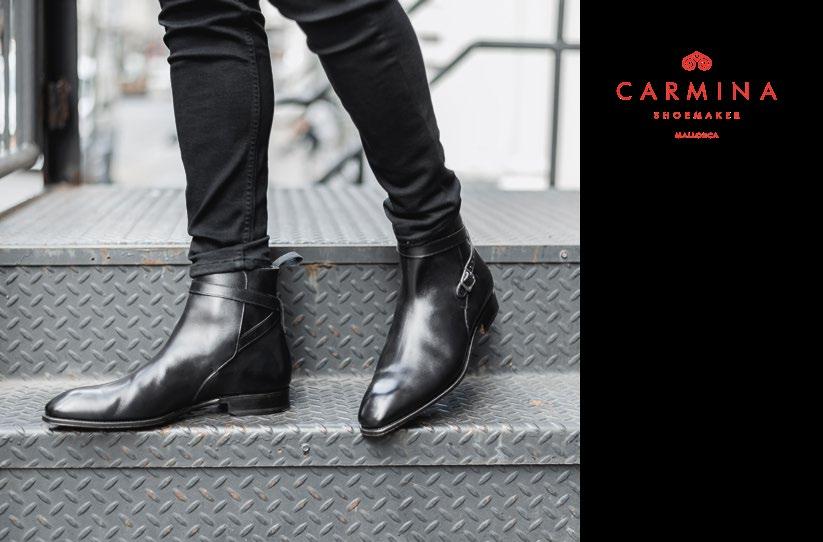

BAR MOTORBIKE ROJO Bar en forma de motocicleta vintage. Fabricado en acero y madera de mango. Tienda Luzeco Mallorca (frente a Brico Depôt). Tfl. 971 96 09 18 luzeco.com 2.839€

LOEWE
Manta en Mohair y lana de rayas. Mohair and striped wool blanket. 980 €

Reloj Carré H, 45mm. Carré H watch, 45mm. 5.900 €

COCOON
Chimenea de bioetanol de techo Cocoon Aeris negra. Cocoon Aeris black ceiling-mounted ethanol fireplace. 2.393 €

BOOMING BOB
Aceite barba Argán y vainilla – 30ml. Argan and vanilla beard oil - 30ml. Douglas.es 26.99 €

VOLAVA

Saco de boxeo. Boxing bag. Volava.com 699 €
Cargador solar en forma de árbol. Tree-shaped solar charger. Unicun.com 217 €

NATURSOY.
Piruletas Frutas 6x12,5g ECO Fruit Lollipops 6x12,5g ECO.

VERITAS Shopveritas.com 2'70 €
KENZO Deportivas niñ@s. Children's trainers. kenzo.com 230 €

FUTBOLÍN STYLE DE MADERA

Acabados en blanco, negro y cromo. Tienda Luzeco Mallorca (frente a Brico Depôt). Tfl. 971 96 09 18 luzeco.com 739 €


OFF-WHITE Mochila con logo confeccionada con un tejido técnico. Logo backpack made of technical fabric. Elcorteingles.com 120 €

ATLAS DE MAPAS CURIOSOS Miscelánea de mapas curiosos, de geoPlaneta. Miscellaneous curious maps, by geoPlaneta. Martin vargic 28,45 €
Menú ejecutivo de lunes a sábado Mittagsmenü von Montag bis Samstag

Más de 40 años avalan la excelente cocina y cordial servicio de Mesón Ca’n Pedro. Desde 1976, con unas inmejorables vistas, se pueden degustar increíbles platos propios de la gastronomía mallorquina, siempre elaborados con productos frescos de mercado.

Siéntete como en casa.
More than 40 years guarantee the excellent cuisine and cordial service of Mesón Ca’n Pedro. Since 1976, with unbeatable views, you can taste incredible dishes typical of Mallorcan cuisine, always made with fresh market products.
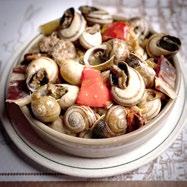



Feel like home

Más de 40 años avalan la excelente cocina y cordial servicio de Mesón Ca’n Pedro. Desde 1976, con unas inmejorables vistas, se pueden degustar increíbles platos propios de la gastronomía mallorquina, siempre elaborados con productos frescos de mercado.

Siéntete como en casa.
More than 40 years guarantee the excellent cuisine and cordial service of Mesón Ca’n Pedro. Since 1976, with unbeatable views, you can taste incredible dishes typical of Mallorcan cuisine, always made with fresh market products.

Feel like home
Carrer Rector Vives, 14 07015 Palma (Islas Baleares)
Teléfono: 971 70 21 62 reservas@mesoncanpedro.es canpedro.es
Ji, presidente de la Asociación China de Baleares (ACHINIB)⚫ “Mallorca tiene que empezar a trabajar desde ya con el turismo chino” ⚫ “La comunidad china tiene el ojo puesto en los sectores más estratégicos”
Fang Ji nos abre las puertas de su despacho en pleno centro de Palma y nos conduce hasta la sala más majestuosa, que cuenta con una imponente mesa de reuniones y un amplio ventanal. Nada hace sospechar de sus orígenes humildes.
El actual presidente de la Asociación China de las Islas Baleares (ACHINIB) llegó a Mallorca con 16 años, después de que sus padres solicitaran la reagrupación familiar. Su madre se marchó de casa cuando él tenía tres meses y dos años más tarde lo hizo su padre.
El de Ji no es un caso aislado. Fueron muchas las familias que en los noventa se vieron forzadas a emigrar para sacar a flote a sus descendientes. Holanda, Italia, Mallorca. Ese fue el periplo de los progenitores de Ji antes de asentarse en el barrio de Pere Garau, que acoge al 43% de la comunidad china.
La “barrera invisible”–así lo describe el también empresario– existente entre la población china y la local le alentó a crear en 2015 ACHINIB, con el objetivo de “informar a la comunidad china de sus derechos y deberes”. En aquel momento, “casi ningún chino leía periódicos de aquí”, recuerda. Hoy tratan de informarles con una publicación digital propia: “Mallorquines de origen chino”, disponible en WeChat.
Despertando del silencio
El patente aislamiento de los primeros chinos que se establecieron en la isla dejó algunas secuelas indeseables en esa comunidad: “Conozco el caso de un vecino que no salió de su barrio en 7 años”, describe Fang. “Otros muchos
hombres se refugiaron en el juego o en la bebida y eso impactó directamente en las familias”, relata.
Las segundas y terceras generaciones se comportan de otra manera. No necesariamente mejor. Para Ji, coexisten dos perfiles de jóvenes: los que han nacido aquí y “están demasiado españolizados” –refiriéndose a que han perdido el idioma y los valores del emprendimiento, del esfuerzo, de la valentía… – y los que vinieron muy jóvenes, que “tienden a relacionarse solo entre ellos y no muestran interés por los estudios”.
El futuro empresarial Aunque “cada vez más trabajan para vivir y no viven para trabajar” –matiza–, sigue habiendo atrevidos que abren un negocio “sin saber pronunciar una palabra y solo con una calculadora”. Muchos buscan bares “porque conllevan poco riesgo”, admite Fang. Pero “la comunidad china también tiene el ojo puesto en sectores más estratégicos. Hace unos 5 años que se creó la primera inmobiliaria china, la primera agencia de viajes, el primer bufete de abogados y hasta la primera empresa de construcción de los chinos”, explica. “En el futuro más inmediato –aunque ya existe–, veremos a médicos chinos trabajando en Son Llàtzer o Son Espases, incluso a políticos de origen chino en las instituciones –en Son Servera ya hay uno–”, concluye.
La relación de China con España Fang la describe como “provechosa”, si bien reconoce que Baleares no ha podido beneficiarse igual por la falta de industria y su situación geográfica. Tampoco han sido las islas lo suficientemente atractivas fiscalmente para despertar el interés de grandes empresas: “prefieren
aterrizar en países que tengan ventajas fiscales o de habla inglesa”, apunta Ji.
Hacia la inclusión cultural
Una de las claves para avanzar hacia la inclusión plena es “ofrecer un recibimiento cálido por parte de la sociedad” y, para eso, “hace falta que las instituciones trabajen con menos interés político”, denuncia.
A pie de calle existen “casos aislados de racismo”, pero también son frecuentes las expresiones de hospitalidad. “Hay un mallorquín de unos 70 años que cada tarde acude a un bar de la calle Nuredduna y se sienta con el hijo del propietario, de origen chino, a ayudarle a hacer los deberes o a jugar”, narra orgulloso. Para el empresario, somos muy diferentes y al mismo tiempo muy parecidos: “La mayoría de chinos venimos de regiones pequeñas, somos muy respetuosos con la gente mayor y nos mostramos desconfiados cuando no conocemos”.
El potencial del turismo chino De los 1.400 millones de habitantes que tiene China, “solo el 10% posee pasaporte, lo que indica que el 90% de los chinos todavía no ha viajado fuera del país”, reflexiona Ji. Pese a ello, China es el principal emisor de turistas, lo que da cuenta de su potencial. En Mallorca, “tenemos que empezar a trabajar desde ya con el turismo chino. Es necesario determinar cuáles son los sectores estratégicos –como el turismo de incentivos, sanitario, cultural o de lujo–. Nuestro territorio y sus recursos son limitados por lo que nos hace falta turismo de calidad si no queremos morir de éxito”, sentencia.
Desde 2016, ACHINIB celebra el Año Nuevo Chino con actividades, bailes y carpas de artesanía y gastronomía en la plaza de Pere Garau. Una festividad con la que se pretende favorecer el intercambio cultural y a la que se han ido sumando comercios y vecinos.
La edición de 2023 incorporará algunas novedades. Se celebrará previsiblemente en la calle Nuredduna, durará más de un día e involucrará a todos los comercios del barrio. Una puerta gigante a la entrada de la calle dará la bienvenida a los visitantes.
“La llamaremos la ‘entrada de la multiculturalidad’ porque creemos que cuando se atraviesa se puede llegar a cualquier rincón del mundo”, adelanta Ji.
Fang Ji, president of the Chinese Association of the Balearic Islands "In the future we will see doctors and politicians of Chinese origin in our hospitals and institutions"
Fang Ji opens the doors of his office in the heart of Palma and leads us to the most majestic room, which has an impressive meeting table and a large window. There is nothing to suggest his humble origins.
The current president of the Chinese Association of the Balearic Islands (ACHINIB) arrived in Mallorca at the age of 16, after his parents applied for family reunification. His mother left home when he was three months old and two years later his father did the same.

Ji's is not an isolated case. Many families in the 1990s were forced to emigrate in order to provide for their descendants. Holland, Italy, Mallorca. This was the journey of Ji's parents before settling in the Pere Garau neighbourhood, which is home to 43% of the Chinese community.
The "invisible barrier" - as the businessman describes it - between the Chinese and the local population encouraged him to create ACHINIB in 2015, with the aim of "informing the Chinese community of their rights and duties". At that time, "hardly any Chinese read newspapers here", he recalls. Today they try to inform them with their own digital publication: "Mallorcans of Chinese origin", available on WeChat.
The blatant isolation of the first Chinese who settled on the island left some undesirable consequences in this community: "I know of one neighbour who didn't leave his neighbourhood for seven years", Fang describes, "Many other men took refuge in gambling or drinking, and that had a direct impact on the families", he says.
Second and third generations behave differently. Not necessarily better. For Ji, two profiles of young people coexist: those who were born here and "are too Spanishised" - meaning that they have lost the language and the values of en-
Los chinos establecidos en la isla cada vez más trabajan para vivir y no viven para trabajar"Fang Ji durante la entrevista en su despacho del centro de Palma. Foto: V.S.
trepreneurship, effort, courage... - and those who came here very young, who "tend to relate only to each other and show no interest in studies".
Although "more and more people work for a living and do not live to work", he says, there are still daring people who open a business "without knowing how to pronounce a word and only with a calculator". Many seek out bars "because they carry little risk", Fang admits. But "the Chinese community also has its eye on more strategic sectors.
About five years ago, the first Chinese real estate company, the first travel agency, the first law firm and even the first Chinese construction company were set up," he explains. "In the immediate future - although it already exists - we will see Chinese doctors
working in Son Llàtzer or Son Espases, even politicians of Chinese origin in the institutions - in Son Servera there is already one-," he concludes.
Fang describes China's relationship with Spain as "profitable", although he acknowledges that the Balearic Islands have not been able to benefit in the same way due to their lack of industry and their geographical location. Nor have the islands been fiscally attractive enough to arouse the interest of large companies: "they prefer to land in countries with tax advantages or English-speaking countries," Ji points out.
One of the keys to progress towards full inclusion is to "offer a warm welcome from society" and, for this, "the institutions need to work with less political interest", he denounces.

Since 2016, ACHINIB has been celebrating the Chinese New Year with activities, dances and craft and gastronomy stands in the Plaça de Pere Garau. The aim of the festival is to promote cultural exchange, and businesses and local residents have been joining in.

The 2023 edition will incorporate some new features. It is expected to be held on Carrer Nuredduna, will last more than one day and will involve all the neighbourhood's businesses. A giant door at the entrance of the street will welcome visitors. "We will call it the 'multicultural gateway' because we believe that when you walk through it you can reach any corner of the world," says Ji.
On the street there are "isolated cases of racism", but expressions of hospitality are also frequent. "There is a Mallorcan man in his 70s who goes to a bar in Nuredduna Street every afternoon and sits down with the owner's son, who is of Chinese origin, to help him do his homework or play", he says proudly. For the businessman, we are very different and at the same time very similar: "Most Chinese come from small regions, we are very respectful of older people and distrustful when we don't know them".
Of China's 1.4 billion people, "only 10% have a passport, which means that 90% of Chinese people have not yet travelled outside the country," Ji reflects. Despite this, China is the main source of tourists, which shows its potential. In Mallorca, "we have to start working with Chinese tourism now. It is necessary to determine which are the strategic sectors - such as incentive, health, cultural or luxury tourism. Our territory and its resources are limited, so we need quality tourism if we don't want to die of success," he says.
“Vivimos en una sociedad con la piel muy fina. Si estás muy delgada, se critica; si estás gorda, se critica”
- De hecho, ha sido elegida mallorquina del verano 2022…
Actriz, presentadora, modelo, cantante… Carolina Cerezuela reconoce que “la televisión atrapa”. Con 16 años trabajaba de modelo para lograr su independencia económica y estudiar Relaciones Laborales, pero la interpretación era lo que realmente le fascinaba. Estando de prácticas en un despacho de abogados, una señora le preguntó: “¿Tú no eres la chica que sale en la serie de La 1?”. Entonces se dio cuenta de que tenía que elegir y apostó, con fortuna, por su carrera artística.
- ¿Cómo llega a Mallorca?
- Vivía en Madrid con mi marido, Carlos Moyá. Cuando tuvimos los niños, decidimos tomarnos unos meses de relax aquí para dedicarnos a ellos y descansar. Ese era el proyecto, pero ya llevo 8 años.
- ¿Y cómo surge ese proyecto musical con Jaime Anglada?
- Fue algo casual y me pilló en un momento en el que no tenía la adrenalina de la tele. Siempre me había apasionado la música, así que dije: por qué no. Hemos hecho más de 200 conciertos y ahora preparamos un tercer disco.
- ¿Qué le espera próximamente en televisión?
- Realmente no lo sé. Es una suerte que te ofrezcan propuestas, pero vivir en una isla tiene sus limitaciones. Algunos proyectos, por mucho que me apetezcan, no los puedo coger. Ahora hago “Aquí la tierra” en RTVE, pero puedo elegir qué días grabo. Mallorca tiene una gastronomía brutal, artesanía y productos con denominación de origen que hay que potenciar y dar a conocer, por eso estoy encantada de ser embajadora de Mallorca para Televisión Española.
- Luego se enfadan conmigo en Alicante -risas-. Pero es verdad que una cosa es dónde naces y otra dónde echas raíces. Y los hijos te hacen echar el ancla. Lo de mallorquina del verano, que me hizo mucha ilusión, vino porque siempre intento promocionar Mallorca; como Carlos, a quien le viene de forma natural. Mi marido es mallorquín y dos de mis tres hijos son mallorquines. Yo estoy muy agradecida a esta isla y creo que el premio vino a reconocer eso.
- Defíname Mallorca. ¿Cree que hay saturación turística? ¿Es algo que perciba?
- Lo sufro sobre todo en los aeropuertos. Me empiezo a sentir mallorquina cuando llega julio y digo: no quiero ir a la playa hasta septiembre. Pero es indiscutible que Mallorca vive del turismo y por eso tenemos que fomentar su crecimiento y darla a conocer fuera. Cuando me acerco a hablar con propietarios de restaurantes, ahora con la problemática de la ley de costas, me da mucha pena que gente que ha vivido toda la vida de su negocio tenga que cerrar.
- Precisamente ha salido en defensa del restaurante El Bungalow.
- Esos sitios tan bonitos y exóticos son los que los españoles buscamos cuando salimos de España. Hay un turismo que se está yendo porque no se puede acercar a las costas, a los restaurantes o a las playas y creo que es una pena para Mallorca. Estoy en contra de la masificación pero a favor de dejar que haya un turismo de calidad.
- Es difícil llegar al punto de que tengas éxito en el turismo y que no sea una molestia…
- ¡Mira los taxis, ha sido una barbaridad! Evidentemente, tiene muchos inconvenientes para los que vivimos aquí, pero creo que más inconvenientes tiene el que se ve obligado a cerrar su negocio.
- ¿Es activa en la lucha contra el cambio climático?
- Es algo en lo que hay que trabajar sí o sí y una de las cosas que se hace ahora con los niños en los colegios y que me encanta es la concienciación sobre no tirar plásticos, no generar basura, reciclar, reutilizar. Para ver resultados creo que aún nos falta y tampoco podemos olvidar el cuidado del mar.
- Cómo ve desde su perspectiva el movimiento #metoo. ¿Cree que podría darse en España en algún momento?
- Siempre vamos un poco a remolque. Nadie en su sano juicio está a favor del abuso sexual y hay que defender de forma innegociable a las mujeres que se han sentido acosadas, pero me parece que cada caso es particular. Por suerte en educación hemos crecido muchísimo y juzgar algo quince años después es sacarlo de su época. Estaba mal antes y está mal ahora, pero la conciencia social en esos años no era la misma.
- Estar expuesta al público parece que lleva implícito cuidarse al máximo. ¿Cómo consigue mantener la imagen?
- Creo que vivimos en una sociedad con la piel muy fina. Si estás muy delgada, se critica; si estás gorda, se critica. Yo cojo las revistas en verano y veo una chica que le dicen ¡hala, tiene unos kilos de más! Pero es que esa chica no es modelo, es actriz o cantante. ¿Por qué tiene que estar encorsetada en una talla x? Hay demasiado foco en la estética y que se gaste tiempo en eso me parece un problema.

Hay que defender de forma innegociable a las mujeres que se han sentido acosadas"
"Women who have felt harassed must be defended in a nonnegotiable way"
A mí me encanta la alimentación, el deporte, conocer cómo funciona el cuerpo y cómo utilizamos lo que comemos.
- ¿Es difícil compaginar la vida profesional con su rol como madre?
- Todo es una escala de prioridades. Cuando estaba en Madrid tenía clarísimo el modelo familiar que quería y previsualizaba el tipo de madre que quería ser: una madre presente. Me gusta mucho educar en las emociones. Nos preocupamos del “abrígate, que te vas a resfriar”, pero creo que tenemos que preocuparnos más de educar en el desarrollo y la seguridad emocional. Eso lo consigo renunciando a trabajos que no son compatibles y pasando mucho sueño porque les dejo en el cole, voy al aeropuerto, grabo en Madrid, llego en el último avión...
- ¿Queda tiempo para la pareja?
- Siempre buscamos esas escapadas los dos solos. Más que cantidad, hay calidad. Y aprender a echar de menos te enseña muchas cosas. Hay gente que no sabe si echa de menos a su pareja o no. Llevamos 15 años y cuando Carlos se va y llega la noche sientes tristeza, pero qué bonito es saber que echas de menos a alguien así y esperar el mensaje de buenas noches.
- ¿Cómo les trata la calle? ¿Dentro de su cotidianeidad tienen en cuenta que son famosos y, por tanto, el centro de las miradas?
- Nunca hemos dejado de hacer algo pensando que nos van a molestar. Hacemos una vida completamente normal. En Palma vivimos super tranquilos y la gente es muy cariñosa porque a Carlos le quieren mucho.
Interview with Carolina Cerezuela "There is too much focus on aesthetics"
Actress, presenter, model, singer... Carolina Cerezuela recognises that "television catches you". At the age of 16 she worked as a model to achieve her economic independence and study Labour Relations, but acting was what really fascinated her. While on an internship in a law firm, a woman asked
La actriz, presentadora y cantante, acostumbrada a recibir la atención de los flashes.
her: "Aren't you the girl who appears in the series on La 1? Then she realised that she had to make a choice and decided, with good fortune, on her artistic career.
- How did you end up in Mallorca?
- I lived in Madrid with my husband, Carlos Moyá. When we had children, we decided to take a few months off here to relax and devote ourselves to them and to rest. That was the project, but I have been here for 8 years now.

- And how did this musical project with Jaime Anglada come about?
- It was something casual and it caught me at a time when I didn't have the
adrenaline of TV. I had always been passionate about music, so I said: why not. We have done more than 200 concerts and we are preparing a 3 album.
- What's next for you on TV?
- I really don't know. It's lucky to be offered proposals, but living on an island has its limitations. Some projects, even if I feel like it, I can't take them. Now I do "Aquí la tierra" on RTVE, but I can choose which days I shoot. Mallorca has an amazing gastronomy, crafts and products with designation of origin that need to be promoted and made known, so I am delighted to be an ambassador of Mallorca for Televisión Española.
Qué bonito es saber que echas de menos a alguien y esperar sus buenas noches”
"How nice it is to know that you miss someone and wait for the goodnight message"
- In fact, you have been chosen as the Mallorcan of the summer 2022...
- Then they get angry with me in Alicante -laughs-. But it is true that one thing is where you are born and another where you put down roots. And children make you drop anchor. The Mallorcan of the summer, which made me very happy, came because I always try to promote Mallorca; like Carlos, to whom it comes naturally. My husband is Mallorcan and two of my three children are Mallorcan. I am very grateful to this island and I think that the award came to recognise that.
- Define Mallorca for us, do you think there is tourist saturation, and is it something you notice?
- I suffer from it especially at the airports. I start to feel Mallorcan when July arrives and I say: I don't want to go to the beach until September. But it is indisputable that Mallorca lives off tourism and that is why we have to encourage its growth and make it known abroad. When I go to talk to restaurant owners, now with the problems of the coastal law, it makes me very sad that people who have lived their whole lives from their business have to close down.
- You have just come to the defence of the restaurant El Bungalow.
- These beautiful and exotic places are what Spaniards look for when we travel outside Spain. There is tourism that is leaving because it can't get near the coast, the restaurants or the beaches and I think it's a shame for Mallorca. I am against overcrowding but in favour of allowing quality tourism.
- It's difficult to get to the point where you can be successful in tourism and it's not a nuisance....
- Look at the taxis, it has been crazy! Obviously, it has a lot of disadvantages for those of us who live here, but I think it has more disadvantages for those who are forced to close their business.
- Are you active in the fight against climate change?
- It is something that we have to work on and one of the things they are doing now with children in schools, which I love, is raising awareness about not throwing plastics away, not generating waste,
recycling and reusing. I think we still have a long way to go before we see results and we can't forget about caring for the sea.
- How do you see the #metoo movement from your perspective. Do you think it could happen in Spain at some point?

- We are always a bit behind. No one in their right mind is in favour of sexual abuse. Women who have felt harassed must be defended in a non-negotiable way, but it seems to me that each case is individual.
- Being exposed to the public seems to imply taking the utmost care of yourself. How do you manage to maintain your image?
- I think we live in a very thin-skinned society. If you're too skinny, you're criticised; if you're too overweight, you're criticised. I pick up magazines in the summer and I see a girl who they say, wow, she's got a few extra kilos! But she's not a model, she's an actress or a singer. Why does she have to be corseted in a certain size? There is too much focus on aesthetics and spending time on that seems to me to be a problem. I love food, sport, knowing how the body works and how we use what we eat.
- Is it difficult to combine your career with your role as a mother?
- Everything is a scale of priorities. When I was in Madrid I was very sure
about the family model I wanted and I envisaged the type of mother I wanted to be: a mother who is present. I really like to educate in emotions. We worry about "wrap up warm, you're going to catch a cold", but I think we need to worry more about educating in emotional development and security. I achieve this by giving up jobs that are not compatible and having a lot of sleep because I drop them off at school, go to the airport, film in Madrid, arrive on the last flight...
- Is there any time left for the couple?
- We always look for those getaways just the two of us. More than quantity, there is quality. And learning to miss teaches you a lot of things. Some people don't know if they miss their partner or not. We've been together for 15 years and when Carlos leaves and the night comes you feel sad, but how nice it is to know that you miss someone like that and wait for the goodnight message.
- How does the public treat you, do you take into account in your daily life that you are famous and therefore the centre of attention?
- We have never stopped doing anything thinking that we are going to be disturbed. We lead a completely normal life. In Palma we live very quietly and the people are very affectionate because they love Carlos very much.
Un trabajador descargando de un camión cajas reutilizables Logifruit, que optimizan la logística inversa.

compra y consumo de energía eléctrica de su red de tiendas, red logística y oficinas.
Mercadona continúa con su compromiso firme de seguir cuidando el planeta. Consciente del cambio climático, está elaborando un plan para reducir sus emisiones en línea con el acuerdo de París, que persigue alcanzar la neutralidad climática en 2050. De hecho, desde 2015 calcula su huella de carbono y ha conseguido desde entonces reducirla en un 38%.
En el caso de Illes Balears, la compañía consiguió disminuir en 2021 su huella de carbono en más de 1.000 toneladas de CO2 respecto al año anterior, en concreto un 8% menos en apenas un año. Con ello, Mercadona ha mejorado su impacto ambiental en la comunidad, logrando minimizar tanto las emisiones directas de gases de efecto invernadero en los supermercados y en la red logística como en las emisiones indirectas derivadas de la
Uno de los máximos exponentes en la optimización del consumo de energía es la tienda ecoeficiente, que empezó a implantar en 2016 de manera progresiva en sus supermercados y ya está disponible en 34 de los 49 que tiene en Baleares.
Las denominadas Tiendas 8 implican una reducción del 40% del consumo energético respecto a una tienda convencional y disponen, entre otros avances, de sistemas de refrigeración más sostenibles, que reducen las emisiones, iluminación LED y gestión inteligente del consumo.
Asimismo, la compañía continúa instalando puntos de recarga para vehículos eléctricos en sus tiendas y ya cuenta con más de 50 en Baleares. Además, lleva años introduciendo energías renovables, como
pone de manifiesto la incorporación de paneles solares en cuatro de sus supermercados en las Islas y la perspectiva de aumentar la presencia de los mismos en sus cubiertas.
La economía circular es otra apuesta para Mercadona en su compromiso con la sostenibilidad. En este sentido, la compañía sigue promoviendo su Estrategia 6.25, que busca conseguir hasta 2025 el triple objetivo de reducir un 25% de plástico, lograr que todos los envases sean reciclables y reciclar todo el residuo de plástico, con una inversión de 140 millones de euros.
El proyecto ya ha supuesto la eliminación de las bolsas de plástico de un solo uso en las secciones y de los productos desechables de plástico de un solo uso. En la actualidad, está centrado en que los envases sean reciclables y seguir reduciendo
el plástico de los envases de marca propia en colaboración con sus proveedores.
La correcta gestión de residuos es igualmente una prioridad para Mercadona, lo que implica una importante labor de prevención además de la introducción de medidas que fomenten la reutilización, reparación y reciclaje de los materiales.
La compañía lleva años trabajando en ella y un buen ejemplo es el pool de envases reutilizables Logifruit que ha incorporado en su modelo logístico, con elementos como cajas, palés y palots, que en sus más de cinco años de vida útil realizan múltiples rotaciones, optimizan la logística inversa y evitan el uso de miles de toneladas de materiales de un solo uso.
Otro ejemplo es la separación de los residuos que genera (en torno al 80%), lo que le permite dar una segunda vida y optimizar responsablemente los recursos naturales.
Mercadona reinforces its commitment to sustainability
Mercadona continues with its solid commitment to continue caring for the planet. Aware of climate change, it is drawing up a plan to reduce its emissions in line with the Paris agreement, which aims to achieve climate neutrality by 2050. In fact, since 2015 it has been calculating its carbon footprint and has managed to reduce it by 38%.
In the case of the Balearic Islands, Mercadona managed to reduce its carbon footprint in 2021 by more than 1,000 tonnes of CO2 compared to the previous year, specifically by 8% in just one year. In doing so, Mercadona has improved its environmental impact in the region, managing to minimise both direct greenhouse gas emissions in its supermarkets and logistics network and indirect emissions derived from the purchase and consumption of electricity in its network of supermarkets, logistics network and offices.
One of the greatest exponents in the optimisation of energy consumption is the eco-efficient shop, which began to be implemented progressively in 2016 in its supermarkets and is already available in 34 of the 49 it has in the Balearic Islands.
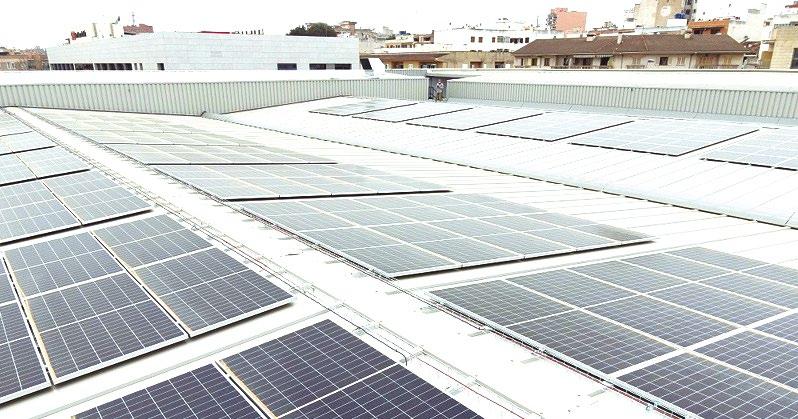
The so-called 'Tiendas 8' involve a 40% reduction in energy consumption compared to a conventional shop and have,

among other advances, more sustainable refrigeration systems, which reduce emissions, LED lighting and intelligent consumption management.
The company also continues to install charging points for electric vehicles in its shops and already has more than 50 in the Balearic Islands. It has also been introducing renewable energies for years, as evidenced by the incorporation of solar panels in four of its supermarkets in the Islands and the prospect of increasing their presence on their roofs.

The circular economy is another of Mercadona's commitments to sustainability. In this regard, the company continues to promote its 6.25 Strategy, which aims to achieve the triple objective of reducing plastic by 25% by 2025, making all packaging recyclable and recycling all plastic waste, with an investment of 140 million euros.
The project has already led to the elimi-
nation of single-use plastic bags in sections and single-use plastic disposables. It is now focusing on making packaging recyclable and further reducing plastic in own-brand packaging in collaboration with its suppliers.
Correct waste management is also a priority for Mercadona, which involves important prevention work as well as the introduction of measures to encourage the reuse, repair and recycling of materials.
The company has been working on this for years and a good example is the Logifruit reusable packaging pool that it has incorporated into its logistics model, with elements such as boxes, pallets and palot containers, which in their more than five years of lifespan carry out multiple rotations, optimise reverse logistics and avoid the use of thousands of tonnes of single-use materials. Another example is the separation of the waste it generates (around 80%), which allows it to give a second life and responsibly optimise natural resources.
“vamos a una tendencia de cocinado simple”, defiende Calonge: “Cada vez se cocina menos y se cocina más de cuarta y quinta gama (abrir, calentar y listo)”, añade. Eso explicaría el éxito del delivery en los últimos tiempos, incluso para los desayunos, la ingesta que menos preparación requiere: su demanda ha aumentado un 464 %.
Ingenio ante el aumento de precios Ante el incremento desbocado de los precios, “ahora más que nunca debemos agudizar nuestro talento y seguir buscando productos de temporada de naturaleza humilde que nos permitan llevarlos a la alta cocina enriqueciendo su valor”, afirma Adrián Quetglas. Para el docente Calonge, toca reformular la lista de la compra: “Si antes comprábamos pechuga de pollo, ahora tendremos que comprar más lomo de cerdo”. Aunque “las modas han conseguido cosas impensables, como que un solomillo de cerdo esté más barato que las costillas porque se utilizan para cocinar ribs”.
Versión refinada del clásico borsch ruso. Foto: Adrián Quetglas.
 V. S. Palma
V. S. Palma
Hay consenso. Cada vez somos más veggies. Ya sea por cuestiones de salud o ética medioambiental, existe una tendencia creciente a ir sustituyendo la proteína animal por vegetales. Si en 2019, un 0,8% de la población seguía una dieta vegana; en 2021 el porcentaje se duplicó, según datos de Statista.
En la cocina se siguen los mismos pasos: “Estamos inclinándonos a la utilización de productos de origen vegetal: el mundo vegetal está cogiendo más protagonismo y esto cada vez será más notable”, advierte Adrián Quetglas, chef con estrella Michelin. El cocinero apela al recetario clásico antiguo de la gastronomía mallorquina, donde “el pescado y la carne no son los elementos centrales de los platos, sino que están basados en verduras, hierbas… y la parte animal se compone de casquería. El frito mallorquín o las sopas mallorquinas son un claro ejemplo que desde antaño las
verduras forman parte imprescindible de la creación de recetas”, sentencia.
Jose Maria Calonge, jefe del departamento de cocina de la Escola d’Hoteleria de les Illes Baleares, también percibe este cambio en los gustos: “Cada vez hay más vegetarianos y veganos. En los últimos años, mucha gente joven ha dejado de comer alimentos de origen animal, en parte, por el aumento de las alergias”. Este fenómeno se ve reflejado, a su vez, en la cocina a domicilio. Según un informe reciente de Just Eat (Gastrómetro 2021), los pedidos de comida vegetariana y vegana han experimentado un aumento del 50% y 80% respectivamente.
La hamburguesa vegetariana y la crema de verduras son los platos estrella.
La sencillez y comodidad, una máxima Si en la alta cocina, “las técnicas culinarias estarán enfocadas a volver a la simpleza y que la técnica permita gozar más de la naturalidad del producto ofrecido” –expone Quetglas–, en los hogares
veggie
There is a consensus. We are becoming more and more veggie. Whether for reasons of health or environmental ethics, there is a growing tendency to replace animal protein with vegetables. If in 2019, 0.8% of the population followed a vegan diet; in 2021 the percentage doubled, according to Statista data.
The same steps are being followed in the kitchen: "We are leaning towards the use of products of vegetable origin: the vegetable world is taking more prominence and this will be increasingly noticeable," warns Adrián Quetglas, Michelin-starred chef. The chef appeals to the old classic recipe book of Mallorcan gastronomy, where "fish and meat are not the central elements of the dishes, but are based on vegetables, herbs... and the animal part is made up of offal. The Mallorcan frit mallorquí or Mallorcan soups are a clear example of the fact that vegetables have been an essential part of the creation of recipes since ancient times", he states.
Jose Maria Calonge, head of the cook-
ery department at the Balearic Islands Hospitality School, also perceives this change in tastes: "There are more and more vegetarians and vegans. In recent years, many young people have stopped eating animal-based foods, partly because of the increase in allergies". This phenomenon is, in turn, reflected in home cooking. According to a recent report by Just Eat (Gastrómetro 2021), vegetarian and vegan food orders have increased by 50% and 80% respectively. The veggie burger and veggie spread are the star dishes.
Simplicity and convenience, a maxim If in haute cuisine, "culinary techniques will be focused on returning to simplicity and that the technique allows us to enjoy more of the naturalness of the product on offer", says Quetglas, in homes "we are moving towards a trend towards simple cooking", defends Calonge: "There is less and less cooking and more fourth and fifth range cooking (open, heat and ready)", he adds. This would explain the success of delivery in recent times, even for breakfasts, the

meal that requires the least preparation: its demand has increased by 464%.
Faced with soaring prices, "now more than ever we have to sharpen our talents and continue to look for seasonal products of a humble nature that allow us to bring them to haute cuisine, enriching
their value", says Adrián Quetglas. For the teacher Calonge, it is time to reformulate the shopping list: "If we used to buy chicken breast, now we will have to buy more pork loin". Although "fashions have achieved unthinkable things, such as pork tenderloin being cheaper than ribs because they are used to cook ribs".
Si en el conjunto de España, la cocina americana triunfa, en el archipiélago balear, la italiana se erige como la primera opción y la pizza barbacoa se lleva la medalla de oro. De las elaboraciones locales, el alioli es lo más demandado. No obstante, el Gastrómetro 2021 de Just Eat identifica a la francesa como la nueva cocina al alza y los niguiris de salmón como el plato en auge.
If in Spain as a whole, American cuisine triumphs, in the Balearic archipelago, Italian is the first choice and barbecue pizza takes the gold medal. Of the local dishes, alioli is the most popular. However, Just Eat's Gastrómetro 2021 identifies French cuisine as the new up-and-coming cuisine and salmon niguiris as the dish on the rise.
Catedrático emérito y director del Laboratorio de Biología Molecular, Nutrición y Biotecnología de la Universidad de las Islas Baleares Emeritus Professor and Director of the Laboratory of Molecular Biology, Nutrition and Biotechnology at the University of the Balearic Islands.
Queremos alimentos saludables, sostenibles, tradicionales, frescos, próximos, y naturales en la medida de lo posible. En las últimas dos décadas, la Unión Europea (UE) ha liderado el cambio a una alimentación para la salud y hoy los alimentos europeos son el referente de calidad “saludable” en todo el planeta. Pero ahora toca ir más allá, poniendo el eje en lo “sostenible”: la comida europea debe convertirse en el estándar global que lidere la sostenibilidad en nuestro planeta.
En 2002 la legislación europea concretó una política alimentaria común, priorizando la salud y el funcionamiento del mercado único, armonizando los conceptos, principios, procedimientos y requisitos generales de la legislación alimentaria, y creando la Autoridad Europea en Seguridad Alimentaria (EFSA, por sus siglas en inglés European Food safety Authority), lo que situó la evaluación científica de los problemas, como base previa, independiente y transparente en la que debe descansar la toma de decisiones políticas (reglamentos, directivas, límites de residuos y contaminantes, aditivos, publicidad-salud, nuevos alimentos, etc.).
Entre los exponentes de este gran cambio destacamos la legislación de 2011 sobre etiquetado, que a partir de diciembre de 2016 ordenó la información nutricional obligatoria (valor energético, grasas, ácidos grasos saturados, hidratos de carbono, azúcares, proteínas y sal) expresada por 100 gramos (100 mililitros en líquidos) que facilita al
consumidor poder comparar y elegir las opciones más saludables.
Ahora, muchos se apresuran a simplificar y dejar en segundo plano (en el dorso del envase) esta información nutricional, mínima pero precisa y esencial, para destacar más en la parte frontal de los envases símbolos, letras, códigos de colores u otros formatos gráficos, pensados para que el consumidor pueda acceder a la información de un vistazo.
Entre los formatos variados que ya se utilizan dependiendo del país sobresale NUTRISCORE, un logotipo de 5 colores asociados a 5 letras que señalan 5 calidades nutricionales: desde el verde oscuro (y letra A) para la mejor, hasta el rojo (letra E) para la peor. Se basa en un sistema de puntos que se atribuyen en función de ciertos componentes, unos dan puntuación positiva (proteínas, fibra y porcentaje de frutas, verduras, y otros en discusión) frente a otros que puntúan negativamente (kilocalorías, grasas saturadas, azúcares simples y sal).
Es cierto que puede favorecer que la industria haga ciertas reformulaciones saludables, pero tiene el problema de ser poco transparente para el consumidor, y quedan exentos, y así descolocados, los productos frescos (frutas, verduras, legumbres, carne, pescado). No sirve para comparar alimentos de diferentes categorías y, sobretodo, no incentiva al consumidor a hacer una evaluación nutricional adecuada. Un buen etiquetado ‘saludable’ debería dejar claro que los productos frescos excluidos u otros de calidad contrastada, como los tradicionales protegidos por su origen o indicación
geográfica, están por encima de la simplificación propuesta, merced a una calidad que no admite fáciles reformulaciones.
En suma, el etiquetado frontal tipo NUTRISCORE puede ser útil para comparar alimentos dentro de una categoría, sobre todo entre los ultraprocesados, cuya vinculación con la salud pueda ser controvertida o entre distintas marcas de un producto; pero no le pongamos color rojo al aceite de oliva virgen, representativo de la dieta mediterránea, cargado de ácidos grasos insaturados y polifenoles beneficiosos.
El mensaje ‘saludable’ no debe potenciar los alimentos ultraprocesados frente a los frescos y próximos, o los tradicionales que merecen especial consideración. Nos alegramos de que, de momento, la CE haya retrasado a 2023 la propuesta francesa (apoyada por otros países como Alemania y España) que se decía inminente. Hay demasiado apresuramiento y no parece razonable adoptar un NUTRISCORE con bastantes connotaciones negativas que conviene pulir.
Por ende, en la parte frontal de los envases no cabe todo y la progresiva recurrencia de sequías, temperaturas extremas, inundaciones, incendios y plagas nos recuerda que nuestro sistema alimentario está muy amenazado. En la etiqueta debe quedar espacio para reivindicar lo “sostenible”. El Pacto Verde (Green Deal) quiere hacer de Europa el primer continente climáticamente neutro en los próximos 25 años, e incluye la estrategia 'De la Granja a la Mesa' (From Farm to Fork, F2F) como pieza clave, atendiendo a la responsabilidad de los sistemas alimentarios en el cambio climático. Es una estrategia de fondo, introduciendo la ‘sostenibilidad’ como materia de enseñanza en las escuelas, como parte del calendario
legislativo que le da solidez (plaguicidas, etiquetado, declaraciones de salud, fraude, despilfarro alimentario, bienestar animal, vínculos con la política agraria comun, etc.) y dará un gran impulso a la agricultura y alimentación ecológica.
En 2024 está previsto que la CE ya proponga una etiqueta ‘SOSTENIBLE’ en los alimentos, abriendo tantas esperanzas como oportunidades. Hoy las personas buscamos valor en los alimentos, atendiendo a cuestiones placenteras, de salud, ambientales, sociales y éticas y, paradójicamente, cuanto más urbanitas somos, más apreciamos la tradición y la cercanía de nuestra comida.

We want healthy, sustainable, traditional, fresh, local and natural food as much as possible. In the last two decades, the European Union (EU) has led the change towards healthy food and today European food is the benchmark for "healthy" quality all over the world. But now it is time to go further, focusing on "sustainability": European food must become the global standard for leading sustainability on our planet.
In 2002, European legislation established a common food policy, prioritising health and the functioning of the single market, harmonising the concepts, principles, procedures and general requirements of food legislation, and creating the European Food Safety Authority (EFSA), which
placed the scientific assessment of problems as a prior, independent and transparent basis for political decision-making (regulations, directives, residue and contaminant limits, additives, health advertising, novel foods, etc.).
Among the exponents of this major change we highlight the 2011 legislation on labelling, which as of December 2016 ordered mandatory nutritional information (energy value, fats, saturated fatty acids, carbohydrates, sugars, proteins and salt) expressed per 100 grams (100 millilitres in liquids) that makes it easier for consumers to compare and choose the healthiest options.
Now, many are rushing to simplify and leave this minimal but accurate and essential nutritional information in the background (on the back of the pack) in favour of more prominent symbols, letters, colour coding or other graphic formats on the front of packs, designed to give consumers access to information at a glance.
Among the various formats already in use depending on the country, NUTRISCORE stands out,
a logo of 5 colours associated with 5 letters signalling 5 nutritional qualities: from dark green (and letter A) for the best, to red (letter E) for the worst. It is based on a points system that is attributed according to certain components, some of which score positively (proteins, fibre and percentage of fruit, vegetables, and others under discussion) while others score negatively (kilocalories, saturated fats, simple sugars and salt).
It is true that it can encourage the industry to make certain healthy reformulations, but it has the problem of not being very transparent for the consumer, and fresh products (fruit, vegetables, legumes, meat, fish) are exempted and thus left out of the picture. It does not serve to compare foods of different categories and, above all, it does not encourage the consumer to make a proper nutritional assessment. Good 'healthy' labelling should make it clear that the excluded fresh products or others of proven quality, such as traditional products protected by origin or geographical indication, are above the proposed simplifica-
tion, thanks to a quality that does not allow for easy reformulations.
In short, NUTRISCORE-type front-of-pack labelling can be useful for comparing foods within a category, especially among ultra-processed foods, whose link to health may be controversial, or between different brands of a product; but let us not give red colour to virgin olive oil, representative of the Mediterranean diet, loaded with unsaturated fatty acids and beneficial polyphenols.
The 'healthy' message should not promote ultra-processed foods over fresh and local foods, or traditional foods that deserve special consideration. We are glad that, for the time being, the EC has delayed to 2023 the French proposal (supported by other countries such as Germany and Spain) which was said to be imminent. There is too much rush and it does not seem reasonable to adopt a NUTRISCORE with a number of negative connotations that need to be polished up.

Therefore, not everything fits on the front of packaging and the increasing recurrence of droughts,
extreme temperatures, floods, fires and pests reminds us that our food system is under great threat. There must be room on the label to claim "sustainable". The Green Deal aims to make Europe the first climate-neutral continent in the next 25 years, and includes the 'From Farm to Fork' (F2F) strategy as a key element, addressing the responsibility of food systems for climate change. It is an in-depth strategy, introducing 'sustainability' as a teaching subject in schools, as part of the legislative calendar that gives it strength (pesticides, labelling, health claims, fraud, food waste, animal welfare, links with the Common Agricultural Policy, etc.) and will give a major boost to organic food and farming.
By 2024, the EC is already expected to propose a 'SUSTAINABLE' label on food, opening up as many hopes as opportunities. Today people are looking for value in food, looking at pleasurable, health, environmental, social and ethical issues and, paradoxically, the more urban we are, the more we appreciate the tradition and proximity of our food.
Martín Ros García, 6, 07181. Calvià. (+34) 971 10 48 33 - thebluebarmallorca.com


Cócteles y deliciosa gastronomía en un ambiente agradable. Cocktails and delicious gastronomy in a pleasant atmosphere.

Plaça de la Llotja, 1, 07012. Palma. (+34) 971781829 / Plaça de la Seu, 1, 07001. Palma. / Avinguda Magaluf, 15, 07181 Calvià. (+34) 971 094 772 / Av. de Gabriel Roca, 3, 07157. Port d’Andratx. rivareno.com/es
El sabor dulce y fresco del helado italiano más creativo. The sweetest taste of the most creative Italian ice cream.

Carrer de la Fàbrica, 10, 07013 Palma +34 871 04 05 12

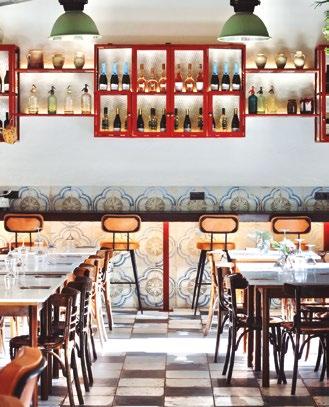
La mejor comida italiana y mediterránea que combina tradición y vanguardismo a través de las elaboraciones de nuestro prestigioso chef. The best Italian and Mediterranean food that combines tradition and vanguardism through the elaborations of our prestigious chef.

Disfrute en el privilegiado puerto deportivo Puerto Portals de la exclusiva cocina mediterránea con productos de primera calidad y una extensa bodega. Nuestra primera planta le ofrece exclusividad total y espectaculares vistas.
Enjoy exclusive Mediterranean cuisine with top quality produce and an extensive wine cellar, at the privileged Puerto Portals marina. Our first floor offers complete exclusivity and spectacular views.


Genießen Sie im privilegierte Jachthafen Puerto Portals die exklusive mediterrane Küche mit hochwertigen Produkten und einem umfangreichen Weinkeller. Unsere erste Etage bietet Ihnen absolute Exklusivität und spektakuläre Aussichten. Local 16, Puerto Portals 07181 Calvià

Av. de Gabriel Roca, 33 07014 Palma (+34) 669 787 804 - mercat1930.com
Sabores locales y últimas tendencias. Local flavours and last trends.

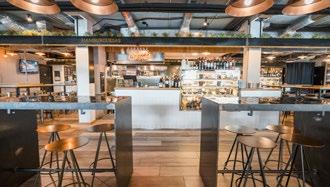

Moll Vell, s/n, 07470. Port de Pollença. +34 971 86 46 35 - unautic.com
DINS SANTI TAURA
Plaza de Llorenç Villalonga, 4 07001 Palma +34 656 738 214 - restaurantdins.com

Un viaje gastronómico por la historia de la isla con productos locales. A gastronomic journey through the history of the island with local products.







Propietario de Redivins Owner of Redivins
CORIMBO I 2016
Bodegas La Horra Ribera del Duero 50,05 €
Con uva 100% Tinta del País (Tempranillo) y cepas con una edad media por encima de los 50 años se elabora un vino muy intenso con fondo picota oscuro y ribete rojo oscuro. En nariz también muy intenso, lleno de fruta. Voluminoso, fresco y con una fruta magnífica en boca.

With 100% Tinta del País (Tempranillo) grapes and vines with an average age of over 50 years, this is a very intense wine with a dark cherry red background and dark red rim. The nose is also very intense, full of fruit. Voluminous, fresh and with magnificent fruit on the palate.
PRADO ENEA GRAN RESERVA 2015
Bodegas Muga Rioja 65,50 €

Color rojo-picota, intenso. En nariz muestra un conjunto de frutos negros con tonos especiados, galletas de jengibre y regaliz. La entrada suave y amplia lleva a un paso de boca con una sensación de potencia y un volumen ligero. Perfecto para consumir ya, pero evolucionará bien durante años. Intense cherry-red colour. On the nose it shows an array of black fruits with spicy tones, ginger biscuits and liquorice. The smooth and ample entry leads to a powerful mouthfeel and light volume. Perfect for drinking now, but will evolve well for years to come.
Cuentaviñas
Ribera del Duero 49,35 €
Este vino representa a una variedad muy bien aclimatada a una zona con temperaturas extremas en el que este suelo tan pobre imprime un carácter de fruta más negra, una estructura dócil e imponente sin perder la frescura y el equilibrio. This wine represents a variety that is very well acclimatised to an area with extreme temperatures where this poor soil gives it a black fruit character, a docile and imposing structure without losing freshness and balance.
EL ARTE DE VIVIR 2020
Bodegas Neo Ribera del Duero 10,35 €
Elegante y en perfecto equilibrio. Combina aromas a frutos rojos maduros así como especias como la canela y algunas notas tostadas y avainilladas. En boca se muestra firme, elegante con taninos redondos, de final persistente. Ligeramente amaderado para acompañar carnes. Elegant and perfectly balanced. It combines aromas of ripe red fruits as well as spices such as cinnamon and some toasted and vanilla notes. Firm and elegant on the palate with round tannins and a persistent finish. Slightly woody to accompany meats.
GALENA 2016
Clos Galena Priorat 24,50 €



De color rojo cereza picota intenso, pretende expresar la esencia del territorio. Notable complejidad aromática y gran riqueza de matices, donde predominan los balsámicos y las frutas negras secas, mermeladas y toques de especias negras. En boca es muy graso y fresco, con un primer ataque potente pero suave.
Intense cherry red cherry colour, it aims to express the essence of the territory. Remarkable aromatic complexity and a wealth of nuances, with a predominance of balsamic and dried black fruits, jams and hints of black spices. In the mouth it is very oily and fresh, with a powerful but smooth first attack.
Redivins import Palma C/. Ramón y Cajal 19A, Palma - 07011 - Móv.: 652325874.
ROMANCE 2021 Chateau de Berne Mediterrane-Provence 13,40 €

Las vides se han cultivado en los terrenos del Château desde la época romana. Las uvas disfrutan de las noches más frescas de Provenza, lo que ralentiza su maduración y ayuda a producir esta gama de rosados provenzales, frescos, ligeros y florales. Vines have been grown on the Château grounds since Roman times. The grapes enjoy the cooler nights of Provence, which slows their ripening and helps to produce this range of fresh, light and floral Provençal rosés.
Classic Penedès 16,70 €
Burbuja fina y bien integrada. Elegante y equilibrado. Aromas a lías finas, hierbas secas, flores marchitas. En boca, fresco con fino amargor y buena acidez. Elaborado con Macabeo, Xarel.lo y Parellada, de cultivo ecológico y crianza mínima de 24 meses.
Fine, well-integrated bubbles. Elegant and balanced. Aromas of fine lees, dried herbs, wilted flowers.
Fresh on the palate with fine bitterness and good acidity. Made with Macabeo, Xarel.lo and Parellada, organically grown and aged for a minimum of 24 months.

DE LA MAR EL MERO 2021 Bodegas Attis
Rías Baixas 13,15 €
Un pequeño-gran albariño ideal para disfrutar por copa o con comidas más informales. Color amarillo intenso, nariz golosa de fruta blanca fresca con toques sutiles de cítricos; boca golosa y fresca. Perfecto para el marisco y el pescado.
A great little Albariño ideal to enjoy by the glass or with more informal meals. Intense yellow in colour, a gourmand nose of fresh white fruit with subtle hints of citrus; a gourmand and fresh mouthfeel. Perfect with seafood and fish.
POL ROGER W. CHURCHIL 2013 Pol Roger Champaña francesa 253,40 €



La primera nariz es sutil y revela una hermosa frescura. En la entrada en boca, apuntalado por un toque de frutas cítricas, luego se muestra encantador y delicioso. Burbujas deliciosamente elegantes, características de este vino de poder y carácter. Una auténtica sinfonía de sensaciones.
The first nose is subtle and reveals a beautiful freshness. On the palate entry, underpinned by a hint of citrus fruits, it then shows itself charming and delicious. Deliciously elegant bubbles, characteristic of this wine of power and character. A true symphony of sensations.
Lo que dice la etiqueta
El año que aparece en la etiqueta de la botella de vino hace referencia a cuándo fue cosechada la uva y no al momento del embotellado o al de su puesta a la venta.
The year shown on the label of a bottle of wine refers to when the grapes were harvested and not when the wine was bottled or when it was put on sale.
Un kilo de uva por botella La cantidad de uva necesaria para elaborar una botella estándar de vino -750 centilitros- es de aproximadamente un kilo de producto.
One kilo of grapes per bottle
The amount of grapes needed to make a standard bottle of wine750 centilitres - is approximately one kilo of product.
Países con mayor consumo
Según datos de la OIV, en 2021 el país con mayor consumo fue EEUU. No obstante, Portugal -con permiso del Vaticano por su población adulta, limitada extensión y numerosos visitantes- encabeza el ranking de litros por habitante con 51,9. España es octavo con 26,2.
Countries with the highest consumption
According to OIV data, the country with the highest consumption in 2021 was the USA. However, Portugal -with the Vatican's permission due to its adult population, limited size and numerous visitors- leads the ranking of litres per inhabitant with 51.9. Spain is eighth with 26.2.
¿Con o sin hielo?
Según los expertos, la clave está en servir el vino a la temperatura adecuada. Enfriarlo con hielo se acepta, siempre que se retire antes de que el vino quede aguado.
With or without ice?
According to the experts, the key is to serve the wine at the right temperature. Chilling with ice is acceptable, as long as it is removed before the wine becomes watery.
Un vino saca otro vino. Así es. Las temidas manchas de vino tinto en los tejidos pueden eliminarse fácilmente empapando con vino blanco la zona afectada antes de lavarla.
Stains, also with wine
One wine brings out another wine. That's right. The dreaded red wine stains on fabrics can be easily removed by soaking the affected area with white wine before washing.

Un descorche centrado
El eje de rotación de la espiral del sacacorchos no siempre coincide con la punta. Por eso, conviene desplazar ligeramente la inserción del mismo
A centred uncorking
The axis of rotation of the corkscrew spiral does not always coincide with the tip. It is therefore advisable to move the insertion of the corkscrew slightly.


de uno mismo, se abre paso en medio de incendios, sequías e inundaciones y amenaza con condicionar el día a día de niños y jóvenes que observan el futuro con desesperanza: más de la mitad de los entrevistados piensan que “la humanidad está condenada al fracaso”.
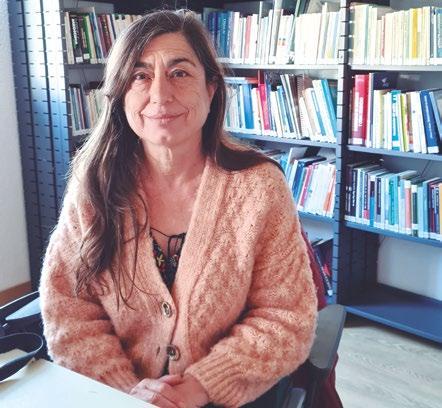
El máximo exponente de este desasosiego ante la emergencia climática, de la que ya no es posible evadirse, es Greta Thunberg. Como ella, millones de jóvenes de la Generación Z sienten sobre sus hombros el peso de salvar el planeta, algo que para la psicóloga Carme Aguiló se convierte en un problema cuando aparece “la obsesión, el pensamiento repetitivo o las crisis. Cuando no referimos a un trastorno de ansiedad, hablamos de unos síntomas a nivel físico como puedan ser palpitaciones, temblores o sofocos; a nivel cognitivo, en forma de pensamientos catastróficos y obsesivos; y en un plano emocional, de cambios muy bruscos que pueden ir desde el terror hasta la rabia. La ansiedad puede coger muchas formas y una es la ecoansiedad”, remata.
V. S. PalmaLas temperaturas aumentarán entre 3 y 5 grados, el nivel del mar podría subir casi un metro a finales de siglo… Cada día nos despertamos con alarmantes mensajes que alertan del impacto negativo que ya está teniendo el cambio climático en nuestras vidas. En octubre –el más caluroso registrado en España– The Lancet reveló que España es el país europeo con más muertes atribuidas al calor y previno que aumentarán las enfermedades infecciosas y patologías respiratorias. El escenario es espeluznante, el reloj hace tiempo que empezó la cuenta regresiva y las estrategias gubernamentales “amenazan cada vez más la salud y
supervivencia de las personas”, subraya la prestigiosa revista.
Al deterioro de la salud física, hay que sumarle la huella que está dejando el calentamiento global en la salud mental, sobre todo en las nuevas generaciones. El 84% de los 10.000 jóvenes encuestados por la publicación médica reconocen estar preocupados por el cambio climático, mientras que más del 50% dice sentir tristeza, ansiedad, rabia, impotencia y culpa en relación a esta cuestión. La ecoansiedad, descrita por la Asociación Americana de Psicología como el temor crónico a sufrir un cataclismo ambiental que se produce al observar el impacto aparentemente irrevocable del cambio climático y la preocupación asociada por el futuro
Acciones individuales para mitigar el daño Aguiló sostiene que una de las claves para superar la ecoansiedad es “ir al verdadero origen del malestar y aceptar –que no resignarse– que hay situaciones que trascienden a uno mismo, como es el deterioro medioambiental. Las acciones individuales encaminadas a contaminar lo menos posible, reducir el consumo de plástico, etc. son muy saludables pero amargarse la vida tampoco es ecológico”, reflexiona.
Desde la asociación ecologista Amics de la Terra reivindican el activismo como herramienta para combatir este malestar: “Trabajamos desde una posición propositiva y creamos un espacio participativo, organizando acciones y campañas para canalizar estas preocupaciones respecto a la crisis climática, etc.” El Grup Balear d’Ornitologia I Defensa de la Naturalesa, por su parte, expresa que entre sus miembros no existe este temor incapacitante: “es gente que está muy metida desde hace tiempo, no es algo que les venga de nuevo”.
Temperatures will rise between 3 and 5 degrees, sea levels could rise by almost a metre by the end of the century... Every day we wake up with alarming messages warning of the negative impact that climate change is already affecting our lives. In October - the hottest October ever recorded in Spain - The Lancet revealed that Spain is the European country with the most deaths attributed to heat and predicted that infectious diseases and respiratory pathologies will increase. The scenario is frightening, the clock has long since started counting down and government strategies "increasingly threaten people's health and survival", the prestigious journal stresses.
In addition to the deterioration of physical health, global warming is leaving its mark on mental health, especially among the younger generations. Eighty-four per cent of the 10,000 young people surveyed by the medical journal admit to being concerned about climate change, while more than 50 per cent say they feel sadness, anxiety, anger, helplessness and guilt in relation to the issue. Eco-anxiety, described by the American Psychological Association as the chronic fear of environmental cataclysm that comes from observing the seemingly irrevocable impact of climate change and the associated concern for one's own future, is making its way into the midst of fires, droughts and floods and threatens to condition the daily lives of children and young people who
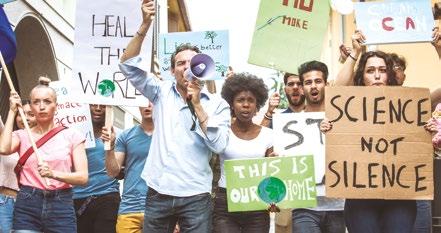
view the future with hopelessness: more than half of those interviewed think that "humanity is doomed to fail".
When worry gets out of control Greta Thunberg is the greatest exponent of this unease about the climate emergency, from which it is no longer possible to escape. Like her, millions of young people from Generation Z feel the burden of saving the planet on their shoulders, something that for psychologist Carme Aguiló becomes a problem when "obsession, repetitive thinking or crises appear. When we refer to an anxiety disorder, we are talking about symptoms on a physical level, such as palpitations, tremors or hot flushes; on a cognitive level, in the form of catastrophic and obsessive thoughts; and on an emotional level, very sudden changes that can range from terror to rage.
Anxiety can take many forms and one of them is eco-anxiety," she says.
Individual actions to mitigate the damage Aguiló argues that one of the keys to overcoming eco-anxiety is to "go to the real source of the discomfort and accept - not resign oneself to it - that there are situations that transcend oneself, such as environmental deterioration. Individual actions aimed at polluting as little as possible, reducing plastic consumption, etc. are very healthy, but making life bitter is not ecological either", she reflects.
The environmental association Amics de la Terra claims activism as a tool to combat this discomfort: "We work from a proactive position and create a participatory space, organising actions and campaigns to channel these concerns about the climate crisis, etc.". The Grup Balear d'Ornitologia I Defensa de la Naturalesa, for its part, expresses that among its members there is no such incapacitating fear: "they are people who have been involved for a long time, it is not something that comes to them newly.

El comienzo del invierno puede ser melancólico para los amantes del buen tiempo, mientras que para los surfistas en Mallorca es la época perfecta para volver a coger olas.
Rara vez se ha oído hablar del "surf Mediterráneo", ya que para la práctica de este deporte se necesitan unas condiciones meteorológicas y marítimas que, normalmente, solo se dan en las costas de los océanos.
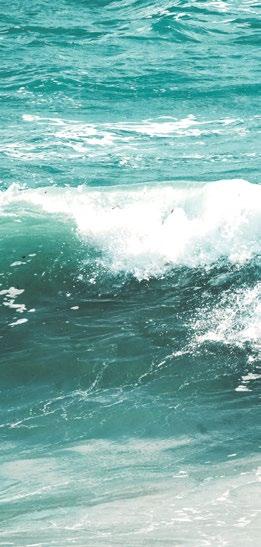
Las condiciones perfectas para surfear en Mallorca Estas condiciones, como olas de tamaño considerable, con fuerza, sin viento y con un periodo entre olas mayor de 8 segundos, no se suelen encontrar en el Mediterráneo, salvo en invierno y especialmente en Mallorca. La isla se encuentra en una zona estratégica para recibir este tipo de olas que están producidas por diferentes borrascas, típicas de bajas presiones invernales, por todas sus costas, aunque especialmente en el norte y llevant: Son Serra, Cala Mesquida, Cala Agulla y Canyamel suelen ser las playas donde más se puede practicar el surf en la isla durante la temporada baja, sobre todo cuando sopla el fuerte viento de tramuntana. Aunque tampoco es de extrañar que en ocasiones las tormentas estivales provoquen un oleaje ideal para surfear en las playas del sur y sudoeste, como en Peguera, Cala Major, Can Pastilla y Es Trenc.
“El surf en Mallorca es poco constante en verano. En invierno se pueden rascar algunos días de olas, aunque se tienen que dar las condiciones ideales como el mar de fondo y el mar terral”, comenta Sofía Boned, joven surfista mallorquina.
La peculiaridad de Mallorca hace que mucha gente local se haya aficionado paulatinamente a este deporte desde los años 90, y hace poco más de una década el auge del surf se ha traducido en un incremento de la oferta deportiva, tanto para turistas como para la población local: se han abierto nuevas escuelas de surf y los clubes náuticos han ampliado sus cursos incluyendo el surf y el pádel surf como producto estrella.
“El mejor spot para iniciarse en el surf en Mallorca es Can Pastilla, ya que es una playa larga protegida del viento. Es ideal porque hay muchas escuelas de surf donde puedes alquilar tablas y tener clases para empezar”, continúa Sofía Boned.
Si bien es cierto que tan solo existen unos 175 días surfeables al año de media en las costas mallorquinas, es uno de los destinos del Mediterráneo donde mejor se puede practicar. Además, es un buen reclamo para un turismo alternativo en invierno, que se puede complementar con otros deportes acuáticos, como el kitesurf, el windsurf o el piragüismo.
El surf está de moda en Mallorca Muchas empresas (tiendas de surf, escuelas de surf, restaurantes de costa y otras empresas de deportes de aventura) ven como una buena oportunidad dinamizar su economía alrededor de este deporte y sus distintas modalidades.
“Se nota que cada vez es más popular este deporte. En Mallorca, al ser una isla y estar rodeada de olas, todo el mundo tiene opción de probar”, asegura Joan Estrany, surfista mallorquín.
El surf complementado con otros deportes acuáticos se puede convertir en una oferta turística alternativa para la temporada baja en invierno y una buena oferta deportiva para la gente de la isla.
The beginning of winter can be a melancholy time for lovers of good weather, while for surfers in Mallorca it is the perfect time to get back into the waves.
Rarely has one heard of "Mediterranean surfing", as this sport requires weather and sea conditions that are normally found on the coasts of the oceans.

The perfect conditions for surfing in Mallorca
These conditions, such as waves of considerable size, strong, windless and with a period between waves of more than 8 seconds, are not usually found in the Mediterranean, except in winter and especially in Mallorca. The island is located in a strategic area to receive this type of waves that are produced by different storms, typical of winter low pressure, all along its coasts, although especially in the north and Llevant: Son Serra, Cala Mesquida, Cala Agulla and Canyamel are usually the beaches where you can surf the most on the island during the low season, especially when the strong Tramuntana wind blows. Although it is not surprising that sometimes the summer storms cause an ideal swell for surfing on the southern and south-western beaches, such as Peguera, Cala Major, Can Pastilla and Es Trenc.
"The surf in Mallorca is not very consistent in summer. In winter you can catch a few days of waves, although you need to have ideal conditions such as swell and ground swell," says Sofía Boned, a young surfer from Mallorca.
The peculiarity of Mallorca means that many local people have gradually
Arriba a la izquierda, Sofía Boned tras el take off. Abajo a la derecha, Joan Estrany realizando un cutback. Surfspot: Cala Domingos. Fotos: Piter Castillo.
become fans of this sport since the 1990s, and just over a decade ago the surfing boom has resulted in a growing sporting offer, both for tourists and for the local population: new surf schools have opened and the nautical clubs have expanded their courses to include surfing and paddle surfing as a top product.
"The best spot to start surfing in Mallorca is Can Pastilla, as it is a long beach sheltered from the wind. It is ideal because there are many surf schools where you can rent boards and have lessons to get you started," continues Sofía Boned.
Although it is true that there are only 175 surfing days a year on average on the Mallorcan coasts, it is one of the best destinations in the Mediterranean for surfing. Moreover, it is a good attraction for alternative tourism in winter, which can be complemented with other water sports, such as kitesurfing, windsurfing or canoeing.
Surfing is trendy in Mallorca Many companies (surf shops, surf schools, coastal restaurants and other adventure sports companies) see a
good opportunity to boost their economy around this sport and its different modalities.
"It is noticeable that this sport is becoming more and more popular. In Mallorca, being an island and surrounded by waves, everyone has the chance to try it," says Joan Estrany, a Mallorcan surfer.



Surfing complemented with other water sports can become an alternative tourist offer for the low season in winter and a good sporting offer for the people of the island.
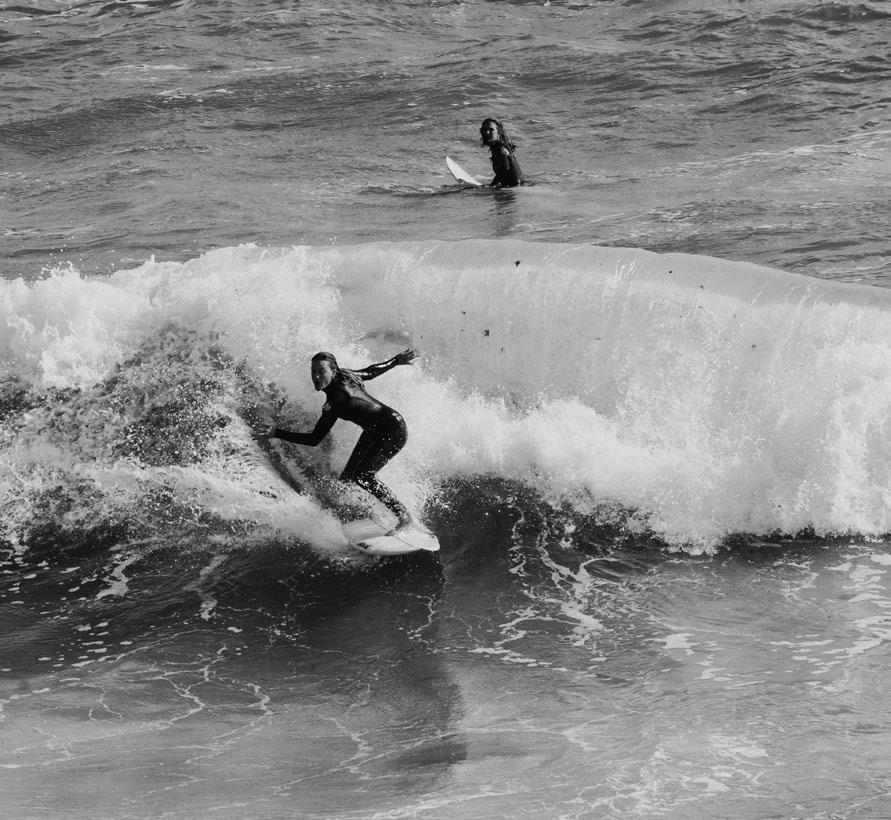
El mejor spot para iniciarse en el surf en Mallorca es Can Pastilla, ya que es una playa larga protegida del viento"
"The best spot to start surfing in Mallorca is Can Pastilla, as it is a long beach sheltered from the wind"
A bordo de una bici o caminando, Santanyí muestra una de sus mejores caras, aunque no se trate de la más conocida. Famoso por sus increíbles playas, los encantos del municipio tierra adentro también dejan con la boca abierta al visitante, quien encuentra en Santanyí numerosos itinerarios para conectar de lleno con la desbordante naturaleza que rodea sus núcleos urbanos.
De la diversidad de ecosistemas del parque natural de Mondragó a los paseos costeros con el azul eléctrico del mar de fondo, conocer cada rincón de Santanyí es un planazo cualquier mes del año gracias a la selección de rutas de senderismo y cicloturismo impulsadas por el Ayuntamiento.
Los amantes del senderismo están de suerte en Santanyí. El municipio ha sumado a su oferta de planes un total de doce rutas a pie que permiten disfrutar de la zona tanto en verano como en invierno. Muchas discurren junto al mar, uno de sus grandes atractivos, y están clasificadas según su dificultad. Para facilitar las cosas al senderista, el Ayuntamiento ha recopilado todas las rutas en un mapa que muestra con detalles, y con información de interés para el caminante, el desarrollo de cada una de las rutas.
El propio recorrido cuenta con señalización y códigos QR para facilitar la orientación de los caminos, que van desde los 650 metros a los 4,5 kilómetros. Por este motivo, casi todas se pueden completar en menos de una hora. Los trazados pasan por lugares emblemáticos como el Parque Natural de Mondragó y sus ecosistemas -playas, costas rocosas, dunas y pinares- o el mirador de Ses Fonts de n’Alis. También proponen recorridos desde núcleos como Cala d’Or, Cala Figuera, Cala Santanyí o Portopetro, pasando por Calonge, s’Almunia o es Pontàs.
Sobre ruedas Los ciclistas encuentran en Mallorca un paraíso natural para recorrer sobre ruedas. Por eso en Santanyí han apostado por ofrecer 19 rutas en bici -12 por carretera y otras 7 de BTT o montaña- que parten desde Cala d’Or o Cala Figuera, dos de los principales núcleos turísticos.
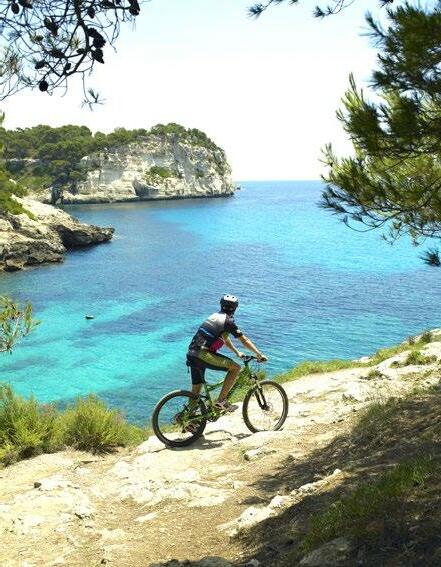
Santanyí es el punto de partida perfecto para llegar a otros lugares de la isla como el faro de Cala Rajada, el de Cap Salines, Llucmajor, el Santuari de Bonany… Recopiladas en un folleto con las características y el itinerario de cada ruta, a través de códigos QR el ciclista puede elegir la que más se adapte a su nivel, ya que van desde los 30 a los 200 kilómetros, con diferentes grados de desnivel. Una oportunidad única para descubrir la isla desde Santanyí, de itinerario en itinerario, cualquier día del año.
On a bike or on foot, Santanyí shows one of its best sides, although it is not the best known. Famous for its incredible beaches, the charms of the municipality inland also leave the visitor speechless, who will find in Santanyí numerous itineraries to fully connect with the overflowing nature that surrounds its urban centres.
From the diversity of ecosystems in the Mondragó natural park to the coastal walks with the electric blue of the sea in the background, getting to know every corner of Santanyí is a great plan any month of the year thanks to the selection of hiking and cycling routes promoted by the Town Council.
A catalogue of sensations Hiking lovers are in luck in Santanyí. The municipality has added a total of twelve hiking routes to its range of plans that allow you to enjoy the area in both summer and winter. Many of them run alongside the sea, one of its main attractions, and are classified according to their difficulty. To make things easier for walkers, the Town Council has compiled all the routes on a map that shows in detail, and with information of interest to the walker, the development of each of the routes.
The route itself has signposting and QR codes to facilitate the orientation of the paths, which range from 650 metres to 4.5 kilometres. For this reason, almost all of them can be completed in less than an hour. The routes pass through emblematic places such as the Mondragó Natural Park and its ecosystems - beaches, rocky coasts, dunes and pine forests -
or the Ses Fonts de n'Alis viewpoint. They also propose routes from towns such as Cala d'Or, Cala Figuera, Cala Santanyí or Portopetro, passing through Calonge, s'Almunia or es Pontàs.
Cyclists find in Mallorca a natural paradise to travel around on wheels. That is why Santanyí has opted to offer 19 cycling routes - 12 on roads and another 7 mountain bike routes - that start from Cala d'Or or Cala Figuera, two of



Arriba, miradores al mar en una de las rutas de senderismo. En el centro, senderos que discurren por Caló des Moro. Abajo, ruta cicloturista junto al mar. Fotos: Ajuntament de Santanyí.
the main tourist resorts. Santanyí is the perfect starting point to reach other places on the island such as the lighthouse of Cala Rajada, Cap Salines, Llucmajor, the Santuari de Bonany...
Compiled in a brochure with the characteristics and itinerary of each route, through QR codes the cyclist can choose the one that best suits hi s or her level, as they range from 30 to 200 kilometres, with varying degrees of slope. A unique opportunity to discover the island from Santanyí, on route, any day of the year.
José E. Iglesias. Enviado especial
Madrugada del domingo 6 de noviembre en Nueva York. El reloj se retrasa una hora: a las 2 es la 1. Poco después, decenas de miles de personas se desperezan en la densamente poblada y ruidosa capital del planeta; muchos ni siquiera han podido pegar ojo. La presión anímica es alta. La climática también: se espera un récord de temperaturas entre los 24 y los 19 grados centígrados. Nunca antes se habían dado esas condiciones, la media histórica se sitúa entre los 12 y los 5 grados. La humedad sube hasta el 86%.
50.000 corredores de 131 países van llegando por oleadas a los límites de Staten Island con el puente Verrazano, a Fort Wadsworth, un área convertida en zona recreativa y campo de preparación de los atletas, que van viendo cómo discurre el lento y tenso amanecer de Nueva York en el día soñado. Se estiran, se relajan, calientan, charlan, ríen, muchos reflejan la tensión en la cara, van al baño (a cualquiera de los 1.400 lavabos portátiles puestos a su disposición), se miran, comentan los modelos de los otros corredores, estrambóticos, modernos, clásicos... Pero las altas temperaturas y los nervios aconsejan ir soltando lastre: caen tutús, capas de Supermán, máscaras de Spiderman, sudaderas, etc. Alea jacta est.
Por delante tienen los célebres 42’195 kilómetros transitando por los cinco distritos de la Gran Manzana: Staten Island, Brooklyn, Queens, Bronx y Manhattan. La tensión va a más en esta larga espera. No han entrenado tres duros meses para estar aquí tirados un par de horas mientras contemplan ante ellos, majestuoso y ¡vacío!, el camino al nirvana: el puente Verrazano, donde está la salida. Perros de terapia actúan como apoyo emocional de
los atletas que lo necesitan, mientras esperan la llamada a los corrales de salida.
A las 8:00 suena la primera salida de la 52 maratón de Nueva York con el “My way” de Sinatra. Acaba de empezar la carrera sobre asfalto más gloriosa. Abren el turno los pros de sillas de ruedas: el primero cruzará la meta en 1:25’, Marcel Hug, un suizo con cinco maratones, cuando todavía no han salido de Fort Wadsworth las dos últimas tandas de corredores.
Al mismo tiempo, lejos de allí, en Central Park, apenas hay gente, solo grupos de policías que charlan y van tomando posiciones. El popular parque ya está blindado, y las calles y avenidas adyacentes bloqueadas por filas de pesados camiones. En la zona reina un silencio infrecuente en la siempre agitada y bulliciosa Manhattan. Nada que ver con lo que está ocurriendo ya en la otra parte del East River, donde decenas de miles de personas se agolpan alborozadas al paso de la incipiente carrera para animar a los atletas como si los conocieran de toda la vida y no los fueran a volver a ver. Celebran el más relevante de los cinco maratones Majors (junto con Boston, Chicago, Tokio y Londres). Risas y lloros y gritos y campanas y timbres y sirenas y silbatos, matasuegras, cornetas, tambores, cheerleaders y pequeños grupos musicales por las calles. El volumen de la animación es similar en casi todos los barrios: ensordecedor. Esto es América, un país profundamente individualista en el día a día pero que lo da todo en las grandes celebraciones, como su maratón, su halloween o cuando los Yankees ganan la liga, por citar algunas.
La serpiente multicolor de runners avanza de distrito en distrito, entre los profundos contrastes urbanos y arquitectónicos que atesora la Ciudad
de ciudades. Ya suma varios kilómetros ininterrumpidos. Hasta el final, nadie abandona, salvo los que caen fulminados. Se desploma el líder, Daniel Do Nascimento, 24 años, brasileño que venía de quedar tercero en el maratón de Seúl con 2:04’. Brutal. Al final ganarán dos kenianos: en hombres Evans Chebet (2:08’) y Sharon Lokedi (2:23’) en mujeres.
El grupo de mallorquines salta al puente Verrazano en tandas separadas. Los primeros, sobre las 9:10. Son Joan Pere Carbonell, que acabará en 2:55’, Gerard Pasán, Gabriel Payeras, Joaquín Martínez (entre 3:06’ y 3:09’) y Catalina Sastre y Marina Mascaró, que entran juntas en meta 4:13’ más tarde. La segunda tanda del grupo, alrededor de las 10:55, la conforman Encarna Piñero, Elena Ordinas, Julio Pérez y el entrenador Xavi Fuster, que, con 12 maratones a sus espaldas, participa lesionado de una hernia para acompañar al grupo hasta donde pueda. Llega hasta Manhattan. Los tiempos van de 4:37 a 4:40’.
Ninguno de ellos va a hacer marca, salvo Carbonell, que quiere bajar, y baja, de las 3 pesadas horas, aunque sin quemarse mucho: en pocas semanas tiene otro reto al límite en la antártida; el resto se lo toma con más calma, unos sufriendo más que otros, pero todos sufren. Sin dolor no hay leyenda…, ni medalla.
Los amigos y familiares buscan cruzarse con los corredores, lo hacen en dos o tres ocasiones durante todo el circuito, y cuando se encuentran se produce tal subidón de endorfinas en los runners que consigue que remonten las penas: las caras abatidas se tornan carcajadas y lágrimas, lágrimas de contentos; de arrastrarse de cansancio,
De
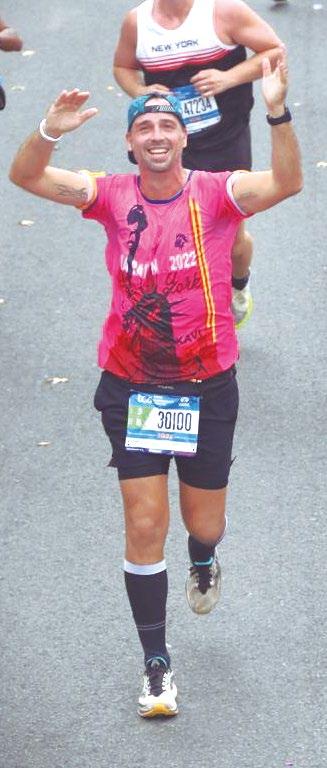
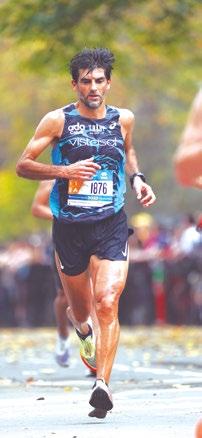


a saltar de alegría.
Todos han entrenado durante tres o cuatro meses y cuidado su alimentación; los más experimentados, todo el año, es su vida. Durante la carrera han tomado geles, sales, cafeína, agua o bebidas isotónicas de manera programada, cada uno en función de la dieta elegida. Para no caer.
Van llegando a Central Park, el final está cerca, aunque la dureza de estos tramos últimos sienta a castigos inmerecidos. La gloria está a unos metros. Cruzan y sonríen y se abrazan y vuelve el baño de endorfinas. Misión cumplida. La medalla. Una medalla que en los días siguientes muchos llevan por la calle inspirando respeto y atrayendo felicitaciones.
Continúa en p. 88



Early morning on Sunday, November 6th in New York. The clock is set back one hour: at 2 o'clock it is 1 o'clock. Shortly afterwards, tens of thousands of people wake up in the densely populated capital of the planet; many have not even slept
a wink. The emotional pressure is high. So is the weather: record temperatures of between 24 and 19 degrees Celsius are expected. Such conditions have never been seen before; the historical average is between 12 and 5 degrees Celsius. Humidity is expected to rise to 86%. 50,000 runners from 131 countries are arriving at Fort Wadsworth, an area converted into a recreation area and preparation camp for the athletes, who are watching the slow, tense New York dawn on the day of their dreams. They stretch, relax, warm up, chat, laugh, many reflect the tension on their faces, go to the bathroom (to any of the 1,400 portable toilets available), look at each other, comment on the other runners' outfits, bizarre, modern, classic? But the high temperatures and the nerves make it advisable to let go of the ballast: tutus, Superman capes, Spiderman masks, sweatshirts, etc. fall down. Alea jacta est.
Ahead of them are the famous 42.195 kilometres through the five boroughs of the Big Apple: Staten Island, Brooklyn, Queens, Bronx and Manhattan. The tension is mounting in this long wait. They haven't trained for three hard months to
lie here for a couple of hours while they contemplate the road to nirvana: the Verrazano Bridge, where the starting point is located, majestic and empty. Therapy dogs act as emotional support for the athletes in need as they wait for the call.
At 8:00 the first start of the 52nd New York City Marathon is sounded with Sinatra's "My way". The most glorious race on asphalt has just begun. The first to cross the finish line in 1:25' is Marcel Hug, a Swiss runner with five marathons to his name, when the last two groups of runners have not yet left Fort Wadsworth. At the same time, far away, in Central Park, there are hardly any people, just groups of policemen chatting and taking up positions. The popular park is already armoured, and the adjacent streets are blocked by rows of heavy trucks. The area is unusually quiet in the always hectic and bustling Manhattan. It is a far cry from what is already happening on the other side of the East River, where tens of thousands of people are crowding around the incipient race to cheer on the athletes as if they have known them all their lives and will never see them again. They are celebrating the most important of the
five major marathons (along with Boston, Chicago, Tokyo and London). Laughter and crying and shouting and bells and whistles, drums, cheerleaders and small bands in the streets. The volume of the cheering is similar in almost every neighbourhood: deafening. This is America, a country that is profoundly individualistic on a day-to-day basis but gives its all at the big celebrations, like its marathon, its Halloween or when the Yankees win the league.
The multicoloured snake of runners moves from district to district, amidst the profound urban and architectural contrasts that the City of Cities treasures. It is already several kilometres long and uninterrupted. Until the end, no one gives up, except for those who fall to the ground. The leader, Daniel Do Nascimento, 24 years old, a Brazilian who had just finished third in the Seoul marathon with 2:04', collapses. Brutal. In the end, two Kenyans will win: Evans Chebet (2:08') in the men's race and Sharon Lokedi (2:23') in the women's race.

The group of Mallorcans jumped onto the Verrazano Bridge in separate batches. The first ones, at around 9:10am. They are Joan Pere Carbonell, who will finish in 2:55', Gerard Pasán, Gabriel Payeras, Joaquín Martínez (between 3:06' and 3:09') and Catalina Sastre and Marina Mascaró, who enter the finish line together 4:13' later. The second group, at around 10:55, is made up of Encarna Piñero, Elena Ordinas, Julio Pérez and coach Xavi Fuster, who, with 12 marathons under his belt, is taking part with a hernia injury. He made it all the way to Manhattan. The times range from 4:37 to 4:40.
None of them are going to set a new record, except Carbonell, who wants to go under 3 hours, but without burning himself too much: in a few weeks he has another challenge to the limit in Antarctica; the rest are taking it easier, some suffering more than others, but all of them are suffering. Without pain there is no legend... or medal.
Friends and family members look for runners, they do it two or three times during the whole circuit, and when they meet, the runners get such a rush of endorphins that they are able to overcome their sorrows: their dejected faces turn into laughter and tears of joy.
They have all trained for three or four months and taken care of their diet; the more experienced ones, all year round, it's their life. During the race they have taken gels, salts, caffeine, water or isotonic drinks in a programmed way, each one according to the chosen diet. So as not to fall.
As they reach Central Park, the end is near, although the hardness of these last stretches feels like undeserved punishment. Glory is just a few metres away. They cross and smile and hug each other and the endorphin bath returns. Mission accomplished. The medal. A medal that in the following days many will carry in the streets, inspiring respect and attracting congratulations.
Continues on p. 88
Gabriel Payeras, 3:16’. 55 años. Ocho maratones. “La carrera es un rompepiernas, pero el ambiente, espectacular. Entrené durante 9 semanas. Moderé el ritmo a partir del km 25”.
Marina Mascaró, 4:13’. 43 años. Dos maratones. “Hubo momentos duros, era un recorrido con mucho desnivel, sobre todo los primeros kilómetros, ahí dudé de si podría terminarla. Pero la corrí a un ritmo cómodo”.
Gerard Pasán, 3:06’. 44 años. Nueve maratones. “Las sensaciones desde los primeros kilómetros fueron muy malas. Los peores momentos fueron cuando me entraron los calambres, a unos 3 km de la meta”.
Joaquín Martínez, 3:19’. 45 años. Dos maratones. “Los primeros 21 km fueron bastante bien pero por las sen-
saciones sabíamos que íbamos a sufrir. Los últimos km fueron lo peor”.
Joan Pere Carbonell, 2:55’. 51 años. 24 maratones, con los seis majors. “El objetivo era bajar de 3 horas sin agotarme, y que me sirviera de entrenamiento para el maratón que corro en breve en el polo”.
Catalina Sastre, 4:13’. 50 años. Dos maratones. “Mi objetivo era llegar sana y salva. Sufrí desde el primer momento. De repente estás en el km 20 y dices, bueno, ya he hecho la mitad. Del 20 al 30 es aburrido. Del 30 al 40 agonizas”.
Elena Ordinas, 4:37’. 53 años. Dos maratones. “Desde el principio tuve unas sensaciones muy buenas. El buen tiempo, los rascacielos, miles de personas, tus amigos y familia… No me puse al límite.
Cuando acabamos estábamos eufóricos”.
Julio Pérez, 4:40’. 47 años. Dos maratones. “A partir del km 30 empezaron los dolores en las piernas y los pies. Los últimos 5 km muy duros. Solo pensé que había pasado lo peor cuando crucé la meta”.
Encarna Piñero, 4:37’. 51 años. Tres maratones. “El momento más duro fue en el km 32, cuando me entró flato y empezó a dolerme la cadera, pero aun así sabía que la iba a acabar. En esos diez últimos km me acordaba de mi familia, mis amigos…”
Xavi Fuster, 44 años. 12 maratones con las 6 majors. “Mi objetivo era ayudar a mis compañeros a acabar. A partir del km 10 me empezó a molestar mucho la hernia inguinal que tenía. Aguanté hasta el km 26, sabiendo que mi grupo ya podría ir solo.

Gabriel Payeras, 3:16'. 55 years old. Eight marathons. "The race is a leg breaker, but the atmosphere is spectacular. I trained for 9 weeks. I moderated the pace from km 25 onwards".
Marina Mascaró, 4:13'. 43 years old. Two marathons. "There were some tough moments, it was a very hilly course, especially the first few kilometres, so I doubted whether I could finish it. But I ran it at a comfortable pace".
Gerard Pasán, 3:06'. 44 years old. Nine marathons. "The sensations from the first kilometres were very bad. The worst moments were when I got cramps, about 3 km from the finish line".
Joaquín Martínez, 3:19'. 45 years old. Two marathons. "The first 21 km went quite well but from the sensations we knew we were going
to suffer. The last kilometres were the worst".
Joan Pere Carbonell, 2:55'. 51 years old. 24 marathons, with the six majors. "The goal was to go under 3 hours without exhausting myself, and to use it as training for the marathon I'm going to run soon at the Pole".
Catalina Sastre, 4:13'. 50 years old. Two marathons. "My goal was to get there safe and sound. I suffered from the very first moment. Suddenly you're at the 20th kilometre and you say, well, I've already done half of it. From 20 to 30 is boring. From 30 to 40 you're in agony".
Elena Ordinas, 4:37'. 53 years old. Two marathons. "From the beginning I had a very good feeling. The good weather, the skyscrapers, thousands of people, your friends and family... I didn't push myself to the
limit. When we finished we were euphoric".
Julio Pérez, 4:40'. 47 years old. Two marathons. "From km 30 onwards the pains in my legs and feet started. The last 5 km were very hard. I only thought the worst was over when I crossed the finish line".
Encarna Piñero, 4:37'. 51 years old. Three marathons. "The hardest moment was at the 32nd km, when I got flatus and my hip started to hurt, but I still knew I was going to finish. In those last ten kilometres I remembered my family, my friends...".
Xavi Fuster, 44 years old. 12 marathons with the 6 majors. "My goal was to help my teammates to finish. From km 10 onwards, my inguinal hernia started to bother me a lot. I held on until the 26th km, knowing that my group could go alone.
La agenda de invierno en Puerto Portals convierte sus instalaciones en un refugio durante estos meses. En diciembre, el puerto se viste de magia con el Christmas Market, el mercado navideño más auténtico de la isla, nombrado como uno de los cinco mejores de Europa por el periódico alemán Die Welt. Más de 40 casetas de madera con una oferta muy variada y de calidad recibirán visitantes del 15 de diciembre al 7 de enero. Incluye la exposición “Ciudad Mágica de Playmobil”, con más de 10.000 piezas, y una pista de patinaje con dinámicas y juegos para los más pequeños. En marzo, del 9 al 11, Puerto Portals acoge la XVIII edición del Rally Clásico Mallorca. Un evento considerado como una de las pruebas de automóviles clásicos de más alto nivel internacional al contar con tramos tan singulares como la bajada de la carretera de Sa Calobra. Más de 500 kilómetros, de los cuales 170 se realizan en carretera cerrada, con más de 100 pilotos
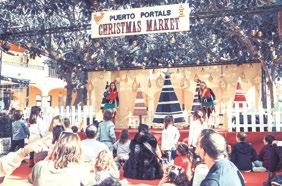
que competirán por el trofeo.
Y de la carretera, al mar: en invierno, Puerto Portals es la sede de las Dragon Winter Series, que en 2023 alcanzan su VI edición. Un circuito de regatas de vela clásica en el que compiten regatistas de alto nivel nacional e internacional.
Planes de invierno para refugiarse del frío en unas instalaciones junto al mar que ofrecen además una experiencia gastronómica puntera para residentes y visitantes.
The winter agenda in Puerto Portals turns its facilities into a refuge during these months. In December, the port is dressed in magic with the Christmas Market, the most authentic Christmas market on the island, named one of the five best in Europe by the German newspaper Die Welt. More than 40 wooden stalls with a very varied and high quality offer will welcome
visitors from 15 December to 7 January. It includes the exhibition "Playmobil Magic City", with more than 10,000 pieces, and a skating rink with dynamics and games for children.
In March, from the 9th to the 11th, Puerto Portals hosts the 18th edition of the Mallorca Classic Rally. This event is considered to be one of the most internationally renowned classic car events, as it features such unique stretches as the descent of the Sa Calobra road. More than 500 kilometers, 170 of which are on closed roads, with more than 100 drivers competing for the trophy.

From the road to the sea: in winter, Puerto Portals is the venue for the Dragon Winter Series, which in 2023 reaches its 6th edition. A circuit of classic sailing regattas in which top national and international sailors compete.
Winter plans to take refuge from the cold in the great facilities by the sea that also offer a cutting-edge gastronomic experience for residents and visitors.

La exposición hace un recorrido por uno de los grandes temas del arte figurativo a lo largo de la historia: el ser humano.
Con un enfoque atractivo, fresco y accesible, “La imagen humana. Arte, identidades y simbolismo” llega a CaixaForum Palma para fomentar la reflexión e invitar a los visitantes a abordar temas vigentes, como el ideal de belleza, la divinidad o el poder.
A través de 149 obras marcadamente diversas y heterogéneas, como esculturas, pinturas, filmaciones, dibujos, numismática, fotografía, videoinstalaciones
◆ Una gran panorámica del arte figurativo que atraviesa fronteras culturales, cronológicas y geográficas. ◆ CaixaForum Palma explora la representación del ser humano a lo largo del tiempo con una muestra disponible hasta el 9 de abril de 2023. ◆ La exposición pone en diálogo por primera vez los fondos del British Museum con la colección de la Fundación “la Caixa”.
y objetos, la exposición, disponible hasta el 9 de abril de 2023, explora la representación del ser humano a lo largo de la historia a través de diferentes culturas y épocas hasta la actualidad, en el marco de una nueva colaboración con el British Museum. La muestra incluye, además, una selección de obras de la Colección de Arte Contemporáneo de la Fundación “la Caixa”.
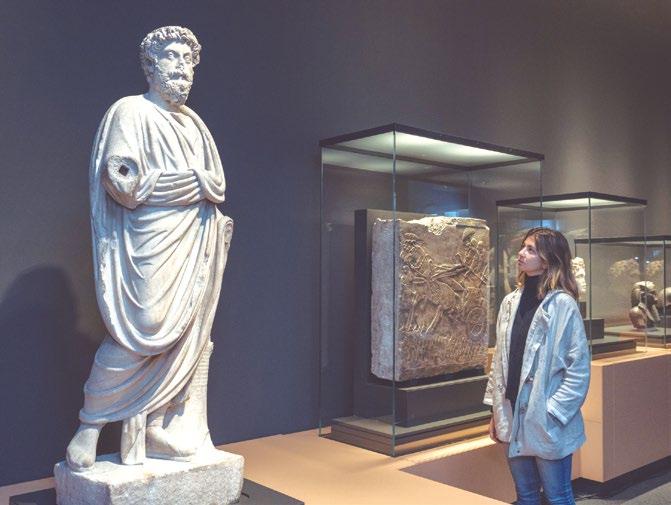
El discurso de la exposición plantea cuestiones de actualidad y yuxtapone
joyas del arte antiguo con espectaculares obras más recientes de diversas culturas, además de otras firmadas por artistas como Henri Matisse, Goya, Albrecht Dürer, Édouard Manet, Tom Wesselmann, Christopher Williams, Vanessa Beercroft, Frank Auerbach, Anton van Dyck, Ernst Kirchner, Antoni Tàpies, Luis de Madrazo, Esther Ferrer, Óscar Muñoz, Raffaello, Rembrandt, Parviz Tanavoli, Rafael Lozano-Hemmer, Craigie Horsfield i Otto Dix, entre otros.
M. G. PalmaEl recorrido se divide en cinco ámbitos temáticos que huyen de cualquier cronología: Belleza ideal, Retratos, El cuerpo divino, El cuerpo político y La transformación corporal. Representaciones arquetípicas, imbuidas de un complejo simbolismo, se combinan con otras concebidas como descripciones realistas de la figura humana. Pese a la variedad, todas las figuraciones encarnan ideas y conceptos comunes en todas las sociedades y pueblos.
Mediante diferentes fórmulas, como preguntas estimulantes, proyecciones de vídeo que ponen el acento en detalles concretos de algunas obras de arte contemporáneas o códigos QR que proponen juegos e interacciones con las piezas, “La imagen humana. Arte, identidades y simbolismo” interpela directamente al público.
"The human image", a great panorama of figurative art that crosses cultural, chronological and geographical borders


With an attractive, fresh and accessible approach, "The Human Image. Art, identities and symbolism" comes to CaixaForum Palma to encourage reflection and invite visitors to approach current issues, such as the ideal of beauty, divinity and power.

Through 149 remarkably diverse and heterogeneous works, such as sculptures, paintings, films, drawings, numismatics, photography, video installations and objects, the exhibition, available until the 9th of April 2023, explores the representation of the human being throughout history across different cultures and periods up to the present day, within the framework of a new collaboration with
the British Museum. The exhibition also includes a selection of works from the Contemporary Art Collection of "la Caixa" Foundation.
The discourse of the exhibition raises current issues and juxtaposes jewels of ancient art with spectacular more recent works from different cultures, as well as others signed by artists such as Henri Matisse, Goya, Albrecht Dürer, Édouard Manet, Tom Wesselmann, Christopher Williams and others, Tom Wesselmann, Christopher Williams, Vanessa Beercroft, Frank Auerbach, Anton van Dyck, Ernst Kirchner, Antoni Tàpies, Luis de Madrazo, Esther Ferrer, Óscar Muñoz, Raffaello, Rembrandt, Parviz Tanavoli, Rafael Lozano-Hemmer, Craigie Horsfield and Otto Dix, among others.
The exhibition is divided into five thematic areas that avoid any chronology: Ideal Beauty, Portraits, The Divine Body, The Political Body and Bodily Transformation. Archetypal representations, imbued with complex symbolism, are combined with others conceived as realistic descriptions of the human figure. Despite their variety, all the figures embody ideas and concepts common to all societies and peoples.
By means of different formulas, such as stimulating questions, video projections that emphasise specific details of some contemporary works of art or QR codes that propose games and interactions with the pieces, "The Human Image. Art, Identities and Symbolism" directly challenges the public.
Máscara mortuoria de los s. I-II d. C.y tablero Hohoa de finales del s. XIX y principios del s. XX d. C. © Trustees of the British Museum.
Entre los artistas, figuran nombres como Henri Matisse, Goya, Manet, Madrazo, Tàpies, Albrecht Dürer, Christopher Williams, Vanessa Beercroft o Tom WesselmannDavid Arráez Periodista Tecnológico Technological Journalist
Cuando el lujo entra en el sector tecnológico, lo hace a lo grande. Como nunca nadie se podría imaginar.
Eso es, al menos, lo que podemos pensar cuando vemos algunos de los más lujosos y caros teléfonos móviles de la historia. Y también de los más feos. O eso es lo que uno piensa cuando ve el Vertu Signature Cobra, que por 310.000 $ ofrecía un diseño vintage coronado por serpientes de oro y un extravagante diamante.
Aunque para extravagancia, la del Goldvish Le million, un teléfono que, como su nombre indica, costaba, allá por el año 2006, un millón de dólares. Entró en el libro Guinnes de aquel año como el teléfono más exclusivo y caro jamás vendido. Se fabricaron tan solo tres dispositivos.
Móviles de más de un millón de dólares se han fabricado muchos, como el Diamond Crypto, que además de estar rodeado de diamantes, salió al mercado en 2006 por un precio de 1,3 millones de dólares. En su momento fue uno de los dispositivos más seguros del mundo.
Pero el dispositivo que más se ha ‘tuneado’ para convertirlo en auténtica pieza de orfebrería es el iPhone, objeto de deseo de las masas, y también de los más pudientes. En 2008, el joyero austríaco Peter Alisson fabricó el iPhone 3G Kings Button, creado en oro macizo de 18K y con un diamante de 6,6K como botón de inicio. Su precio, 2,5 millones de dólares.
El iPhone 4 Diamond Rose Edition, lanzado en 2011 por el conocido diseñador Stuart Hughes, salió a la venta por 5,5 millones de dólares. Su precio se justifica en los 500 diamantes incrustados en los bordes, el oro rosa, los 53 diamantes en el logo de la manzana mordida y… en la caja de granito rosa imperial que lo contenía y que pesaba 7 kg.
De más actualidad son los productos del ya mencionado Stuart Hughes. El creador británico es el único que mantiene viva la llama del lujo extremo en el mundo de la tecnología. En su catálogo se pueden encontrar iPads, altavoces, ordenadores portátiles, Apple Watch y, por supuesto, móviles. Los últimos modelos de marcas como Huawei, Samsung y Apple tienen sus versiones de lujo fabricadas por Hugues.

Pero el lujo definitivo tiene nombre propio, al menos en lo que a tecnología se refiere. Y ese nombre es el de Falcon Supernova iPhone 6 Pink Diamond. Bajo esta kilométrica nomenclatura se esconde la pieza de tecnología más cara de la historia. Estamos ante un teléfono inteligente fabricado íntegramente en platino, con inserciones de oro y oro rosa de 24K y un extraordinario diamante incrustado en su parte trasera que hace que el precio del dispositivo oscile entre los 32,5 y los 42,5 millones de dólares, dependiendo del diamante.

El rey Midas del siglo XXI, también conocido como Elon Musk, ya es el orgulloso propietario de Twitter, su nueva casa de muñecas en la que ha entrado como un torbellino.
La compra de Twitter por parte de Musk, que ha sido el culebrón del año, y que se está gestando desde enero de 2022, ha tenido de todo: giros argumentales, héroes, villanos, juicios, sustos, y un protagonista que es genio y bocazas a partes iguales.
La llegada de Musk a Twitter ha sido traumática para muchos, especialmente para gran parte de su cúpula directiva, incluyendo al ex CEO, Parag Agrawal, que han sido convenientemente –y figuradamente– decapitados.
Y ahora, en aras de la “libertad de expresión” y el “bien de la humanidad” que tanto reclama Musk, lo importante es ganar dinero. Twitter empezará a cobrar por usar algunas funcionalidades.
when we see some of the most luxurious and expensive mobile phones in history. And also some of the ugliest. Or that's what you think when you see the Vertu Signature Cobra, which for $310,000 offered a vintage design topped by gold snakes and an extravagant diamond.
For extravagance, though, there was the Goldvish Le Million, a phone that, as its name suggests, cost a million dollars back in 2006. It entered that year's Guinness World Records Book as the most exclusive and expensive phone ever sold. Only three devices were made.


Many million-dollar phones have been made, such as the Diamond Crypto, which, in addition to being surrounded by diamonds, was released in 2006 for a price of $1.3 million. At the time it was one of the most secure devices in the world.
But the device that has been most 'tuned' to become a real piece of jewellery is the iPhone, the object of desire of the masses, and also of the wealthiest. In 2008, Austrian jeweller Peter Alisson made the iPhone 3G Kings Button, created in 18K solid gold and with a 6.6K diamond as the home button. It was priced at $2.5 million.
The iPhone 4 Diamond Rose Edition, launched in 2011 by renowned designer Stuart Hughes, went on sale for $5.5 million. Its price was justified by the 500 diamonds encrusted on the edges, the rose gold, the 53 diamonds in the bitten apple logo and... the imperial pink granite box that contained it and weighed 7 kg.
More topical are the products of the aforementioned Stuart Hughes. The British creator is the only one who keeps the flame of extreme luxury alive in the world of technology. His catalogue includes iPads, loudspeakers, laptops, Apple Watch and, of course, mobile phones. The latest models from brands such as Huawei, Samsung and Apple have their luxury versions manufactured by Hugues.
But the ultimate luxury has a name of its own, at least when it comes to technology. And that name is Falcon Supernova iPhone 6 Pink Diamond. Under this mile-long nomenclature
hides the most expensive piece of technology in history. This is a smartphone made entirely of platinum, with 24K gold and rose gold inserts and an extraordinary diamond encrusted on the back, which makes the price of the device range from $32.5 million to $42.5 million, depending on the diamond.
The 21st century King Midas, aka Elon Musk, is already the proud owner of Twitter, his new dollhouse that he has entered like a whirlwind.
Musk's purchase of Twitter, which has been the soap opera of the year, and has been brewing since January 2022, has had everything: plot twists, heroes, villains, trials, scares, and a protago-

nist who is equal parts genius and loudmouth.
Musk's arrival at Twitter has been traumatic for many, especially for much of its top management, including former CEO Parag Agrawal, who have been conveniently - and figurativelydecapitated.
And now, for the sake of "freedom of speech" and the "good of humanity" that Musk claims is so important, it's all about making money. Twitter will start charging for using some features.
V. S. Palma / Fotos: S.L.
Solimán López se quedó “atrapado” con la revolución digital y eso le ha llevado a “seguir analizando las tecnologías desde un punto de vista crítico-conceptual, pero también estético”. Este new media artist burgalés, que vive a caballo entre París y Mallorca, fundó en 2013 un museo en un disco duro (el Harddiskmuseum) y ha hecho historia al ser el primer creador en vender una obra en NFT en una feria en España: “Hash Tree”.
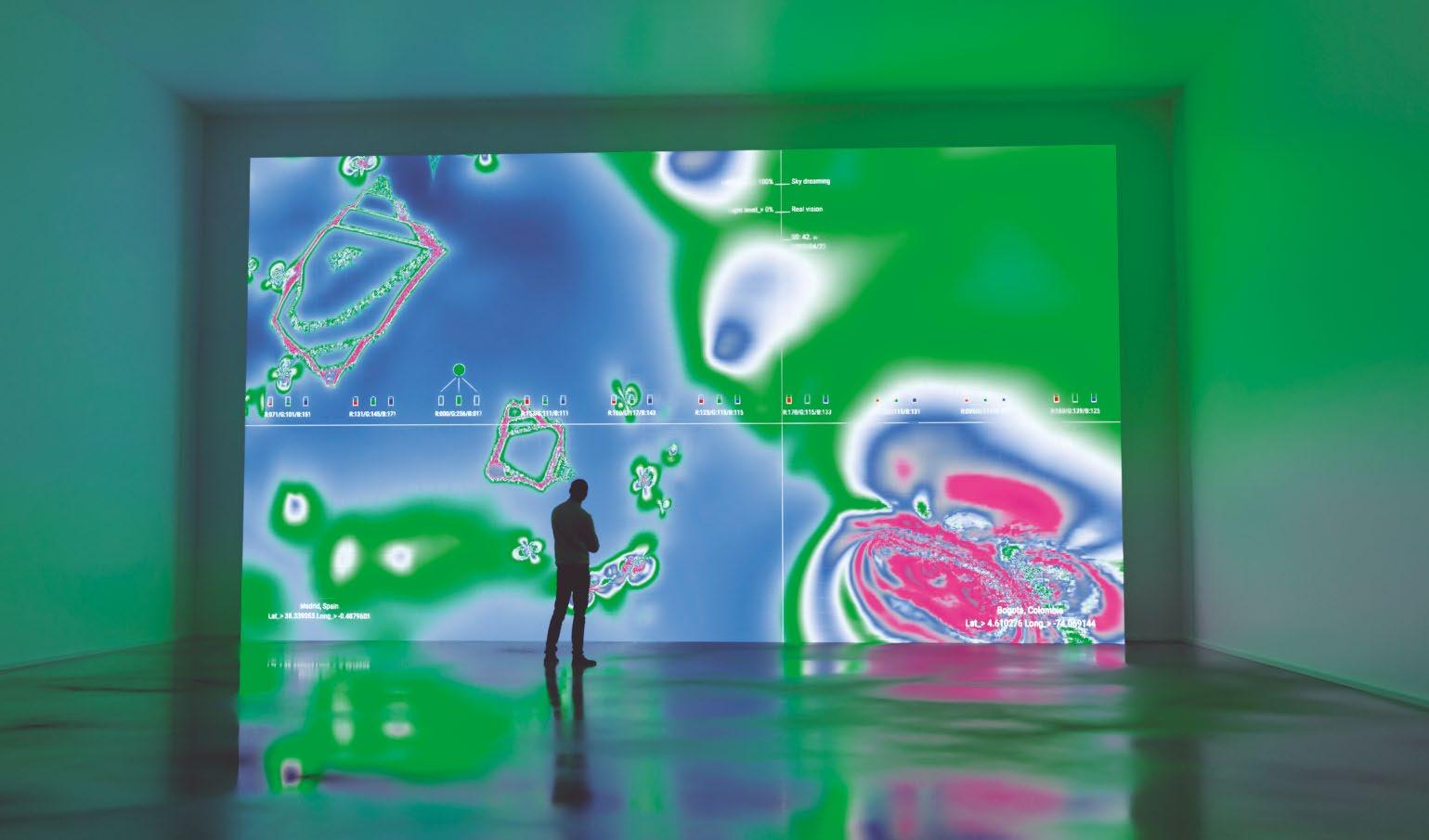
-¿Qué hay detrás de “Hash Tree”?
- Estamos acostumbrados a decir: esta es mi tierra, este es mi perro… Tenemos un discurso de apropiación del ecosistema que es legítimo socialmente pero a nivel de naturaleza es totalmente ilegítimo. Para analizar esta permisividad, compré
un olivo bonsái por internet, lo digitalizamos y lo escaneamos en 3D. Más tarde, convertimos este modelo en NFT. Traspasé el valor económico o vital de ese objeto árbol a la blockchain y luego replanté el árbol. Me quedé con la versión digital con la idea de que podemos poseer lo que queramos en lo digital porque realmente es una creación 100% humana.
-¿Hay una continuidad con “OLEA” de esta obra?
-“Hash Tree” ya estaba introduciendo el concepto del aceite de oliva como producto de la tierra relacionado con la blockchain. Con "OLEA", creamos una criptomoneda cuyo contrato inteligente está almacenado en moléculas de ADN que introdujimos en un aceite de oliva que es histórico porque incorpora en un solo líquido un puente literal entre lo que es la economía más antigua
de la humanidad –la agricultura– con las economías que tienen que ver con lo digital y con la blockchain.
-¿Hacia dónde camina el mercado de los NFT?
-¿Seríamos capaces de separar una pintura del dinero si está pintada sobre dólares? Nos costaría muchísimo porque el propio dólar ya le estaría dando un valor a la obra. Es lo que pasa con los NFT. La gente ha ido asociando el arte con la economía, la moneda, la especulación… Más allá de esto, los NFT son una tecnología espectacular para valorar lo intangible.
-Entonces, ¿es una tecnología que ha venido para quedarse?
-Sin duda. Que haya entrado mucha gente que pertenece al mundo de la especulación y ahora se esté marchando,
"Podemos poseer lo que queramos en lo digital porque realmente es una creación 100% humana", afirma el artista.
no significa que el mercado de los NFT esté muerto. Simplemente ha habido, como en todas las tecnologías emergentes, un boom. No olvidemos el de las URL en los años 90. ¿Es que internet ha parado por eso? Lo mismo va a pasar con los NFT. Van a estar en todos los lugares, todo va a estar tokenizado porque todo va a estar conectado con lo digital.
-¿Por qué dice que hablar de arte digital es una perogrullada?
-El problema que tenemos es que como el arte contemporáneo no se está actualizando y la gente entiende que lo que ve en ARCO y otros medios es arte contemporáneo –para mí sería arte moderno–, nosotros tenemos que nominarnos de otra manera para poder salir de esa misma definición. Estamos en una lucha para que el arte digital entre de forma evidente en los circuitos tradicionales del arte contemporáneo.

-¿Las galerías están abiertas al arte digital o todavía se muestran reticentes?
-Hay de todo. Pero los galeristas se están sintiendo muy amenazados. Para empezar, los porcentajes que se están moviendo en las plataformas de venta de NFT son de un 7% a un 9% de
beneficio, frente al 50% que las galerías se quedan de media de una tasación de una obra de un artista. Hay muchas cosas que cambiar en el mundo del arte contemporáneo...
Solimán López, Digital artist "NFTs are going to be everywhere; everything is going to be tokenised"
Solimán López got "trapped" with the digital revolution and this has led him to "continue analysing technologies from a critical-conceptual point of view, but also aesthetically". This new media artist from Burgos, who lives between Paris and Mallorca, founded a museum on a hard disk in 2013 (the Harddiskmuseum) and has made history by being the first creator to sell a work in NFT at a fair in Spain: "Hash Tree".
- What is behind "Hash Tree"?
- We are used to saying: this is my land, this is my dog... We have a discourse of appropriation of the ecosystem that is socially legitimate but at the level of nature is totally illegitimate. To analyse this permissiveness, I bought a bonsai
olive tree on the internet, digitised it and scanned it in 3D. Later, we converted this model into NFT. I transferred the economic or life value of that tree object to the blockchain and then replanted the tree. I kept the digital version with the idea that we can own whatever we want in the digital because it really is a 100% human creation.
- Is there a continuity with "OLEA" from this work?
- "Hash Tree" was already introducing the concept of olive oil as a product of the earth related to the blockchain. With OLEA, we created a cryptocurrency whose smart contract is stored in DNA molecules that we introduced in an olive oil that is historic because it incorporates in a single liquid a literal bridge between what is the oldest economy of humanity - agriculture - with the economies that have to do with digital and the blockchain.
- Where is the NFT market heading?
- Would we be able to separate a painting from money if it is painted on dollars? It would cost us a lot because the dollar itself would already be giving a value to the work. That's what happens
Estamos en una lucha para que el arte digital entre de forma evidente en los circuitos tradicionales del arte contemporáneo"
"We are in a struggle for digital art to enter the traditional circuits of contemporary art in an evident way"
with NFTs. People have been associating art with the economy, currency, speculation... Beyond this, NFTs are a spectacular technology for valuing the intangible.


- So, is it a technology that is here to stay?
- No doubt. The fact that many people from the speculation world have entered and are now leaving does not mean that the NFTS market is dead. There has simply been, as with all emerging technologies, a boom. Let's not forget the URL boom of the 1990s. The same thing is going to happen with NFTs. They are going to be everywhere, everything is going to be tokenised because everything is going to be connected to digital.
- Why do you say that talking about digital art is a truism?
- The problem we have is that as contemporary art is not being updated and people understand that what they see in ARCO and other media is contemporary art -for me it would be modern art-, we have to nominate ourselves in another way to be able to get out of that same definition. We are in a struggle for digital art to enter in an evident way into the traditional circuits of contemporary art.
- Are galleries open to digital art or are they still reticent?

- There is a bit of everything. But gallery owners are feeling very threatened. For a start, the percentages that are moving on the NFT sales platforms are 7% to 9% profit, compared to the 50% that galleries keep on average from an appraisal of an artist's work. There are many things that need to change in the contemporary art world...
“A un coleccionista, además de poseer una obra, le interesa poder decirle a los demás que la tiene. Hoy en día, la difusión es tan importante como la posesión. Con el arte digital, la tienes asegurada de entrada; es muy fácil que todo el mundo conozca tu colección entera de NFT con solo un enlace. Yo creo que eso está atrayendo, sobre todo a coleccionistas más jóvenes, que tienen también otro concepto”, asegura Pau Waelder, crítico de arte, comisario e investigador especializado en arte digital.
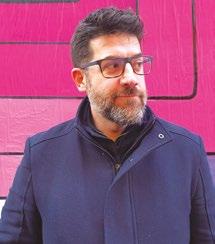
Waelder advierte de otro fenómeno. “Disponemos de espacios físicos limitados y las cosas se mueven cada vez más rápido. Gente a la que le interesa coleccionar arte, igual ya no tiene una
casa en la que pueda empezar a meter un montón de cuadros y esculturas… El espacio digital es totalmente infinito: puedes coleccionar miles de NFT sin que eso te ocupe nada, los puedes cambiar rápidamente si no los quieres… Tienen una cierta fluidez, facilidad de manejo, que no se tiene con otros formatos de obras.”
"A collector, in addition to owning a work, is interested in being able to tell others that he owns it. Nowadays, dissemination is as important as possession. With digital art, you have it right from the start; it's very easy for everyone to know about your entire NFT collection with just one link. I believe that this is attracting, above all, younger collectors, who also have another concept", assures Pau Waelder, art critic, curator and researcher specialising in digital art.
Waelder warns of another phenomenon. "We have limited physical spaces and things are moving faster and faster. People who are interested in collecting art, may no longer have a house in which they can start putting a lot of paintings and sculptures... Digital space is totally infinite: you can collect thousands of NFT without it taking up any space, you can change them quickly if you don't want them... They have a certain fluidity, ease of handling, that you don't have with other formats of works."
Pinturas que corresponden a fragmentos de películas se presentan en la exposición “Macguffin”, de José Fiol, que interpreta el mecanismo narrativo acuñado por Hitchcock en el terreno de la pintura. Los fotogramas originales, que permanecerán ocultos a los ojos del visitante, son la excusa del artista para contar lo que quiere contar. Hasta el 23 de enero.

Paintings that correspond to fragments of films are presented in the exhibition "Macguffin", by José Fiol, who interprets the narrative mechanism conceived by Hitchcock in the field of painting. The original frames, which will remain hidden from the visitor's eyes, are the artist's excuse to tell what he wants to tell. Until 23 January.
galeriafranreus.net Passeig de Mallorca, 4 b. Palma.
Mona Broschár despliega en la exposición “The good, the bad and the sweet” coloridos cuadros de objetos comunes en los que la luz, el volumen y el ritmo son protagonistas. Entre elementos comestibles, objetos inanimados y ramos de flores, la autora reflexiona sobre la dicotomía de lo bueno y lo malo en la sala 3 de L21 Palma. Hasta el 4 de enero.
In the exhibition "The good, the bad and the sweet", Mona Broschár displays colourful paintings of common objects in which light, volume and rhythm are the protagonists. Among edible elements, inanimate objects and bouquets of flowers, the artist reflects on the dichotomy of the good and the bad in room 3 of L21 Palma. Until 4th January.
l21gallery.com
Hermanos García Peñaranda 1ª. Palma.
Con “Instante y memoria” el fotógrafo Rif Spahni se sumerge en el universo mironiano de Son Boter para revelarnos un entorno mágico en el que aún perduran la energía y la alquimia creativas de Joan Miró. La exposición se estructura en tres ámbitos que recogen diferentes miradas complementarias del espacio de Son Boter. Hasta el 11 de junio.

With "Instant and Memory" the photographer Rif Spahni plunges into the Miró universe of Son Boter to reveal a magical environment in which Joan Miró's energy and creative alchemy still survive. The exhibition is structured in three areas that bring together different complementary views of the Son Boter space. Until 11 June.
miromallorca.com/es Carrer de Saridakis, 29. Palma.
Óleos, dibujos, fotografías, estampas e indumentaria de Anglada-Camarasa, para comprender cómo la flor se convirtió en un elemento principal de sus pinturas y cómo las flores dibujaron su vida. Un recorrido que traza el interés creciente del pintor hacia los elementos florales. Hasta el 23 de agosto.
Oil paintings, drawings, photographs, prints and clothing by Anglada-Camarasa, to understand how the flower became a main element in his paintings and how flowers shaped his life. A journey that traces the painter's growing interest in floral elements. Until 23 August.


caixaforum.org
Plaça de Weyler, 3. Palma.


“Dolors Sampol”, comisariada por Bel Font, es una exposición individual de una de las artistas mallorquinas con una narrativa más íntima y personal, Dolors Sampol (Palma 19542020). De sus obras, destacan “su libertad absoluta en la investigación pictórica, por un lado, y una gran capacidad de arriesgarse para hallar la emergencia de los objetos, de las situaciones y de los múltiples significados por el otro” (Biel Mesquida). Desde marzo hasta junio.




"Dolors Sampol", curated by Bel Font, is a solo exhibition of one of the Mallorcan artists with the most intimate and personal narrative, Dolors Sampol (Palma 19542020). Her works stand out for "her absolute freedom in pictorial research, on the one hand, and a great capacity to take risks in order to find the emergence of objects, situations and multiple meanings on the other" (Biel Mesquida). From March to June.
casalsolleric.palma.cat Paseo del Borne. Palma.


Un proyecto expositivo de carácter retrospectivo que explora la relación que mantuvo el artista Jorge Eduardo Eielson (Lima, 1924 – Milán, Italia, 2006) con la literatura (sobre todo la poesía) y con la plástica. “El nudo vertical” examina su producción artística desde finales de los años cincuenta hasta sus últimas obras. Hasta el 2 de abril.
A retrospective exhibition project that explores the relationship that the artist Jorge Eduardo Eielson (Lima, 1924 - Milan, Italy, 2006) maintained with literature (especially poetry) and the plastic arts. "The Vertical Knot" examines his artistic production from the late 1950s to his latest works. Until 2 April.
esbaluard.org Pl. de la Porta de Santa Catalina, 10. Palma.



“Plast Peasures” es la primera exposición individual en España de la artista canadiense Kathryn Macnaughton (Toronto, 1985). La muestra, ubicada en el espacio espacio Pelaires Cabinet, incluye una selección de 10 pinturas abstractas en diferentes formatos y permanecerá abierta hasta el 28 de enero.
"Plast Peasures" is the first solo exhibition in Spain of the Canadian artist Kathryn Macnaughton (Toronto, 1985). The exhibition, located in the Pelaires Cabinet space, includes a selection of 10 abstract paintings in different formats and will remain open until 28 January.


www.pelaires.com Can Verí, 3. Palma
“Chakras y geometrías”, de Rasheed Araeen, ofrece a los visitantes piezas icónicas de diferentes momentos de su dilatada carrera artística, incluidas sus creaciones pictóricas. Performances, pinturas, collages y esculturas de gran tamaño envuelven al espectador con sus formas geométricas y minimalistas complejas. Hasta el 31 de enero.
"Chakras y geometrías", by Rasheed Araeen, offers visitors iconic pieces from different moments in his long artistic career, including his pictorial creations. Performances, paintings, collages and large-scale sculptures envelop the viewer with their complex geometric and minimalist forms. Until 31st January.
barogaleria.com Carrer Can Sanç 13. Palma.
Hay sentimientos universales que no entienden de orígenes ni de edad: la soledad, el miedo al abandono, el deseo de aceptación, la necesidad de afecto… Y hay enfermedades que afloran ante una lesiva gestión de estos. “Petricor”, el documental con trasfondo autobiográfico de la directora Victoria Morell, que en la actualidad se encuentra en ruta de festivales, se sumerge en las tinieblas de la anorexia y bulimia, a través de la historia coral de María Luisa Lara, Cuca Gomila y Neus Serra, mujeres de diferentes generaciones a las que siguió de cerca durante tres años en sus terapias psiquiátricas en el Hospital Son Espases.

Morell, que con 19 años padeció un ingreso hospitalario por un trastorno de conducta alimentaria, utiliza un juego de espejos, de voces –casi sin aliento–, de heridas abiertas, para explicarle al mundo una realidad punzante que “siempre quise dar a conocer” desde un prisma diferente al que estamos acostumbrados: el papel y el peso de la madre trasciende la mera preocupación por lucir un cuerpo normativo. “El vínculo generado con las protagonistas durante este tiempo me ha hecho vivir muy conectada con la enfermedad y eso ha provocado que en algunos momentos mi forma de canalizar el malestar fuera a través de la alimentación porque es mi tendón de Aquiles”, confiesa la autora del largometraje.
“Petricor” iba a ser una película autobiográfica pero “las protagonistas fueron cogiendo mucho peso en la historia y eso, unido a mi pánico a exponerme, hizo que cambiara de opinión”, reconoce la también delegada de la Asociación de Mujeres Cineastas y de Medios Audiovisuales (CIMA) en Baleares. “Sigo teniendo un rechazo
muy grande hacia mi cuerpo y mi imagen que no he podido superar con los años. Es algo que me cuesta y una limitación a la hora de trabajar porque actualmente ejerzo de periodista audiovisual”.
Si bien “Petricor” le ha hecho sentirse “un poco más fuerte” ante la enfermedad, ya que “he podido entender más la dimensión de la patología y eso ha hecho que sea más compasiva conmigo misma”–admite–, también la ha puesto a prueba de forma incesante: “He estado en terapias que me removían porque evidenciaban los mismos sentimientos que yo sentía y tuve que buscar ayuda psicológica”, manifiesta.
El debut de “Petricor” en festivales no está pasando inadvertido. En su paso por el Atlántida Film Fest, su director, Jaume Ripoll, se refirió a este como “uno de los mejores documentales que se han rodado en Mallorca en los últimos años”. Semanas después obtuvo el premio al mejor documental Made in Baleares en el Evolution Mallorca International Film Festival y se ha hecho con el Premio de las Mujeres Cineastas en el festival de Navarra antes de viajar al Festival Internacional de Derechos Humanos de Viena. Asimismo está previsto que participe en la próxima edición de la Bien-
nal Internacional Dona i Cinema, que tendrá lugar en Valencia a principios de 2023, año en que está programado que se estrene en sala comerciales de cine.
Victoria Morell rodará en los próximos meses un corto sobre interrupciones voluntarias del embarazo. Aunque no quiere abandonar el género documental, sigue en búsqueda de un relato que le conmueva: “El mundo está lleno de historias interesantes por contar; ahora tengo que hacer match con una”, concluye.
Victoria Morell, filmmaker of the documentaly "Petricor" made in the Balearic Islands
"I still have a great rejection of my body that I have not been able to overcome over the years"
There are universal feelings that do not understand origins or age: loneliness, fear of abandonment, the desire for acceptance, the need for affection... And there are illnesses that emerge when these feelings are managed in a harmful way. "Petricor", the documentary with autobiographical background by the director Victoria Morell, which is currently on the festival route, plunges into the darkness of anorexia and bulimia, through the choral story of María Luisa Lara, Cuca Gomila and Neus Serra, women from different generations whom she followed closely for three
years in their psychiatric therapies at the Son Espases Hospital.

Morell, who at the age of 19 was admitted to hospital for an eating disorder, uses a play of mirrors, of voicesalmost breathless - of open wounds, to explain to the world a sharp reality that "I always wanted to make known" from a different perspective to the one we are used to: the role and weight of the mother transcends the mere concern to show off a normative body. "The bond generated with the protagonists during this time has made me live very connected to the illness and this has meant that at times my way of channelling my discomfort has been through food, because it is my Achilles tendon", confesses the author of the feature film.
"Petricor" was going to be an autobiographical film, but "the protagonists began to take on a lot of weight in the story and that, together with my panic about exposing myself, made me change my mind", admits the also delegate of the Association of Women Filmmakers and Audiovisual Media (CIMA) in the Balearic Islands. "I still have a great rejection of my body and my image that I have not been able to overcome over the years. It is something I find difficult and a limitation when it comes to working because I am currently working as an audiovisual journalist".
Although "Petricor" has made her feel "a little stronger" in the face of the

disease, as "I have been able to understand more about the dimension of the pathology and this has made me more compassionate with myself", she admits, it has also put her to the test incessantly: "I have been in therapies that shook me because they showed the same feelings that I felt and I had to seek psychological help", she says.
The debut of "Petricor" at festivals is not going unnoticed. At the Atlántida Film Fest, its director, Jaume Ripoll, called it "one of the best documentaries that have been shot in Mallorca in recent years". Weeks later, it won the award for best documentary Made in the Balearic Islands at the Evolution Mallorca International Film Festival and won the Women Filmmakers Award at the Navarra festival before travelling to the International Human Rights Festival in Vienna. It is also scheduled to participate in the next edition of the International Biennial Dona i Cinema, which will take place in Valencia in early 2023, the year in which it is scheduled to be released in commercial cinemas.
In the coming months, Victoria Morell will be shooting a short film on voluntary termination of pregnancy. Although she does not want to abandon the documentary genre, she is still looking for a story that moves her: "The world is full of interesting stories to tell; now I have to match one", she concludes.
Avatar: El sentido del agua Dir. James Cameron. Ciencia ficciónaventuras.

Ambientada más de una década después de la primera película, empieza contando la historia de la familia Sully (Jake, Neytiri y sus hijos), los problemas que los persiguen y las batallas que libran. A partir del 16 de diciembre en Aficine y Cinesa.
El gato con botas: El último deseo Dir. Jared Stern, Sam Levine. Animación.


En su búsqueda, y muy a su pesar, Gato y Kitty contarán con la compañía de un chucho andrajoso y eternamente optimista que jamás deja de hablar, llamado Perro. A partir del 21 de diciembre en Aficine y Cinesa
El peor vecino del mundo Dir. Marc Forster. Tom Hanks, Mariana Treviño. Comedia.

Basada en la novela “Un hombre llamado Ove”, que alcanzó el nº1 en la lista de superventas del New York Times, “El peor vecino del mundo” cuenta la historia de Otto Anderson, un viudo cascarrabias y muy obstinado. 28 de diciembre en Aficine y CineCiutat.
M3GAN Dir. Gerard Johnstone. Allison Williams, Violet McGraw. Drama.

“M3GAN” es una maravilla de la inteligencia artificial, una muñeca programada para ser la mejor compañera de los niños y la mayor aliada de los padres. Su creadora, Gemma, decidirá vincularla al cuidado de su sobrina. 13 de enero en Aficine.
Babylon Dir. Damien Chazelle. Margot Robbie, Brad Pitt. Drama.

Ambientada en Los Ángeles durante los años 20, cuenta una historia de ambición y excesos que recorre la ascensión y caída de múltiples personajes durante una época de decadencia y depravación en Hollywood. 20 de enero en CineCiutat.
The banshees of Inisherin Dir. Martin McDonagh. Colin Farrell, Brendan Gleeson. Drama.

En una isla remota frente a Irlanda, “Almas en pena de Inisherin” cuenta la historia de dos amigos que se encontrarán en un callejón sin salida. Estreno 3 de febrero en CineCiutat.
El triángulo de la tristeza Dir. Ruben Östlund. Harris Dickinson. Comedia-drama.


Carl y Yaya, pareja de modelos e influencers, son invitados a un yate. Los eventos toman un giro cuando se levanta una tormenta que pone en peligro su confort. 17 de febrero en CineCiutat.
Un paso adelante Dir. Cédric Klapisch. Santiago Amigorena, Cédric Klapisch. Comedia-drama.

Élise es una bailarina clásica. Sufre una lesión y le informan que tendrá que dejar de bailar. A partir de ese momento, su vida da un vuelco y tendrá que reconstruirse… Estreno 17 de marzo en Aficine.
John Wick 4 Dir. Chad Stahelski. Keanu Reeves, Rina Sawayama. Acción-thriller.
Cuarta entrega de la franquicia John Wick, un exasesino a sueldo que se ve obligado a regresar al inframundo criminal que había abandonado. Estreno 24 de marzo en Aficine.
Llega a los cines una nueva película de animación basada en el mundo de Super Mario Bros que hará las delicias tanto del público adulto como del familiar. Estreno 31 marzo en Aficine.

Hablar de Mallorca es evocar los valores del paisaje o del turismo. Pocos relacionarán la isla con el mundo de la guitarra, que tópicamente parece reservado a Andalucía. Sin embargo, desde las estatuas de ángeles de la Catedral hasta los grabados del siglo XIX, los instrumentos de cuerda están presentes en la historia mallorquina. En tiempos pasados, y en la actualidad.
Así ocurre con un instrumento propio de la isla: el “guitarró”. Proviene del barroco, es más pequeño que la guitarra actual, cargado con cinco cuerdas. Probablemente esté en el origen de instrumentos parecidos que se extendieron por América, a raíz de la numerosa emigración mallorquina. El “guitarró” no es de concierto, sino esencialmente rítmico. Toni Miranda, uno de los grandes guitarristas de la isla, recuerda que durante una actuación de música tradicional un hombre muy mayor le pidió el instrumento. “Se puso a rascarlo con tanta fuerza que los dedos le sangraban, pero él ponía una cara casi de éxtasis”.

La guitarra de concierto tal como la conocemos no apareció hasta mediados del siglo XIX. En Mallorca, su mejor representante fue la familia Casasnovas de luthiers. Sus guitarras se vendían sobre todo en América. A principios del siglo XX, Bartolomé Calatayud fue un gran concertista de guitarra. Gracias a él visitó la isla el maestro Francisco Tárrega, figura señera de la historia musical.
Calatayud participó en la inauguración
de un local mítico: el Centro de la Guitarra de Palma. De allí partió toda una generación de buenos instrumentistas: Gabriel Estarellas, Manolo Bolao, Joan Bibiloni, Pepe Millán, Toni Miranda…
El Centro de la Guitarra abrió en 1967, y su ubicación en el barrio antiguo hizo que los marinos de la VI Flota que recalaban en Palma llevaran a él nuevas músicas y técnicas. Muchas tendencias modernas nacieron en aquel salón un poco rococó de la calle Montenegro, hoy desaparecido.
Por otro lado, la guitarra eléctrica llegaría a cuentagotas. Artistas como Bonet de Sant Pere ya disponían de buenos instrumentos en los años 50, procedentes del mundo anglosajón. Pero los primeros grupos pop se las arreglaban como podían. Fue así por ejemplo como Nicolás Salom, entonces un joven controlador aéreo y hoy propietario de la cadena de tiendas Musicasa, se fabricó un sistema para electrificar las guitarras de su grupo, los “Teix”: las pastillas Fonik. Un modelo genuinamente mallorquín.
Mallorca he tenido teóricos de la guitarra como Gabriel Rosales (autor del libro “Cábalas con la guitarra”) y mantiene una saga de luthiers destacable: Pepe Mauriz, Pere Fiol, Ernesto Díaz y Antonio Morales, entre muchos otros. Este último fabricó un modelo ya mítico para Paco de Lucía, quien vivió temporadas en Mallorca.
Así que, a veces, también las guitarras hablan de Mallorca aunque no lo sepamos.

To speak of Mallorca is to evoke the values of landscape or tourism. Few would associate the island with the world of the guitar, which topically seems to be reserved for Andalusia. However, from the statues of angels in the Cathedral to 19th century engravings, stringed instruments are present in Mallorcan history. In times past, and in the present day. This is the case with an instrument that is typical of the island: the "guitarró". It comes from the Baroque period, is smaller than today's guitar and has five strings. It is probably the origin of similar instruments that spread to America as a result of the numerous Mallorcan emigrants. The "guitarró" is not a concert instrument, but an essentially rhythmic one. Toni Miranda, one of the island's great guitarists, recalls that during a performance of traditional music, a very old man asked him for the instrument. "He started strumming it so hard that his fingers were bleeding, but he had an almost ecstatic look on his face.
The concert guitar as we know it did not appear until the mid-19th. In Mallorca, its best representative was
the Casasnovas family of luthiers. Their guitars were sold mainly in America. At the beginning of the 20th century, Bartolomé Calatayud was a great concert guitarist. Thanks to him the maestro Francisco Tárrega visited the island.
Calatayud took part in the inauguration of a legendary venue: the Palma Guitar Centre. A whole generation of good instrumentalists came from there: Gabriel Estarellas, Manolo Bolao, Joan Bibiloni, Pepe Millán, Toni Miranda...
The Guitar Centre opened in 1967, and its location in the old quarter meant that the sailors of the VI Fleet who came to Palma brought new music and techniques. Many modern trends were born in that somewhat rococo salon in calle Montenegro, which has now disappeared.
On the other hand, the electric guitar arrived in dribs and drabs. Artists like Bonet de Sant Pere already had good instruments in the 1950s, coming from the Anglo-Saxon world. But the first pop bands managed as best they could. For example, Nicolás Salom, then a young air traffic controller and now owner of the Musicasa chain of shops, made himself a system to electrify the guitars of his group, the "Teix": the Fonik pickups. A
Una de las guitarras eléctricas con las pastillas Fonik que fabricó el padre de Avelino Salom, encargado de Musicasa.
genuinely Mallorcan model.
Mallorca has had guitar theorists such as Gabriel Rosales and maintains a remarkable saga of luthiers: Pepe Mauriz, Pere Fiol, Ernesto Díaz and Antonio Morales, among many others. The latter made a now legendary model for Paco de Lucía, who spent some time in Mallorca.
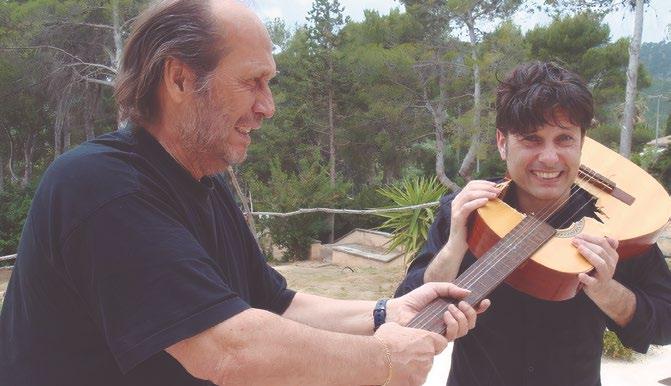
So sometimes guitars also speak of Mallorca, even if we don't know it.


Podemos llenar este artículo de tópicos como después de la tempestad llega la calma. Endless Summer is coming, "no hay mal ni bien que 100 años dure" ... el caso es que tras el invierno anímico en el que hemos estado sumidos estos meses, la cosecha musical no cesa de proporcionarnos inmensas alegrías.
Aquí siempre hemos defendido las propiedades terapéuticas de la música en todas sus formas y para seguir en esa línea, los primeros meses del año 23 del nuevo siglo, vienen cargados de excelentes propuestas de artistas de todo pelaje.
En la parte de los consagrados tenemos al "león de Belfast" , al premio nobel que afirmó que el hombre puso nombre a los animales y a unos neo punkies con un disco que cumple sus bodas de plata.
En el apartado de artistas de nueva generación tenemos al cantautor atlántico Andrés Suárez a los Gorillaz de Damon Albarn.
Pasen, escuchen y vean. Sea lo que sea que el nuevo año nos depare, la música siempre acudirá al rescate.
We can fill this article with clichés such as "after the storm comes the calm". Endless Summer is coming, "no good or evil lasts for 100 years" ... the fact is that after the winter in which we have been submerged these past few months, the musical harvest continues to bring us immense joy.
Here we have always defended the therapeutic properties of music in all its forms, and to continue in this vein, the first months of the 23rd year of the new century are loaded with excellent proposals from all kinds of artists.
Among the established artists we have the "lion of Belfast", the Nobel Prize winner who said that man gave animals their names, and some neo punks with an album that celebrates its silver anniversary.
In the new generation artists section we have the Atlantic singer-songwriter Andrés Suárez and Damon Albarn's Gorillaz.
Come, listen and see. Whatever the new year brings, music will always come to the rescue.

Moving on skiffle es un álbum de Van Morrison en homenaje al skiffle, un género de éxito en Reino Unido en los 50 tras su recorrido en Estados Unidos en los 20. Su pasión por el skiffle se remonta a su infancia. Se trata de una colección de 23 canciones, entre las que se encuentran mensajes sobre la importancia de la libertad y de vivir en tus propios términos, su filosofía de vida. Lanzamiento marzo de 2023
Moving on skiffle is an album by Van Morrison as a tribute to skiffle, a genre that became a hit in the UK in the 1950s after its run in the US in the 1920s. It is a collection of 23 songs, including messages about the importance of freedom and living on your own terms, his philosophy of life. Released March 2023.

Un álbum de Morrissey, el primero tras el fin de su contrato con BMG. Con Andrew Watt implicado como productor y músico, en este segundo aspecto junto a invitados como Chad Smith y Flea de Red Hot Chili Peppers, el exguitarrista del grupo Josh Klinghoffer, Miley Cyrus, Iggy Pop y Jesse Tobias. Lanzamiento febrero de 2023.
An album by Morrissey, the first after the end of his contract with BMG. With Andrew Watt involved as producer and musician, this second appearance features guests Chad Smith and Flea from Red Hot Chili Peppers, former band guitarist Josh Klinghoffer, Miley Cyrus, Iggy Pop and Jesse Tobias. Released February 2023.

Noveno disco de Andrés Suárez. Se trata de una colección de 10 pistas para la que contó en labores de producción con Tato Latorre, Pablo Cebrián y Ricky Falkner. Grabado en los estudios Moraima, Estudio Uno, La Sucursal y Arcadia durante 2022, con músicos como John Parsons, Marino Sáiz, Baldo, Emilio Sáiz y Andrés Litwin. Lanzamiento 24 de febrero de 2023
Ninth album by Andrés Suárez. It is a 10-track collection for which he worked with Tato Latorre, Pablo Cebrián and Ricky Falkner on production. Recorded at Moraima, Estudio Uno, La Sucursal and Arcadia studios during 2022, with musicians such as John Parsons, Marino Sáiz, Baldo, Emilio Sáiz and Andrés Litwin. Release 24 February 2023
Edición 25 aniversario del quinto álbum de Green Day. Contiene el original, un disco con 14 demos inéditas y un concierto inédito grabado el 14 de noviembre de 1997 en Electric Factory. El disco con las demos contiene dos temas inéditos, You irritate me y Tre polka, además de una versión inédita del Alison de Elvis Costello. Lanzamiento: 27 de enero de 2023
The 25th anniversary edition of Green Day's fifth album. It contains the original, a record with 14 previously unreleased demos and a previously unreleased concert recorded on November 14, 1997 at the Electric Factory. The demo disc contains two previously unreleased tracks, You irritate me and Tre polka, plus a previously unreleased version of Elvis Costello's Alison. Release: 27 January 2023

Queen of me es el sexto álbum estudio de Shania Twain, el primero desde Now (2017). Es su debut para el sello Republic Nashville, una división de Republic Records. Se trata de una colección de 12 pistas con avances como Not just a girl, Waking up dreaming y Last day of summer. Lanzamiento 3 de febrero de 2023.

Queen of Me is Shania Twain's sixth studio album, her first since Now (2017). It is her debut for Republic Nashville, a division of Republic Records. It is a 12-track collection with previews including Not just a girl, Waking up dreaming and Last day of summer. Released 3 February 2023
Sam Smith “Gloria"Cuarto álbum de Sam Smith, de 13 pistas. Como avance Love me more. Da continuidad Unholy con Kim Petras, una canción en torno a una sensual escala árabe, en la que denuncia a un marido infiel que deja a su mujer y a sus hijos en casa para divertirse por su cuenta. Como invitado de lujo, además: Ed Sheeran. Lanzamiento: 27 de enero de 2023

Sam Smith's fourth album, a collection of 13 tracks. As a preview Love me more. It is followed by Unholy with Kim Petras, a song about a sensual Arabian stopover, in which he denounces an unfaithful husband who leaves his wife and children at home to have fun on his own. As a special guest, too: Ed Sheeran. Release: 27 January 2023
El músico mallorquín Juanjo Monserrat subió al olimpo de la música latina al irrumpir en el escenario de la gala de los Latin Grammy el pasado 17 de noviembre para recoger el galardón de Mejor Canción Pop por el tema Tacones Rojos. Monserrat compuso el ‘hit’ junto a la estrella colombiana Sebastián Yatra, quien da voz a la canción, así como con Pablo Rous y Manuel Llorente. Los cuatro se mostraron visiblemente emocionados por el reconocimiento en el marco de los Grammy Latinos entregados en Las Vegas.
Además de este Grammy a la mejor canción, Monserrat también compartió un segundo galardón, el de Mejor Álbum Pop por Dharma, el disco de Sebastián Yatra que incluye el éxito Tacones Rojos.

La carrera del mallorquín va a más. En 2021 fichó por la discográfica Sony y ya ha colaborado con artistas de la talla de Becky G o Álvaro Soler, entre otros cantantes, al tiempo que prepara su propio disco. Además, este año acompañó en los escenarios como guitarrista al también mallorquín Rels B llenando estadios en su gira por América.
Cracker island sale a través de Parlophone. Grabado en Londres y LA y producido junto a Greg Kurstin (Paul McCartney, Beck, Foo Fighters, Adele, Pink) y Remi Kabaka Jr. Como primer avance, un tema junto a Thundercat. Dan continuidad New gold con Tame Impala y Bootie Brown, y Baby queen. Además como invitados Stevie Nicks, Adeleye Omotayo, Bad Bunny y Beck. Lanzamiento febrero de 2023

Cracker Island is out via Parlophone. Recorded in London and LA and produced with Greg Kurstin (Paul McCartney, Beck, Foo Fighters, Adele) and Remi Kabaka Jr. The first preview, a track with Thundercat. Continuity is provided by New gold with Tame Impala and Bootie Brown. Plus guest appearances from Stevie Nicks, Bad Bunny and Beck. Released February 2023
Volumen 17 de las Bootleg Series de Bob Dylan. Con un nuevo remix de 2022 de Michael H. Brauer de las once grabaciones originales, que se parece más a cómo se escucharon las canciones cuando los músicos las tocaron originalmente en la sala. También se incluyen 12 tomas descartadas inéditas y versiones alternativas de canciones escritas para Time out of mind. Lanzamiento: 27 de enero de 2023

Volume 17 of the Bob Dylan Bootleg Series. Feat. a new 2022 remix by Michael H. Brauer of the eleven original recordings, which resembles how the songs sounded when the musicians originally played them in the living room. Also included are 12 previously unreleased outtakes and alternate versions of songs written for Time out of mind. Release: 27 January 2023
The Mallorcan musician Juanjo Monserrat rose to the pinnacle of Latin music when he burst onto the stage of the Latin Grammy gala on 17 November to collect the award for Best Pop Song for Tacones Rojos (Red Heels). Monserrat composed the hit together with Colombian star Sebastián Yatra, who provides vocals for the song, as well as Pablo Rous and Manuel Llorente. The four were visibly moved by the recognition at the Latin Grammy Awards in Las Vegas. In addition to this Grammy for Best Song, Monserrat also shared a second award, Best Pop Album for Dharma, the album by Sebastián Yatra that includes the hit Tacones Rojos.
The Mallorcan's career is going from strength to strength. In 2021 he signed with Sony and has already collaborated with artists such as Becky G and Álvaro Soler, among other singers, while preparing his own album. In addition, this year he accompanied Rels B, also from Mallorca, on stage as a guitarist, filling stadiums on his tour in America.
Vilafranca de Bonany, además de melones, siembra cultura. Aquella semilla plantada en 2002 ha eclosionado 20 años después, y de qué manera, al recibir la FIET (Fira de Teatre Infantil i Juvenil de Balears) el Premio Nacional de Artes Escénicas para la Infancia y la Juventud. Jaume Gomila y el reducido grupo de personas que integran Sa Xerxa no estaban locos. “Vimos que esto tenía magia”, recuerda el médico de profesión que ha convertido Vilafranca en toda una revolución de las artes escénicas.
El objetivo era claro: “Acercar el buen teatro a los niños, jóvenes y familias de toda Balears”, al tiempo que “hacer crecer a las compañías de las islas”. Tarea que, como los buenos guisos, requiere de tiempo y cariño. Visitar ferias de la península referentes como FETEN o la Mostra de Igualada, visualizar espectáculos, estar al tanto de las compañías que se mueven en la escena nacional… Sa Xerxa fue consolidando “aquel sueño” que acabó convirtiéndose en un éxito colectivo que ha derivado en la dinamización del panorama teatral de las cuatro islas, porque hoy los proyectos de Sa Xerxa han llenado de magia escenarios de toda Balears.
“Lo importante es cómo se ha ido implicando el pueblo. Con la crisis de 2008 y el recorte de ayudas hicimos de la necesidad virtud”, relata el entusiasta Gomila, agradecido por la aportación vecinal, uno de los grandes recursos de la FIET con más de 200 familias voluntarias. “Acogían a las compañías en sus casas, hacían comidas, recaudaban fondos… La gente que venía de fuera decía: Me acogen en
su casa, si hacen matanza nos regalan unas sobrasadas… Esto añadió valor”.
La solidaridad volvió en la segunda crisis, la de la pandemia, en forma de crowdfunding que, junto con el Premio Nacional, logró salvar la FIET 2022.
“Hay que aprovechar este empujón. El reto ahora es hablar con las instituciones para que asuman la necesidad de mantener esto y dar el siguiente paso: internacionalizar la feria”, reclama Gomila.
Sa Xerxa ha aprendido “que el teatro tiene que ser para todos, descubriendo el valor integrador de la cultura, haciendo imaginar, soñar y divertir a la gente”. Dos décadas en las que ha quedado claro que “esto no era un juego de artificio de dos días; el teatro aporta reflexión y puede tocar cualquier tema sin importar la edad: el ser aceptado, el amor, el dolor, la muerte…”. Como las películas de Pixar, “los más pequeños se quedarán con las emociones, lo visual, la música; mientras que los adultos recordarán las bromas, la carga de profundidad, el trasfondo”.
Vilafranca, the magical story of sowing culture

Vilafranca de Bonany, as well as melons, sows culture. That seed planted in 2002 has blossomed 20 years later, and in what a way, with the FIET (Fira de Teatre Infantil i Juvenil de Balears) receiving the National Award for Performing Arts for Children and Young People. Jaume Gomila and the small group of people who make up Sa Xerxa were not crazy. "We saw that there was magic in this", recalls the doctor who has turned Vilafranca into a revolution in the performing arts.
The objective was clear: "To bring good theatre to children, young people and families all over the Balearic Islands", while at the same time "making the companies of the islands grow". A task that, like a good stew, requires time and care. Visiting important fairs on the peninsula such as FETEN or the Mostra de Igualada, visualising shows, keeping abreast of the companies that are moving on the national stage... Sa Xerxa was consolidating "that dream" that ended up becoming a collective success that has
led to the revitalisation of the theatre scene on the four islands, because today Sa Xerxa's projects have filled stages all over the Balearic Islands with magic.
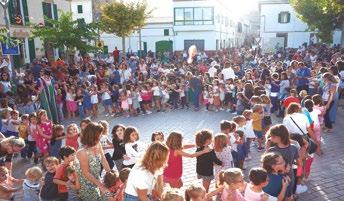
"The important thing is how the people have become involved. With the 2008 crisis and the cutback in funding, we made a virtue out of necessity", says the enthusiastic Gomila, grateful for the neighbourhood's contribution, one of FIET's greatest resources, with more than 200 volunteer families. "They welcomed companies into their homes, made meals, raised funds... People who came from abroad said: 'They welcome me into their home, if they make a slaughter they give us some sobrasadas'... This added value". Solidarity returned in the second crisis, that of the pandemic, in the form of crowdfunding which, together with the National Prize, managed to save FIET 2022.
"We have to take advantage of this boost. The challenge now is to talk to the institutions so that they assume the need to maintain this and take the next step: to internationalise the fair", claims Gomila.
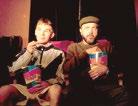
Sa Xerxa has learned "that theatre has to be for everyone, discovering the integrating value of culture, making people imagine, dream and have fun". Two decades in which it has become clear that "this was not a two-day game of fireworks; theatre brings reflection and can touch on any subject regardless of age: acceptance, love, pain, death...". Like Pixar films, "the younger ones will keep the emotions, the visuals, the music; while adults will remember the jokes, the depth, the backstory".
Bernat es un liante, tanto que para cubrir una mentira pide ayuda a su amigo Felip... Este no duda en hacerle el favor. Pero la mentira se hará más grande de lo que se pensaban y eso involucra a sus matrimonios. Del 23 al 26 de diciembre de 2022
Tres generaciones de mujeres, abuela, hija y nieta, abandonadas de una manera u otra, huyen de vidas complicadas pero con la sensación de no tener control sobre su propia existencia.Viernes 13 de enero y sábado 14 (20:00) y domingo 15 (18:00).
Juan Diego Botto aterriza en el Auditórium con “Una noche sin luna”, un recorrido por la vida de Federico García Lorca mezclando su vida con el tiempo presente. Tres funciones: día 20 de enero (21:30), 21 (20:00) y 22 (18:00).

Pere y Blai son tío y sobrino, pero sobre todo dos amigos. Cada día comparten confidencias en el bosque. La obra habla de la muerte, la magia, las discapacidades intelectuales y sociales, de la comunicación sentimental. Del 27 al 29 de enero.
José Sacristán presenta en el Auditórium de Palma “Señora de rojo sobre fondo gris”, una obra teatral que relata una historia de amor en camino desenfrenado hacia la muerte. Sábado 25 de febrero (20:00) y domingo 26 (18:00).

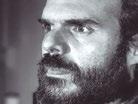


Los Santos Inocentes, de Miguel Delibes, se presenta como un espejo en el que mirarse. Y como todos los espejos, devuelve el reflejo del pasado para poder explicar el presente. Con Javier Gutiérrez, viernes 24 de marzo (21:30) y sábado 25 (20:00).

Los bestsellers se repiten año tras año y la novela contemporánea sigue conquistando a los lectores
V. S. PalmaEl interés por la lectura ha experimentado un despegue, especialmente en Baleares y el Principado de Asturias, desde que en 2020 la pandemia propiciara que “muchas personas retomaran el hábito lector y otras lo descubrieran. En algunos casos, también se ha incrementado y gente que antes leía de forma esporádica ha pasado a leer de forma habitual”, asegura Antonio Mª Ávila, director ejecutivo de la Federación de Gremios de Editores de España.
Temáticas preferidas
“Los libros de ficción para adultos son los que más se venden y, dentro de esta sección, el género que más éxito tiene es la novela”, añade Ávila. Los universos y personajes imaginarios seducen al público en forma, sobre todo, de novela contemporánea, policíaca, de espionaje y romántica. Tentados por infinidad de estímulos digitales y en medio de tanto clic, los jóvenes también se interesan por la lectura, como demuestra el gran crecimiento que experimentó el libro infantil y juvenil en 2021 (un 17,7% más respecto al ejercicio anterior).
En épocas de agitación e incertidumbre como la presente, hay quienes optan por abstraerse, con lecturas “que no les hagan pensar mucho (novela negra, de intriga, suspense, bestsellers…)”, mantiene Micaela, dependienta de la librería palmesana Embat, y quienes “se sienten atraídos por temas de política actuales: tenemos bastantes clientes preocupados por la problemática rusa y de Ucrania, que a su vez muestran
interés por obras de clásicos rusos como Dostoievski y Tolstói”, añade.
búsqueda
Los lectores no solo se decantan por la creación literaria. Entre la divulgación –el 34,9% se declara lectora–, destacan los ejemplares de historia, filosofía, psicología y ciencias sociales y humanidades. Sobre si las obras de autoayuda y estilo de vida son tendencia en momentos de crisis, el director ejecutivo de la Federación de Gremios de Editores argumenta que “no existen datos que permitan corroborarlo. Lo que sí hemos visto es que todos los géneros han experimentado un auge. Estos libros se podrían incluir entre los de divulgación general, que incrementaron su facturación en un 7,2%, pero también los religiosos experimentaron un crecimiento de un 8,9%”. Por su parte, la librera de Embat reconoce que, aunque en menor medida, “siempre hay libros de autoayuda que te piden –y ahora más–, como “El poder del ahora”. En Llibres Colom “también se venden bastante bien los libros de superación personal por los tiempos que corren”, declaran.
La opción low cost triunfa y el libro digital toca techo Los libros de bolsillo siguen su tendencia al alza por quinto año consecutivo. En 2021 se vendieron cerca de 14 millones de ejemplares a un precio medio de 7,59 € y los títulos editados en este formato aumentaron un 7,9%. Por su parte, el libro digital ha perdido lectores por primera vez; el 29,4% de la población lee en este formato frente al 30,3% registrado en 2020.
Interest in reading has taken off, especially in the Balearic Islands and Asturias, since the 2020 pandemic caused "many people to take up the reading habit again and others to discover it. In some cases, it has also increased and people who used to read sporadically have started to read regularly," says Antonio Mª Ávila, executive director of the Spanish Federation of Publishers' Guilds.
"Adult fiction books are the best sellers and, within this section, the most successful genre is the novel," adds Ávila. Imaginary universes and characters seduce the public particularly in the form of contemporary, detective, espionage and romantic novels. Tempted by an infinite number of digital stimuli and in the midst of so many clicks, young people are also interested in reading, as shown by the huge growth in children's and young people's books in 2021 (up 17.7% on the previous year).
In times of upheaval and uncertainty such as the present, there are those who choose to escape, with readings "that don't make them think too much (crime novels, thrillers, suspense, bestsellers...)", says Micaela, sales assistant at the Embat bookshop in Palma, and those who "are attracted by current political issues: we have many customers concerned about the Russian and Ukrainian problems, who in turn are interested in works by Russian classics
Personas que han leído libros por ocio en un trimestre según los temas que suelen leer (en porcentaje).
Novela contemporánea Novela clásica
Historia
Filosofía, psicología Ciencias sociales y humanidades Política y economía Ciencias médicas y naturales Ciencias físicas, químicas, matemáticas e informática Religión, teología Deportes y juegos Artes plásticas y gráficas , fotografía Cine, música, teatro Enciclopedias y diccionarios

Biografías Infantil, juvenil Poesía Cómics e historietas Teatro 02 55 07 51 00 01 53 04
Fuente: Encuesta de hábitos y prácticas culturales en España.
such as Dostoyevsky and Tolstoy", she adds.
Readers are not only interested in literary creation. Among the popular literature - 34.9% say they are readers - they are particularly interested in history, philosophy, psychology and social sciences and humanities. As to whether self-help and lifestyle books are a trend in times of crisis, the executive director of the Federation of Publishers' Guilds argues that "there is no data to corroborate this. What we have seen is that all genres have experienced a boom. These books could be included among the general popular books, which increased their turnover by 7.2%, but also religious books experienced a
34,9 5
growth of 8.9%". For her part, the Embat bookseller acknowledges that, although to a lesser extent, "there are always selfhelp books that are in demand - and now more so - such as "The Power of Now". At Llibres Colom "self-improvement books also sell quite well because of the times we live in", they say.
The low-cost option triumphs and the digital book reaches its peak Paperbacks continue their upward trend for the fifth consecutive year. In 2021, nearly 14 million copies were sold at an average price of €7.59 and the number of titles published in this format increased by 7.9%. On the other hand, digital books have lost readers for the first time; 29.4% of the population read in this format compared to 30.3% in 2020.
Los superventas no sufren cambios: “Hay autores y libros que se repiten todos los años como los más leídos, como los de Ken Follet (saga de “Los pilares de la Tierra”), “La catedral del mar”, de Ildefonso Falcones, o las obras de Carlos Ruiz Zafón. Por supuesto, entre los más demandados se encuentran también los de la saga de Harry Potter de J. K. Rowling”, relata Ávila.



The bestsellers remain unchanged: "There are authors and books that are repeated every year as the most widely read, such as those by Ken Follet (The Pillars of the Earth saga), "The Cathedral of the Sea" by Ildefonso Falcones, or the works of Carlos Ruiz Zafón. Of course, among the most popular are also those of the Harry Potter saga by J.K. Rowling," Ávila says.

Finalista del Premio Anagrama de Ensayo, con este volumen García-Delgado expone su tesis doctoral, “Teoría de la invención”, en la que repasa el proceso por el que las ideas acuden a nuestra mente. ¿Se puede estimular de alguna manera? ¿Es una facultad exclusiva del ser humano?

Galardonado con el Premio Nacional de las Letras Españolas en 2022, por su “excelente escritura”, que “recupera la tradición cervantina con dominio del humor”, Landero cuenta en su último libro una historia de amor divertida y repleta de ironía, con un protagonista ' -Marcial–, al que “no hay que hacerle demasiado caso”.


Karina Sainz Ed. Lumen Ficción
La primera novela de la periodista Karina Sainz, cuya escritura The New York Times califica como “tensa y compleja”, presenta el retrato de una mujer que escapa a todos los estereotipos enfrentada a una situación extrema. Un fenómeno editorial en la literatura en español traducido en veintiséis idiomas.



Una conmovedora odisea de un apicultor entre dos bandos de la guerra del aclamado autor ucraniano de “Muerte con pingüino”, que “examina sin piedad las confusiones inhumanas de nuestros tiempos y el anhelo del hombre común y afectuoso por hallar la racionalidad del mundo natural” (Financial Times).
Feliu Renom Ed. Disset No ficción
Recopilación de ilustraciones que captan el atractivo de los monumentos i territorios de Mallorca dibujados in situ por Feliu Renom durante sus paseos... Un libro que sigue la tradición de las preciosas publicaciones ilustradas de viajeros de otra época que hoy nos permiten percibir la evolución de nuestro paisaje y patrimonio.
La vida de Martin Hill, un joven de gafas negras y redondas de padres divorciados, habla, en tono divertido, de la cara menos conocida del éxito. Tras ser descartado en un casting para hacer de Harry Potter, Martin sufrirá repetidas depresiones con cada nueva entrega de libros y películas.

Tras un año de sucesos, cuando todo parecía haber vuelto a la normalidad, la vida se empeña en ponerle las cosas más difíciles que nunca a la inspectora Indira Ramos que, junto al inspector Iván Moreno, deberá investigar el hallazgo de varios cadáveres en un solar en construcción.

Daniel López sorprende con historias que pasan desapercibidas en medio de la cotidianeidad mediante un relato lleno de emoción y ternura que, a partir de unos hechos aparentemente irrelevantes, describe esplendor y la miseria de la vida humana. Un homenaje a los héroes ocultos.
Layla Martínez invita al lector a adentrarse en una casa habitada por presencias ausentes y ausencias presentes. En una casa encantada, propia de un libro de terror, la autora revisa temas actuales como la desigualdad de clase o la violencia con un trasfondo histórico.
MALLORCA, OTRO TIEMPO… L. Miró, S. Bauza, J. Llodrá y J.M. Martí C. Ed. Dolmen No ficción

Más de 140 fotografías antiguas inéditas de Mallorca acompañadas de textos que ayudan a contextualizarlas. Esta obra, que contribuye a engrosar el acervo cultural y fotográfico de la isla, es fruto del esfuerzo colectivo del grupo Fotos Antiguas de Mallorca (FAM), que cuenta con un fondo de más 12.000 imágenes.




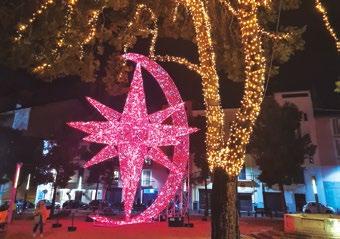


La agenda de diciembre viene marcada por el periodo navideño. Unas fechas muy especiales en las que disfrutar de las tradiciones y de la magia tan característica de esta época del año.
La visita a los belenes es una de las citas más concurridas y tradicionales de las fiestas. En Palma se puede visitar el Belén Fundació Bartolomé March, el de la Misericordia, Cort, el Belén del Consell de Mallorca o el de Fundació Sa Nostra, entre otros.


Los mercadillos son una buena opción a la hora de comprar los regalos de Navidad. En Palma, un total de 194 puestos permanecerán abiertos hasta el 6 de enero de 2023 en horario de 10:00 a 21:00 en plaza de España, Mayor, de la Puerta Pintada, la Rambla y Vía Roma.
Los más pequeños tienen hasta el 4 de enero para depositar sus cartas a los Reyes Magos en la Bústia Reial instalada en el vestíbulo de Cort.
15
El Christmas Market de Puerto Portals enciende sus luces
del 15 de diciembre al 7 de enero con más de cuarenta casetas de madera decoradas con guirnaldas de luces y abetos.
El concierto de Navidad de las corales de la UIB en el Auditorium de Palma propone una historia de melodías llenas de recuerdos, reflexiones, alegría e ilusión. A las 12:30.
Concert de Nadal a cargo de los Coros del Teatre Principal. La Sala Gran acoge un espectáculo escénico donde la música coral y los villancicos serán protagonistas. A las 20:00 en el Teatre Principal.
Max Teatro Musical presenta Rapunzel, el musical, un espectáculo familiar en el Teatre Sa Teulera de Andratx a partir de las 18:00.
JazzaCalvià Big band presenta: Jazz' Nadal! a las 20:00. Entrada gratuita, reservas en jazzacalvia@gmail.com o cultura@calvia.com.
Concierto de Pedro Borràs, con canciones de Bob Marley, Jarabe de Palo, Queen, Los Ronaldos, etc. A las 20:00 en

el Auditòrium sa Màniga de Cala Millor. Entradas, 2 euros.
25
Las iglesias de Mallorca acogen la voz angelical de la sibila el 24 de diciembre. Vestido con capa ancha de colores brillantes, un velo y una espada, este personaje anuncia el fin del mundo y el nacimiento de Jesús.
Agustín 'El Casta' regresa al Auditorium de Palma de Mallorca con su especial de Navidad 2022. Un clásico de la agenda navideña en Mallorca que ofrecerá funciones diarias hasta el 1 de enero.
26
Vuelve la FNG San Silvestre de Palma, con salida y meta en el parking del Castell de Bellver a las 11:00. El recorrido es por pista y habrá 2 distancias: 10 km (dos vueltas al recorrido) y 5km.
Espectáculo teatral Sofá, peluca y panades. Última comedia de Diabéticas Aceleradas. En el Teatre Principal de Inca a las 19:00.
27
El Gran Cassanyes y Marie de la Mer, un espectáculo de magia visual que combina varias disciplinas de las artes escénicas para poder ofrecer toda una experiencia escénica. Teatre Principal de Inca, 19:00.
28
Escape City por Sant Llorenç des Cardassar a las 16:00 para niños y niñas a partir de 6º de Primaria. Al finalizar,
tendrá lugar una chocolatada con ensaimadas para los participantes.
El Dúo de Arpa y Guitarra presenta un programa que busca reflejar la riqueza de las culturas latinoamericanas y europeas, a través de estos dos instrumentos tan universales. En CaixaForum Palma, a las 19:00.
El Auditòrium sa Màniga de Cala Millor acoge la obra “Zona inundable”, de Marta Barceló. Un espectáculo a partir de las inundaciones de Sant Llorenç, a las 20:00.
La Festa de l’Estendard arranca el 30 de diciembre a las 19:30 en la Iglesia de Sant Miquel, con ofrenda floral en Plaza de España a las 20:00. El 31 a las 10:15 tendrá lugar la colocación de l' Estendard Reial de la Conquista de Mallorca en la Plaza de Cort, posterior misa en la Seu y a las 12:00, representación de La Colcada.
La última noche del año pone el broche de oro a 2022 con las 12 campanadas del 31 de diciembre. Una noche en la que cada uno elige cuánto alargar la celebración.
En Alcúdia, la Festa de la Nit de cap d’Any programa a partir de las 23:45 las campanadas en la Porta des Moll. Posterior fiesta con el grupo Val 9 y música con Dj Tommy.
Gran concierto de año nuevo de la mano de la Strauss Festival Orchestra. La extraordinaria gira que ha conquistado a toda Europa llega al escenario del Auditorium de Palma. A partir de las 21:00.
Proyección de la película de animación Petzi i la mar salada en el Teatre de Manacor a partir de las 18:00. Accesible para personas con movilidad reducida.
Los Reyes Magos de Oriente llegan a Mallorca cargados de regalos. El recorrido de Sus Majestades de Oriente en Palma sale del Moll Vell a partir de las 18:00 la avenida de Antoni Maura, paseo del Borne, plaza del Rey Juan Carlos I, calle de la Unión, la Rambla, calle Barón de Pinopar, avenida de Alemania, vía Roma, calle del Obispo Campins, calle de Rubén Dario, paseo de Mallorca, avenida de Jaime III, plaza del Rey Juan Carlos I.

Ara Malikian presenta su nueva gira mundial “The Ara Malikian World Tour” en el escenario de Trui Teatre en dos sesiones diferentes: el viernes, 6 de enero, a las 21:00 y el sábado 7 a las 12:00.
La Adoració dels Tres Reis d’Orient alcanza su 38a Edición el viernes 6 de enero a les 11:30 en Ses Voltes.
7
Rufus T. Firefly acerca su último trabajo a la sala Es Gremi de Palma, dentro del ciclo Mallorca Live Nights el 7 de enero de 2023 a las 22:00.

Musical La Bella Durmiente en el Teatre Sa Teulera de Andratx. Un espectáculo familiar de Rafel Brunet que dará comienzo a las 18:00.
Fantasía, Frozen, El Libro de la Selva o El Rey León. En el Auditorium de Palma a las 18:00.
Fiesta acuática de Navidad en el polideportivo Germans Escalas y su piscina. Será de 10:30 a 13:30.
Obra teatral Tocar mare. Una comedia de Marta Barceló dirigida por Jordi Casanovas. Teatre Principal de Inca, a las 19:00.
Walt Disney in Concert - Hollywood Symphony Orchestra propone un concierto sinfónico que revivirá décadas
“7 agulles per la bombolla”, proyección de la comedia de Pau Pascual que narra la historia de una microsociedad utópica ambientada en las possesions mallorquinas. A las 19:00 en la sala de actos
Los Reyes Magos, en Palma. Foto: Cort.Después del éxito obtenido vuelve Miss Tupper Sex. A partir de su libro homónimo, Pilar Ordóñez crea un tronchante monólogo de educación sexual. En el Auditorium, días 13 (21:00) y 14 (19:00).
El Torneig de Dramatúrgia, que llega a su novena edición, tendrá lugar los días 13, 14 y 21 de enero en el Mar i Terra, con la participación de Miquel Àngel Raió, Marina Salas, Aura Foguet y Pau Coya.
15
Les músiques de Sant Antoni II llega al Teatre i Auditori de Manacor a las 18:30. Con la Banda de Música de Manacor y la Agrupació Folklòrica Sa Torre.
16
Sant Antoni es la fiesta popular más esperada en los municipios de Manacor, Sa Pobla y Artà. Es en su víspera, el 16 de enero, cuando la gente sale a la calle para disfrutar de los foguerons, torrar llonganissa, beber hierbas y bailar al ritmo de las batucadas y los correfocs. El día 17 continúa la fiesta con las Beneïdes de Sant Antoni, donde las carrozas y los desfiles de

animales, que van a bendecir a su patrón, son los grandes protagonistas.
El frío de la noche del 19 de enero no frena a los palmesanos. En esta víspera se sale a la calle para conmemorar al patrón de Ciutat y se hace de la forma más festiva: con la Revetla de Sant Sebastià. Durante este día las calles de Palma se inundan de barbacoas y de gente que quiere pasar la velada rodeado de amigos, torrando y disfrutando de la música en directo que hay en la mayoría de plazas.
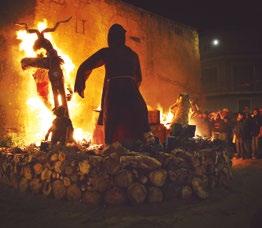
El mejor evento cinematográfico para todos los que aman el mar, con grandes aventuras oceánicas y documentales de nivel mundial llega a Ocimax Palma a las 20:00: El International Ocean Film Tour.

La Orquesta Sinfónica de Illes Balears presenta “Desde la otra orilla” en Trui Teatre a las 20:00. Con Marco Mezquida Trio y la dirección de Pablo Mielgo.

Del 25 al 29 de enero se celebra la 32ª edición de la
Las calles de Sa Pobla se engalanan para vivir las fiestas de Sant Antoni, que el 16 llegan a su punto álgido con el Piromusical durante la noche de la revetla.
Challenge Ciclista Mallorca, con la disputa de sus cinco trofeos. Este año, podrá seguirse en directo en Eurosport y Teledeporte.
26
Un gran canto a la libertad individual y colectiva dirigida por Àngel Llàcer y Manu Guix. Una atrevida puesta en escena, sorprendentes coreografías y exuberante diseño de vestuario. Varias funciones del 26 al 29 en el Auditorium.
28
La compañía valenciana Taiat Dansa pone en escena su últi-
ma producción: Man Ray, que trasciende la obra del icónico fotógrafo estadounidense. En el Teatre Principal, a partir de las 20:00.
Proyección de “el poder de les paraules”, un documental sobre Antonia Vicens en el Teatre Principal de Santanyí, a las 19:00. Entrada gratuita.
Proyección de la película de animación de Disney “Encanto” en el Teatre Principal de Santanyí a partir de las 18:00.
“Grúmic, un somni de Tardor”, de la compañía La Fornal, es

la obra teatral para toda la familia que se presenta en el Auditòrium sa Màniga de Cala Millor a las 18:00.
Inca acoge la fiesta familiar “Grinchfest”, un proyecto social, verde y de proximidad de la mano de Il·Imitados. Actividades familiares, música en directo, zona gastronómica al aire libre y muchas sorpresas más. Plaza de España 16:00.
El ciclo “Por siempre eterno” ofrece, en el Auditórium de Palma, a partir de las 20:00, la música de Leopold Hager (director) y los artistas del Festival de Salzburgo.
men están en tu cabeza la voz de la vergüenza, el miedo, los agobios, la impaciencia… A las 21:00
"The great songs of Dire Straits" es el nuevo espectáculo musical de Óscar Rosende y su nueva banda Great Straits, en el que rinde homenaje a la exitosa carrera musical de Dire Straits. Auditórium de Palma, 21:00.
Después de su exitosa gira “Viva la vida; anniversary tour”, rindiendo homenaje al disco más icónico de Coldplay, vuelve su banda tributo más aclamada por la crítica. Sábado, 4 de febrero a las 20:00 en Trui Teatre.
Jaime Caravaca llega con su Experiencia Cómica Definitiva a Rívoli Aficine a partir de las 22:00. Humor al límite, con conciencia social, grandes dosis de improvisación, interacción y textos depurados.
Ángel Martín aterriza en el Trui Teatre de Palma con su nuevo espectáculo: “Punto para los locos”. Lo único que nos diferencia no es si estás o no estás loco, sino a qué volu-
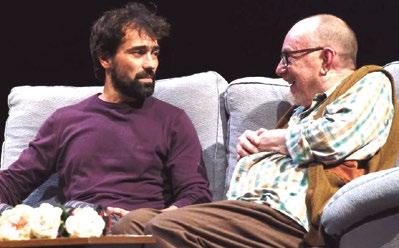

Escalar un gegant es una tragicomedia ligera con gusto dulce y agrio, que investiga las relaciones padre-hijo (y en general familiares). La obra, coproducida por el Teatre Principal de Palma, llega al Teatre de Bunyola a las 20:00.
Del 6 al 8 de febrero, el Velódromo de Palma acoge HORECA Baleares, que se ha consolidado como el evento para profesionales del sector HORECA (hostelería, restauración y catering).
Javi Durán trae Fracashow, un espectáculo que combina standup comedy con audiovisuales para hacer pasar una experiencia que roza el delirio, la épica y lo anticonstitucional.
En Rívoli Aficine Palma a las 22:00.
11
La energía de Alice Wonder llega a la sala Es Gremi de Palma el próximo 11 de febrero de 2023 de la mano de Mallorca Live Nights. Será a las 22:00.

18
El ciclo Pequeños Cinéfilos de CaixaForum Palma programa “Las aventuras de Pat y Mat”, quienes siempre despliegan su energía y, sobre todo, su imaginación, para encontrar
la manera más sorprendente de resolver un problema. A las 18:00.
La Bohème de G. Puccini, enmarcada dentro de la XXXVII Temporada d'Òpera del Teatre Principal, ofrecerá varias funciones del 20 al 24 de febrero.
José Sacristán presenta en el Auditorium de Palma “Señora de rojo sobre fondo gris”,
una obra teatral que relata una historia de amor en camino desenfrenado hacia la muerte. Sábado 25 (20:00) y domingo 26 (18:00).
Mallorca, Menorca, Eivissa y Formentera celebran cada 1 de marzo el Día de las Illes Balears, con actividades para conmemorar el día de la comunidad autónoma.

Estrella Morente actuará en la Gala Inaugural del Festival Paco de Lucía, Palma Flamenca. Será en el Teatre Principal de Palma a partir de las 20:00. El festival se desarrolla del 1 al 5 de marzo.
aniversario del Devil´s Groove Metal Fest 2023, con los conciertos de Evil Impulse, Oeste, y Rise on Fire.
El ciclo pequeños cinéfilos de CaixaForum Palma proyecta “Las aventuras de Topito (Krtek)”, película sin diálogos para el público infantil a las 18:00.
Los creadores de History of Rock regresan con nuevo show, nuevo repertorio, nuevas canciones y nueva puesta en escena. Un espectáculo impactante y atronador. Auditórium, 19:00.
Factoria de So, en Santa Maria del Camí, acoge el quinto
Rock Star for Kids, un espectáculo pensado para que los más pequeños de la familia puedan sumergirse y conocer la Historia del Rock español. 12:30 en Trui Teatre.
La Spartan Race vuelve a Mallorca, una experiencia Spartan al máximo nivel. Un
Estrella Morente. ,..__,,

evento en el mejor entorno natural, donde se reunirán miles de espartanos llegados de toda Europa.

Calvià acoge una nueva edición del Galatzó Trail 2023, una competición deportiva que discurre íntegramente por la Finca Pública de Es Galatzó.
Conferencia “La figura humana en el mundo antiguo: del ídolo a la estatua”, a partir de las 18:00 en CaixaForum Palma a cargo de Carmen Sánchez Fernández.
26
CineCiutat Nins, un ciclo de cine familiar que acerca a los más pequeños el filme “L'illa dels ocells” en CineCiutat Palma.
30
La trágica historia de Hamlet, príncipe de Dinamarca, una de las obras más célebres de Shakespeare, se retransmite en Ocimax Palma a partir de las 19:15.
30ª Caixabank Mitja Marató Ciutat de Palma, que tendrá salida en Avenida Antoni Maura a partir de las 15:00, con llegada al Parc de la Mar.
ABRIL
6
en Mallorca en unas jornadas cargadas de procesiones religiosas.
9
En el Diumenge de l'Àngel 2023, los mallorquines suelen reunirse en el Castillo Bellver para celebrar este festival que se originó en el siglo XV.
12
La Cenicienta del coreógrafo fundador de The Royal Ballet, Frederick Ashton, celebra su 75º aniversario. Se puede ver en directo desde la Royal Opera House de Londres en Ocimax Palma a las 20:15.
22
Pablo Moreno, hijo de las canciones de Serrat, Camarón, Antonio Vega o Alejandro Sanz, entre otros, actúa en el Teatrèmol de Palma a partir de las 21:00.
27
Los días 6, 7 y 10 de abril (Jueves y Viernes Santo y Lunes de Pascua) marcan la festividad de Semana Santa

Magaluf se prepara para vivir su media maratón por las calles del municipio donde se darán cita centenares de corredores de 18:00 a 21:00.
Del 27 al 30 de abril Palma acoge una nueva edición de la Palma International Boat Show, una de las citas imprescindibles del sector náutico.

Los monólogos de la vagina es una comedia sobre las mujeres y su sexualidad, los tabúes sociales, la represión y la incultura sexual. En el Auditórium de Palma a las 21:30.
Del 27 al 30 de abril Palma acoge una nueva edición de la Palma International Boat Show.

La de 2022 era la primera temporada de la ‘nueva normalidad’ y se presentaba con numerosos interrogantes.
El balance final deja, en lo positivo, una temporada algo más larga, con ocupaciones como en 2019 y sobre todo con un mayor gasto turístico. La actividad ya empezó algo antes con un mayo muy interesante, ocupaciones hoteleras por encima del 90% de media en junio, julio, agosto y septiembre, y actividad turística notable en octubre y noviembre. El gasto turístico ha superado con creces al de 2019 -año récord- gracias al sector lujo y al incremento de precios.
En lo negativo, la sensación de saturación que se ha percibido, un asunto que ha vuelto a la agenda política. Junto a la saturación, el lastre del aumento desbocado de los precios empezando por los energéticos, lo que ha lastrado las cuentas de resultados.
Con todo, el balance del sector es positivo a sabiendas de que Balears cerrará el año con casi 17 millones de visitantes en una temporada algo más larga, con mucho empleo y con la vuelta a una actividad prácticamente parada en los dos últimos años.
The 2022 season was the first of the 'new normality' and was presented with numerous uncertainties. The final balance leaves, on the positive side, a somewhat longer season, with occupancies as in 2019 and above all with higher tourist spending. Activity started earlier with a very interesting May, occupancies above 90% from June to September and notable tourist activity in October and November. Tourist spending has far exceeded 2019 thanks to the luxury sector and price increases.
On the negative side, the perceived feeling of saturation, an issue that has returned to the political agenda. Along with the saturation, the burden of the unbridled increase in prices, starting with energy prices, has weighed down the income statement.
Nevertheless, the sector's balance sheet is positive in the knowledge that the Balearic Islands will close the year with almost 17 million visitors in a slightly longer season, with a lot of employment and with the return to an activity that has been practically at a standstill for the last two years.
Balears cerró octubre con 34.900 personas sin trabajo, un -5,3% respecto al mes anterior. Son datos del INE, pero la EPA también refuerza que Balears ha ofrecido en 2022 los mejores datos de empleo del país con una tasa de desempleo del 5,8% y 557.781 registrados en la Seguridad Social en el tercer trimestre. Un 12,67% ha sido la tasa estatal. Sin embargo, el incremento de precios se presenta como un elemento de gran preocupación y que incluye en el lindar de la pobreza a personas con un empleo. Las facturas de electricidad y gas no han hecho más que dispararse. Y con ello, la alimentación y todo tipo de productos.
La tasa interanual del IPC ha fluctuado en función de las subidas y bajadas del precio de la luz, con picos como el de junio del 9,7%. Desde agosto, el precio de la energía ha descendido levemente, lo que ha acabado dejando el dato de noviembre -último conocido al cierre de este Anuario- en el 7,3% en Balears.
The Balearic Islands closed October with 34,900 people unemployed, -5.3% compared to the previous month. These are INE data, but the EPA also reinforces that the Balearic Islands has offered in 2022 the best employment data in the country with an unemployment rate of only 5.8% and 557,781 registered in the Social Security in the third quarter. The national rate was 12.67%.

These figures alone would allow a better winter for more people. However, the increase in prices is an element of great concern and includes people in employment on the poverty line.
Since the start of the war, electricity and gas bills have been skyrocketing. And with it, food and all kinds of other products.
The year-on-year rate of the CPI has fluctuated according to the rises and falls in the price of electricity, with peaks such as June's 9.7%.
Since August, the price of energy has fallen slightly, which has ended up leaving the November figure - the last one known at the close of this Yearbook - at 7.3% in the Balearic Islands.
Si nada o nadie lo remedia, Balears se convertirá en solo 15 años en un paraíso abarrotado. Según una proyección de población publicada en octubre por el INE, Balears es la Comunidad que más aumentará su población en 15 años en relación a su tamaño. El informe habla de un aumento del 25% si se mantuviera la tendencia demográfica actual.
Así, en 2037 el archipiélago alcanzaría una población de 1,5 millones, a los que habría que sumar los turistas. El dato ha puesto en alerta a las autoridades y a los colectivos que defienden la conservación del territorio hasta donde sea posible.
El discurso más radical ha devuelto el mensaje de la turismofobia, el de la limitación de coches de alquiler y el de la prohibición de vender inmuebles a extranjeros.
Todo esto mientras no se observa ningún movimiento público para adecuar las infraestructuras por si el pronóstico se cumple. La única medida contra el colapso ha entrado en vigor en noviembre y por ahora ha causado más problemas que soluciones: el polémico carril BUS-VAO.
The Balearic Islands will increase its population by 25% in 15 years
The Balearic Islands will become an overcrowded paradise in just 15 years. According to a population projection published in October by the INE, the Balearic Islands is the region whose population will increase the most in 15 years in relation to its size. The report speaks of a 25% increase if the current demographic trend were to continue.
Thus, in 2037 the archipelago would reach a population of 1.5 million. This is only for residents, to which tourists should be added. This figure has alerted the authorities and groups that defend the conservation of the territory as far as possible.
The most radical discourse has returned the message of tourism-phobia, the limitation of rental cars and the ban on selling property to foreigners. All this while there is no public movement to adapt the infrastructures in case the forecast comes true. The only measure against traffic congestion came into force in November and so far it has caused more problems than solutions: the controversial HOV bus lane.
Los Presupuestos Generales del Estado para 2023 contemplan el Régimen Especial Balear (REB) que las islas llevaban años esperando sin respuesta, especialmente en su parte fiscal.
Esto es precisamente lo que aprobó en octubre el Consejo de Ministros con rango de Ley.
Se recoge íntegramente el texto del decreto ley de 2019 y supone una reserva anual de inversiones por parte del Estado que supondrá rebajas del 90% en el impuesto de sociedades y en el impuesto de la renta de no residentes para inversiones que fomenten la actividad productiva.
También habrá subvenciones de entre un 10% y un 20% para bienes producidos en Balears, lo cual debe beneficiar a la industria, la ganadería, la pesca y la actividad industrial.
El Govern confía que estas medidas movilicen 350 millones en la economía balear.
La polémica llegó días después del anuncio cuando se conoció que estas medidas tienen fecha de caducidad: 2028. Habrá que negociar la renovación a partir de entonces.
Los PGE para 2023 también prevén una partida de 20 millones para el tranvía de Palma.
The General State Budget for 2023 includes the Balearic Islands Special Regime (REB), which the islands have been waiting for years without a response, especially in its fiscal part.
This is precisely what the Council of Ministers approved in October with the status of law.
The text of the 2019 decree law is taken up in its entirety and involves an annual investment reserve on the part of the State that will entail reductions of 90% in corporate tax and non-resident income tax for investments that promote productive activity.
There will also be subsidies of between 10% and 20% for goods produced in the Balearic Islands, which should benefit industry, livestock, fishing and industrial activity.
The government hopes that these measures will mobilise 350 million euros in the Balearic economy.

Controversy arose days after the announcement when it became known that these measures have an expiry date: 2028. Renewal will have to be negotiated after that date.
The PGE for 2023 also foresees an allocation of 20 million for the Palma tramway.
A pesar de que Putin desmentía cualquier intención belicista, el 22 de febrero empezaron los ataques y la invasión de Rusia en Ucrania. Los aliados se posicionaron enseguida al lado del presidente ucraniano enviando armas y aplicando fuertes sanciones comerciales a Rusia. Enseguida Putin reaccionó recortando el suministro energético.
A día de hoy, es imposible cuantificar el número de víctimas, pero a los 6 meses de conflicto se daban por seguros más de 4 millones de desplazados, más de 50.000 soldados muertos y más de 10.000 civiles fallecidos.
En abril, el FBI conjuntamente con la Guardia Civil se incautaron en el astillero de Palma del yate de lujo ‘Tango’, de 78 metros de eslora y valorado en 90 millones, propiedad del multimillonario ruso Viktor Vekselberg. Los agentes registraron la embarcación e intervinieron numerosa documentación así como dispositivos informáticos.
Despite Putin's denials of any bellicose intentions, Russia's attacks and invasion of Ukraine began on 22 February. The allies immediately sided with the Ukrainian president by sending arms and applying strong trade sanctions against Russia. Putin immediately reacted by cutting energy supplies.

To date, it is impossible to quantify the number of casualties, but six months into the conflict more than 4 million displaced persons, more than 50,000 soldiers killed and more than 10,000 civilians killed were considered certain.
In April, the FBI together with the Guardia Civil seized the 78-metre luxury yacht 'Tango', worth 90 million dollars, owned by Russian billionaire Viktor Vekselberg, at the Palma shipyard. The agents searched the boat and seized numerous documents and computer devices.

A instancias del juzgado que investiga la presunta contaminación ilegal de los vertidos de aguas gestionados por EMAYA, la Fiscalía de Medio Ambiente, el Instituto Español de Oceanografía y el Instituto Geológico y Minero de España elaboraron varios informes.
Sus conclusiones, en febrero, son demoledoras: "Existe evidencia más que suficiente para afirmar que los vertidos de aguas residuales de los emisarios en la bahía de Palma están implicados en el profundo deterioro mostrado por el hábitat en la zona".
Otro estudio encontró en el lecho marino hasta 13 metales pesados en altas concentraciones. También lo achacó a los vertidos de EMAYA.
La fiscalía concluyó que la red de bombeo, depuración y vertido se lleva a cabo con un sistema obsoleto.
At the request of the court investigating the alleged illegal contamination of water discharges managed by EMAYA, the Environmental Prosecutor's Office, the Spanish Institute of Oceanography and the Spanish Geological and Mining Institute produced reports on the matter.
Their conclusions were released in February and are devastating: "There is more than enough evidence to affirm that the wastewater discharges from the outfalls in the Bay of Palma are involved in the profound deterioration shown by the habitat in the area".
Another study found up to 13 heavy metals in high concentrations on the seabed. It also blamed it on EMAYA's discharges.
The prosecution concluded that the pumping, purification and discharge network is carried out with an obsolete system.
EEUU se incauta en Palma del yate de un oligarca ruso


Just in front of the beach. The trendy gastrobeach! Maria 5 combines a high quality food offer, amazing sunsets on Camp de Mar beach, cocktails and live music against the backdrop of the Mediterranean.
maria5.com maria5beach
In the centre of Palma, with a cosy and elegant atmosphere. Boira offers a gastronomic proposal based on traditional Mediterranean cuisine, with fresh, seasonal products and the best flavours of the land.

restaurantboira.com restauranteboira
The 5’S restaurant invites you to enjoy haute cuisine with market products of the highest quality. Delicious dishes that will transport you to live extraordinary experiences.
sonpenya.com sonpenya
A estas alturas queda muy poco por descubrir del tablero de principales candidatos que optarán a la presidencia del Govern en las autonómicas de mayo de 2023. Dos mujeres son las que se reparten todas las posibilidades.
En el PSIB, Francina Armengol ya ha anunciado su intención de repetir y optar a presidir el Govern durante tres legislaturas, 12 años consecutivos.
Tras la dimisión de Biel Company, el PP balear se ha entregado a Marga Prohens y su proyecto, el del partido más votado en las últimas autonómicas y que aspira a alcanzar los 30 diputados que marcan la mayoría absoluta. Si Prohens mira a su derecha se encontrará a Jorge Campos quien, a falta de confirmación -se produciría en enero-, será de nuevo el candidato de VOX. Si gira hacia la izquierda se encontraría con Pep Melià, prácticamente seguro candidato de El Pi.

Si Armengol necesita apoyos, hoy ya sabe con quién hablar: Antònia Jover será la candidata a la Presidencia del Govern por Podemos. Més per Mallorca también tiene ya decidido su candidato: Lluís Apesteguia se impuso en las primarias.

At this point there is very little left to discover about the main candidates who will opt for the presidency of the Govern in the regional elections of May 2023. Two women are the ones who share all the possibilities.In the PSIB, Francina Armengol has already announced her intention to run for the presidency of the Govern for three legislatures, 12 consecutive years. Following the resignation of Biel Company, the Balearic PP has turned to Marga Prohens and her project, that of the party with the most votes in the last elections and which aspires to reach the 30 deputies that mark the absolute majority. If Prohens looks to her right, she will find Jorge Campos, who, pending confirmation will once again be the VOX candidate. If she turns to the left, she will find Pep Melià, practically certain to be El Pi's candidate. If Armengol needs support, today she already knows who to talk to: Antònia Jover will be Podemos' candidate for the Presidency of the Government. Més per Mallorca also has its candidate already decided: Lluís Apesteguia won in the primaries.
El Govern recibirá las competencias de Costas el próximo verano, una reclamación histórica y una luz de esperanza para los chiringuitos amenazados de cierre.
Primero fueron los concesionarios de los chiringuitos ubicados en la Ses Casetes des Capellans, Can Gavella, Ponderosa Beach y Olimpia Opa & Oma. Después, Can Lluc, Cala Deià y, finalmente, El Bungalow y El Peñón. Todos están en el punto de mira. El Bungalow y El Peñón ya han recibido la notificación que les obliga a demoler sus instalaciones. El caso de El Bungalow es muy llamativo porque la edificación cuenta con más de 100 años. El 6 de noviembre, centenares de personas se concentraron para protestar contra el cierre y pidiendo una catalogación especial que le proteja del derrumbe.
Threatened beach bars are hoping for a miracle
The Govern will receive the competences of Costas next summer, a historic claim and a glimmer of hope for the beach bars threatened with closure.

First came the concessionaires of the beach bars at Ses Casetes des Capellans, Can Gavella, Ponderosa Beach and Olimpia Opa & Oma. Then, Can Lluc, Cala Deià and, finally, El Bungalow and El Peñón. All of them are in the spotlight. El Bungalow and El Peñón have already received the notification forcing them to demolish their facilities.
The case of El Bungalow is very striking because the building is more than 100 years old. On 6 November, hundreds of people rallied to protest against the closure and called for a special classification to protect it from demolition.

Un momento del juicio del ‘Caso Cursach’.
Insólito final para el ‘Caso Cursach’. Tras decretarse la absolución de Cursach, Sbert y casi todos los policías locales de Palma sentados en el banquillo, en su alegato final el fiscal anticorrupción Tomás Herranz acabó pidiendo perdón a los acusados por la ‘injusticia’ vivida. Y lo hizo entre lágrimas y sollozos. Se ganó el aplauso de acusados y abogados. “Un gran fracaso de la justicia”, dijo.
La fiscalía pide ahora ampliar las investigaciones por coacciones y detención ilegal contra Manuel Penalva, Miguel Ángel Subirán y los inspectores del grupo de Blanqueo de la Policía Nacional que participaron en la instrucción.
El juez instructor Manuel Penalva y el fiscal anticorrupción Miguel Ángel Subirán dirigieron lo que parecía ser el mayor escándalo de corrupción destapado en Baleares. La declaración de los testigos ha sido clave. La mayoría de ellos se han desdicho o se han declarado amnésicos o desmemoriados. Nadie recuerda nada y muchos dicen que Subirán dirigió sus declaraciones. Tras escuchar a 106 testigos llegó la cascada de retiradas de cargos.
Cursach case: the prosecution apologises to those acquitted for he "injustice" experienced
Unusual end to the 'Cursach case'. After the acquittal of Cursach, Sbert and almost all the local police officers of Palma sitting in the dock, in his final plea the anti-corruption prosecutor Tomás Herranz ended up apologising to the defendants for the 'injustice' experienced. And he did so amid tears and sobs. He won the applause of defendants and lawyers. "A great failure of justice," he said.
The prosecutor's office is now asking to extend the investigations for coercion and illegal detention against Manuel Penalva, Miguel Ángel Subirán and the inspectors of the laundering group of the National Police who participated in the investigation.
The investigating judge Manuel Penalva and the anti-corruption prosecutor Miguel Ángel Subirán led what appeared to be the biggest corruption scandal ever uncovered in the Balearics. Witness testimony has been key. After hearing 106 witnesses came the cascade of withdrawals of charges.

Las obras del Hotel Formentor siguen su curso y se mantienen los plazos de ejecución, y todo a pesar de la presión que ejerce el GOB contra las obras de demolición del anterior equipamiento.
Tal fue la presión, que el alcalde de Pollença, Andrés Nevado, tuvo que decretar la paralización de las obras de forma cautelar. El Hotel Four Seasons Formentor hizo caso omiso y nunca llegó a parar las obras. Días después, el alcalde firmaba un decreto que concedía la licencia de legalización de la demolición del edificio -el papel que faltaba-.
El edificio antiguo se derribó sin la licencia municipal -ahora ya está concedida- y lo que falta ahora es la licencia de reconstrucción.
Mientras, la relación del nuevo Hotel Formentor con el GOB se dirimirá en los juzgados.
Obstacles for the new Hotel Formentor
The work on the Hotel Formentor continues and the deadlines are being maintained, despite the pressure exerted by the GOB against the demolition of the former facility.

Such was the pressure that the mayor of Pollença, Andrés Nevado, had to decree a precautionary halt to the works. The Hotel Four Seasons Formentor ignored the order. Days later, the mayor signed a decree granting the licence to legalise the demolition of the building - the missing document-.
The old building was demolished without the municipal licence - now it has been granted - and what is missing now is the licence for reconstruction.
Meanwhile, the relationship between the new Hotel Formentor and the GOB will be settled in court.
La Familia Real, durante su visita a Mallorca en agosto. Foto: Casa Real.
Ha sido “otra” Letizia, que se ha dejado ver mucho más, ha estado más sonriente, y ha impactado con algunos de sus looks.
Parece que este año Mallorca ha dejado de ser un lugar de trabajo para la reina para convertirse en un lugar para disfrutar de muchos de sus encantos.
Muchos elementos con tela de lenguas, alpargatas casi a diario y las faldas y shorts más cortos que se le hayan visto jamás; un nuevo outfit. Y todo, acompañada por la familia al completo o en una noche de ‘cena de chicas’ fuera de agenda oficial en la que Letizia, la reina emérita Sofía, la princesa Leonor y la infanta Sofía no tuvieron inconveniente en dejarse fotografiar paseando por la zona de la Lonja. Felipe estaba de viaje oficial en Colombia.
El vestuario de Letizia fue lo más comentado del veraneo real en Mallorca en el que hubo todo lo clásico de la agenda: las regatas del rey, la recepción a las autoridades, la cita con la sociedad civil, y la visita a la Cartuja de Valldemossa.

It has been "another" Letizia, who has let herself be seen much more, has been more smiling, and has made an impact with some of her looks. It seems that this year Mallorca has ceased to be a place of work for the Queen and has become a place to enjoy many of its charms.
A lot of fabric elements with 'lenguas', espadrilles almost every day and the shortest skirts and shorts she has ever seen; a new outfit. And all, accompanied by the whole family or on a 'girls' dinner' night out of the official agenda in which Letizia, Queen Emeritus Sofia, Princess Leonor and Infanta Sofia had no problem being photographed strolling around the Lonja area. Felipe was on an official trip to Colombia. Letizia's wardrobe was the most talked-about aspect of the royal summer in Mallorca, in which there were all the classics on the agenda: the King's regattas, the reception for the authorities, the meeting with civil society, and the visit to the Valldemossa Carthusian monastery.
Los jueces de Balears ya disponen de un marco regulatorio para afrontar el pago de impuestos en los casos de herencias transmitidas en vida.
El Parlament ha aprobado la regulación este año con el apoyo de todas las fuerzas políticas.
El texto aprobado busca “evitar confusiones” y dotar los pactos sucesorios de una regulación “detallada y moderna”.
Esto facilitará las decisiones a los tribunales que a menudo se ven obligados a resolver disputas a la hora de liquidar los impuestos sobre los pactos sucesorios.
No muy alejado de este asunto, este año nos deja la decisión del TSJB de reducir las tasas impositivas fijadas por el Govern en el Impuesto de Sucesiones. El Govern rechaza la decisión y ya ha presentado un recurso ante el Supremo.
The Balearic Islands regulates the transfer of inheritances during lifetime Judges in the Balearic Islands now have a regulatory framework for dealing with the payment of taxes in cases of inheritance passed on during life.
The Parliament approved the regulation this year with the support of all political forces.
The approved text seeks to "avoid confusion" and provide inheritance agreements with a "detailed and modern" regulation.

This will facilitate decisions by the courts, which are often forced to resolve disputes when settling taxes on inheritance agreements.
Not far removed from this issue, this year leaves us with the decision of the TSJB to reduce the tax rates set by the Govern on Inheritance Tax. The Government rejects the decision and has already lodged an appeal with the Supreme Court.
Salió aprobada del Parlament el 31 de mayo y se trata de una de las iniciativas estrella del Govern.
Entre otras cosas, aumenta la protección a las camareras de pisos, ya que a partir de 2023 los hoteles deberán ofrecer camas elevables; se exige a las empresas que cuenten con un plan de circularidad; y finalmente se obliga a los establecimientos turísticos a consumir un 3% mínimo de productos locales. Se permitirá la ampliación en volumen de los hoteles en un 15% a cambio de un 5% de reducción de plazas. Incluso se autoriza el cambio de uso para que puedan reconvertirse en viviendas.
En el Parlament, solo PP y VOX votaron en contra. Tras semanas de tensión entre Govern y hoteleros, éstos la acabaron dando por buena.
The Balearic Islands have a new Tourism Law
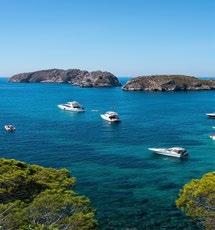
It was approved by the Balearic Parliament on 31 May and is one of the Government's key initiatives.
Among other things, it increases protection for chambermaids, as from 2023 hotels will have to offer elevating beds; companies are required to have a circularity plan; and finally, tourist establishments are obliged to consume a minimum of 3% local products. Hotels will be allowed to increase their volume by 15% in exchange for a 5% reduction in bed capacity. It even authorises a change of use so that they can be converted into housing.

In Parliament, only PP and VOX voted against. After weeks of tension between the government and hoteliers, the latter finally accepted it.
Las reservas marinas de la Illa del Toro y las Illes Malgrats han visto cómo aumentaba su área protegida multiplicándola hasta 13 veces. Pasan de 227 hectáreas a 2.952. Todo, gracias a la unificación y ampliación hasta la punta de Cala Figuera, según decisión del Govern. La medida ha sido celebrada por todas las partes afectadas: Ajuntament de Calvià, cofradías de Andratx y Palma y entidades conservacionistas.
El curso escolar arrancó estrenando Ley Educativa, aprobada en febrero, la primera propia de Balears. Una de las claves está en la autonomía que se otorga a los centros. El proyecto y la evaluación se tratarán en el propio centro. También incluye el propósito de la extensión progresiva de la educación 0-3 años. Progresivamente deberá ser universal y gratuita. La FP queda adaptada al tejido productivo de Balears y la FP dual se establecerá con contrato. La ratio de alumnos bajará un 10% por clase. Y el punto más polémico, el de la lengua: la única lengua vehicular será el catalán. El asunto trajo tensiones en el seno del Pacte porque el redactado inicial contemplaba que fueran vehiculares castellano y catalán. Finalmente se impuso la doctrina de Més.
The school year began with the launch of the new Education Law.
One of the key points is the autonomy granted to schools. The project and evaluation will be dealt with at the centre itself. It also includes the aim of the progressive extension of 0-3 year old education. It should progressively be universal and free. The student ratio will be reduced by 10% per class. And the most controversial point, the language: Catalan will be the only one used as a vehicular. The issue caused tensions within the Pacte because the initial draft envisaged that Spanish and Catalan would be the vehicular languages.
The new marine reserves of Illa del Toro and Illes Malgrats have seen their protected area increase this year by 13 times, from the previous 227 hectares to 2,952 hectares, thanks to the unification and extension up to the point of Cala Figuera, as decided by the Govern.
The measure has been celebrated by all the affected parties: Calvià Town Council, the Andratx and Palma fishermen's associations and conservationist organisations.
Las grietas aparecidas en la recién aprobada Ley de Garantía de la Libertad Sexual (conocida como la ley del ‘solo sí es sí’) ha permitido un goteo incesante de casos de rebajas de pena de algunos condenados por delitos sexuales. Dos se han dado en Balears y en España ya se supera la quincena de peticiones, incluida la de un miembro de ‘La Manada’.
La ministra de Igualdad, Irene Montero, arremetió enseguida contra los jueces a los que acusó de “machismo” y de “incumplir” la ley. Un ataque con el que se puso en contra a toda la carrera judicial, le ha valido el reproche de la parte socialista del Gobierno, de algunos barones autonómicos socialistas e incluso de los socios de investidura en el Congreso. Y, cómo no, de toda la oposición.

A falta aún de algunas semanas para que finalice el año, la proyección de los datos anuncia que es muy probable que en 2022 Balears supere su récord histórico de llegada de pateras. Durante todo 2021, el año del récord, llegaron a nuestras costas 164 pateras con 2.402 inmigrantes a bordo interceptados por las Fuerzas y Cuerpos de Seguridad. En 2022, y sin acabar el año, ya han entrado 148 embarcaciones
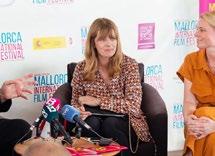
Una vida dedicada al cine con más de 60 películas (Paris, Texas; Tess; El beso de la pantera…). La actriz alemana recibió en octubre el Premi de Cine Mallorca en la gala inaugural del Evolution.
law puts Irene Montero on the ropes
The cracks that have appeared in the Law to Guarantee Sexual Freedom (known as the 'only yes is yes' law) have allowed a trickle of cases of reduced sentences for some convicted sex offenders. Two have been granted in the Balearic Islands and in Spain there are already more than 15 requests, including one member of 'La Manada'. The Minister for Equality, Irene Montero, immediately lashed out against the judges, accusing them of "machismo" and "breaking" the law. An attack with which she turned against the entire judicial career, has earned her the reproach of the socialist party and even of her investiture partners in Congress.
de este tipo con 2.143 inmigrantes. Lo que era un fenómeno esporádico ya es a todas luces una ruta consagrada, la que tiene su origen en Argelia. Las distintas detenciones de patrones y los juicios con condena a todos ellos no han reducido la presión.
The arrival of small boats in the Balearic Islands, at a record pace
With still a few weeks to go before the end of the year, the projection of the data announces that it is very likely that in 2022
Kinski lleva años alejada de la gran pantalla pero aprovechó su visita a Palma para anunciar el estreno de Los satélites silenciosos, un film con 10 actores protagonistas, entre los que está este mito del cine que ha trabajado con Francis Ford Coppola, David Lynch o Roman Polanski.
A life dedicated to cinema with more than 60 films (Paris, Texas; Tess; Cat People...). In October, the German actress received the Premi de Cine Mallorca at the inaugural gala of Evolution.
Kinski has been away from the big screen for years, but she took advantage of her visit to Palma to announce the premiere of The Silent Satellites, a film starring 10 actors, including this film legend who has worked with Francis Ford Coppola, David Lynch and Roman Polanski.
the Balearic Islands will surpass its record of arrivals of small boats. Throughout 2021, the record year, 164 small boats arrived at our coasts with 2,402 immigrants on board intercepted by the Security Forces. In 2022, and before the end of the year, 148 boats of this type have already entered with 2,143 immigrants. What was once a sporadic phenomenon is now clearly an established route, the one that originates in Algeria. The various arrests of skippers and the trials and convictions of all of them have not reduced the pressure.
Gran Bretaña y el mundo despiden a Isabel II. 96 años de vida y 70 de reinado. La noticia llegó el 8 de septiembre cuando se confirmó el fallecimiento de la reina Isabel II, la más longeva de la historia bajo una corona. Reino Unido llevaba años protocolizando y ensayando ese momento. Los funerales reunieron a la realeza y los jefes de Estado de todo el mundo.

Britain and the world bid farewell to Elizabeth II. 96 years of life and 70 years of reign. The news came on 8 September when it was confirmed that the longest reigning Queen in history, had passed away. The United Kingdom had been protocolising and rehearsing this moment for years. The funeral brought together royalty and heads of state from around the world.
Dos mallorquines campeones del mundo el mismo año. Solo ha faltado MotoGP para el triplete mallorquín en el Mundial de motociclismo. Izan Guevara y Augusto Fernández han firmado dos títulos para la historia del deporte en Mallorca. Izan Guevara, con tan solo 18 años. Por su parte, Augusto Fernández tuvo que esperar al Gran Premio de Valencia para coronarse campeón mundial en Moto2.

Los carteles eran muy buenos o había ganas acumuladas. El Mallorca Live Festival ha batido récords. Colgó el cartel de sold out el concierto de Rosalía en Son Fusteret y Port Adriano llenó con Texas.
Music festivals break records after the pandemic Either the line-ups were very good or there was a pent-up desire. The Mallorca Live Festival has beaten records. Rosalía's concert in Son Fusteret was sold out and Port Adriano was packed with Texas.

Two Mallorcan world champions in the same year. Only MotoGP was missing for the Mallorcan triplet in the motorcycling world championship. Izan Guevara and Augusto Fernández have signed two titles for the history of the sport in Mallorca. Izan Guevara, at only 18 years of age. For his part, Augusto Fernández had to wait until the Valencia Grand Prix to be crowned world champion in Moto2.
El Pleno del Consell de septiembre aprobó el polémico patrocinio al Real Mallorca ampliando la ayuda al Atlético Baleares y a los clubs semiprofesionales y de deporte base de la isla. Tras semanas de alta tensión política entre los socios del Pacte, lo que iba a ser un patrocinio del Real Mallorca en exclusiva ha acabado siendo un plan para subvencionar tam-
bién al Atlético Baleares y al resto de clubs. Més llegó a amagar con salir del gobierno del Consell. Finalmente no lo hizo pero acabó votando en contra con VOX y el PP. La ayuda a Mallorca y Atlético Baleares será por un importe de 1,17 millones. A favor del resto se movilizarán unos 850.000 euros.
Controversial subsidy to RCD Mallorca extended to other clubs
The September plenary session of the Consell approved the controversial sponsorship of Real Mallorca, extending aid to Atlético
Baleares and the island's semi-professional and youth sports clubs. After weeks of high political tension between the members of the Pacte, what was to be an exclusive sponsorship of Real Mallorca has ended up being a plan to also subsidise Atlético Baleares and the rest of the clubs. Més even threatened to leave the Consell government. In the end it did not do so, but ended up voting against with VOX and the PP. The aid to Mallorca and Atlético Baleares will amount to 1.17 million. Some 850,000 euros will be mobilised in favour of the rest.
El ciclista artanenc ha ido de menos a más. Decepcionó en el Tour de Francia. Sin embargo, volvió a ‘pisar cajón’ en la Vuelta a España con un meritorio segundo puesto. Era otro Enric Mas, especialmente desde que tras una etapa se encaró con un aficionado que le llamó ‘paquete’. Entonces conocimos a otro Enric. Mas es una de las grandes esperanzas del ciclismo para 2023.





The Artanenc cyclist has gone from worse to better. He was a disappointment in the Tour de France. However, he returned to the podium in the Tour of Spain with a second place. He was another Enric Mas, especially since after he got into a fight with a fan who called him a 'numskull'. Then we met another Enric. Mas is one of cycling's great hopes for 2023.
Rafa Nadal, padre y gran amigo. 2022 ha instalado a Rafa Nadal en una montaña rusa. En primavera estuvo muy cerca de volver a coronarse como número 1 del mundo. El gran momento mediático se produjo en el partido despedida de Roger Federer. Mientras, Mery Perelló ingresaba en una clínica de Palma para evitar complicaciones con su embarazo hasta dar a luz a Rafael. Por si le faltaba algo al 2022, Rafa y Mery lanzan un nuevo perfume. Y no será barato.




Rafa Nadal, father and great friend. 2022 has put Rafa Nadal on a rollercoaster ride. In the spring he came very close to being crowned world number one again. The big media moment came at Roger Federer's farewell match. Meanwhile, Mery Perelló was admitted to a clinic to avoid complications with her pregnancy until she gave birth to Rafael. As if 2022 was missing anything, Rafa and Mery are launching a perfume on the market. And it won't be cheap.



